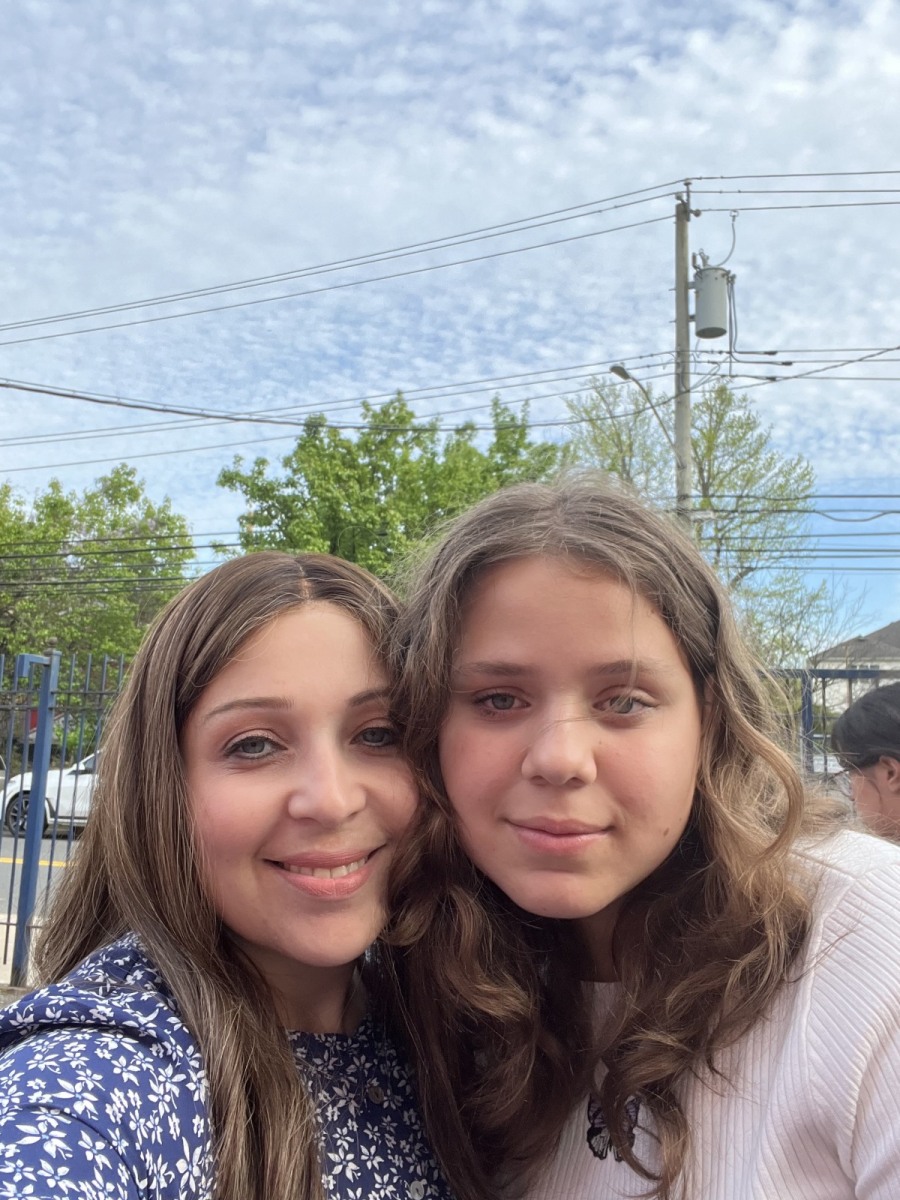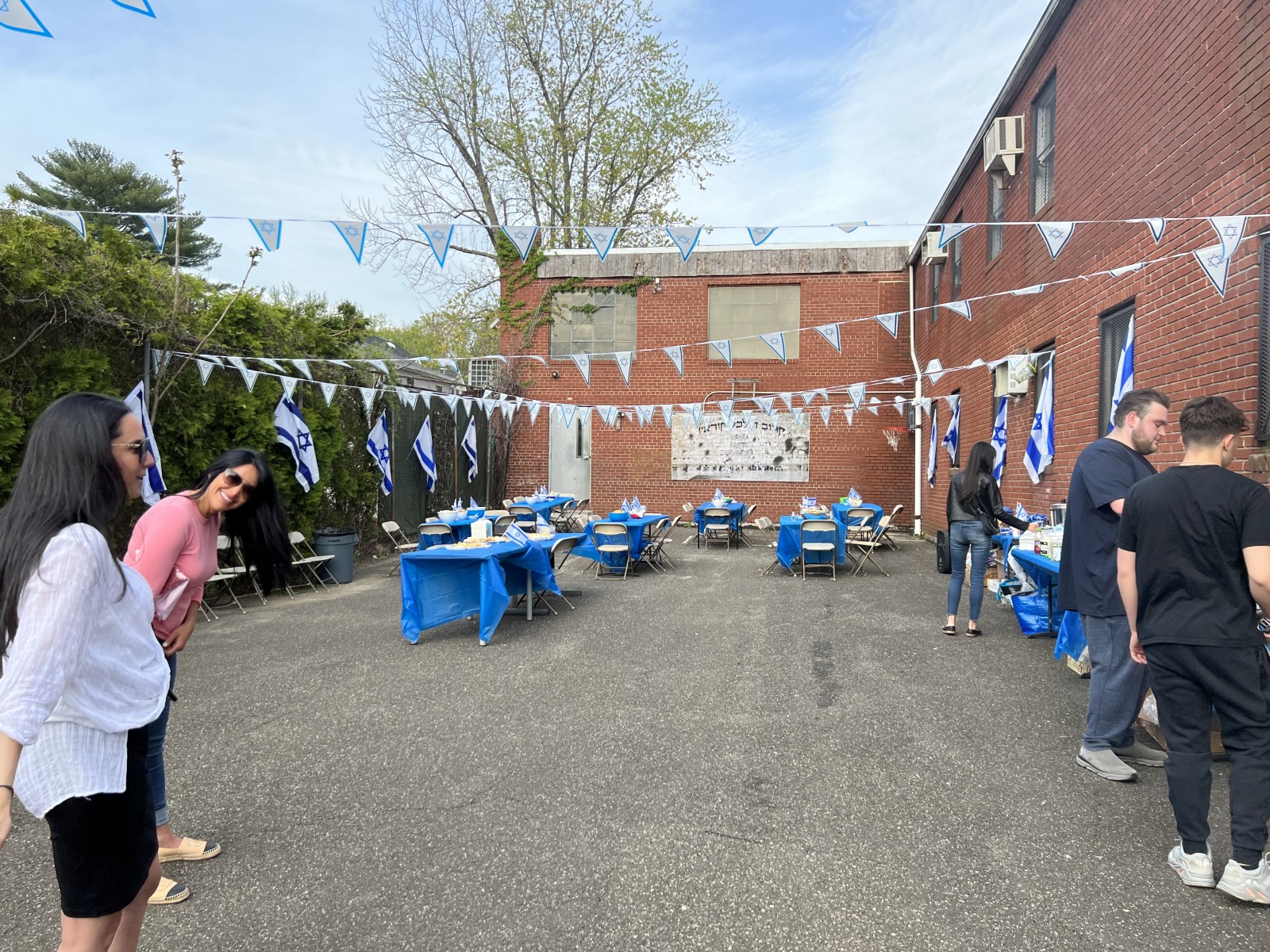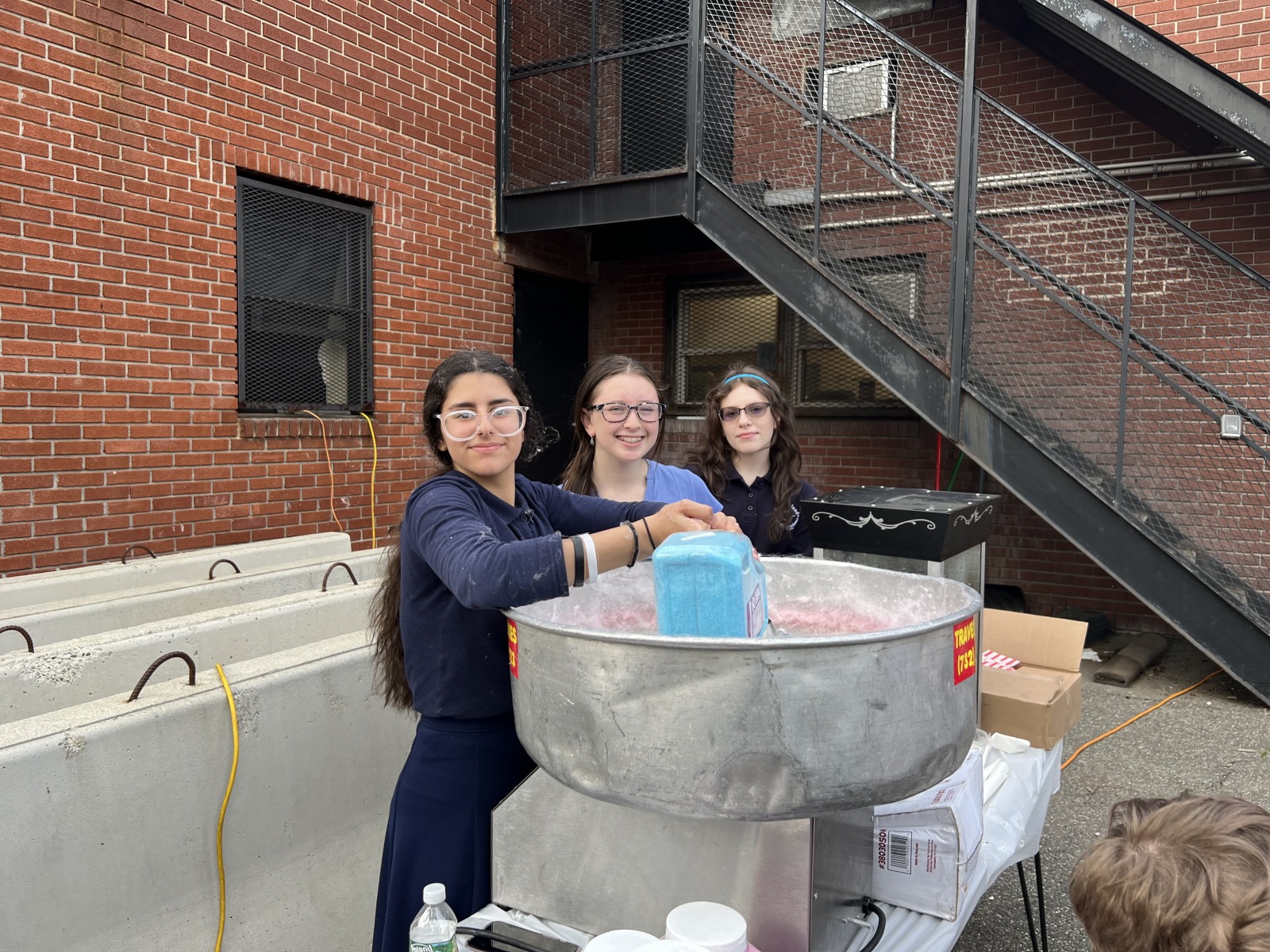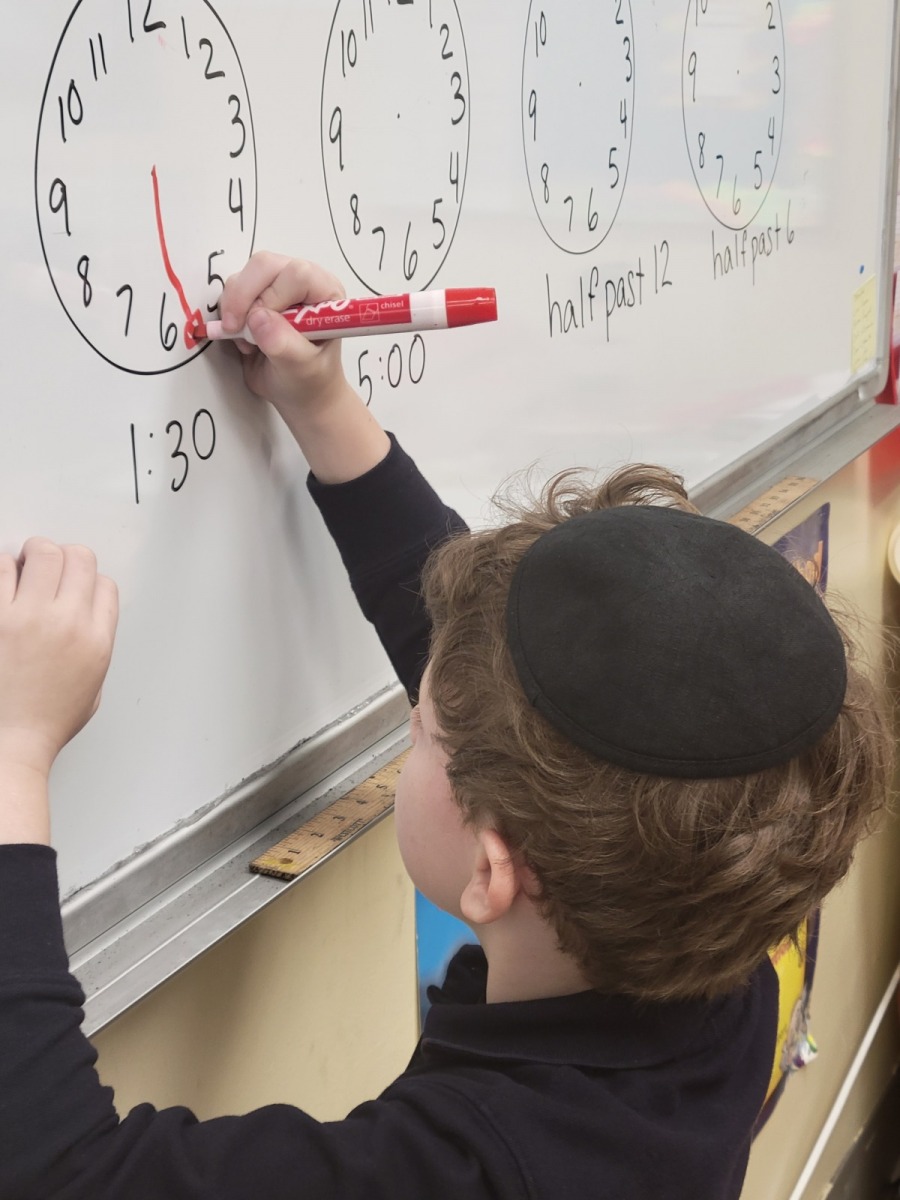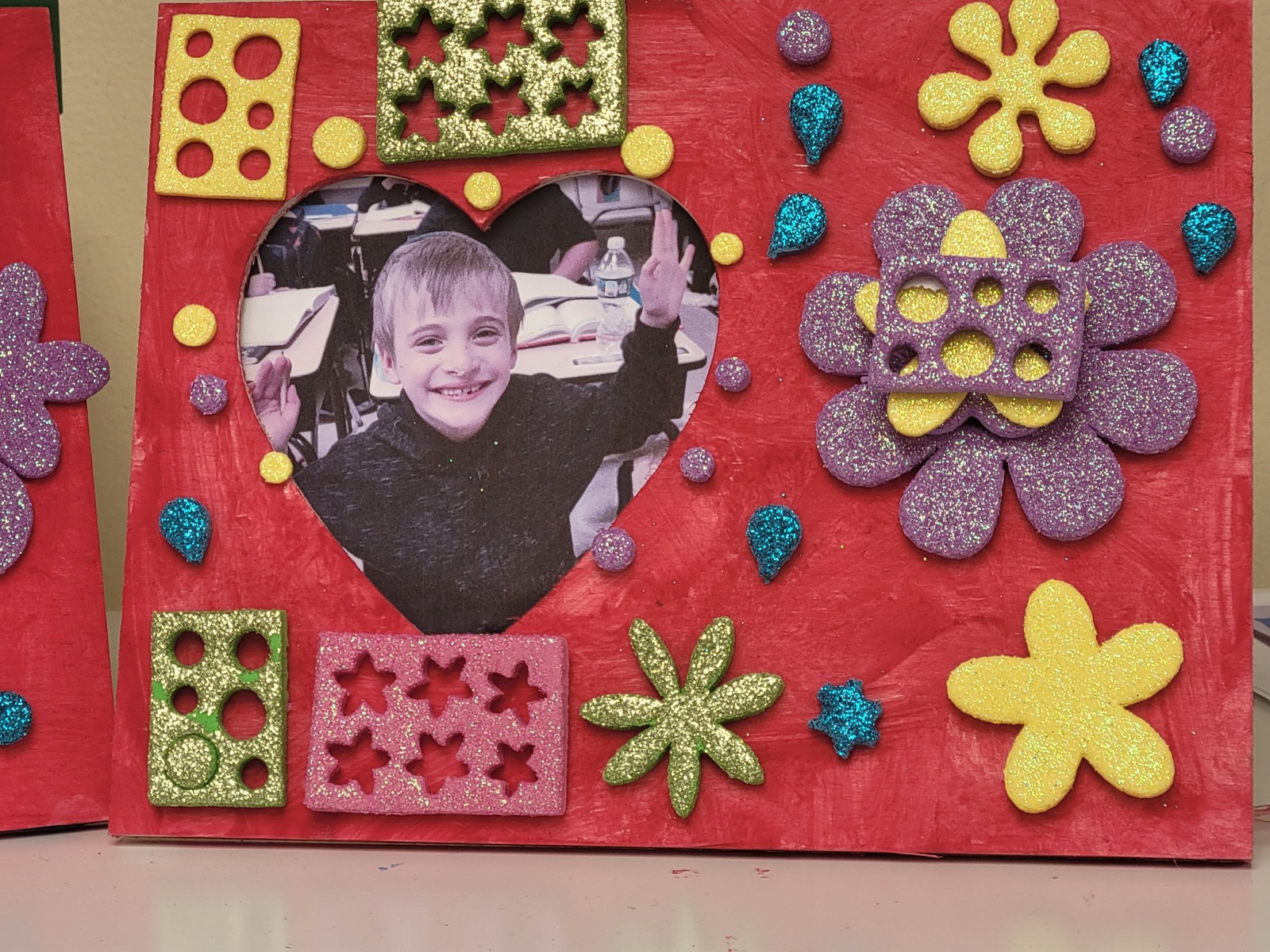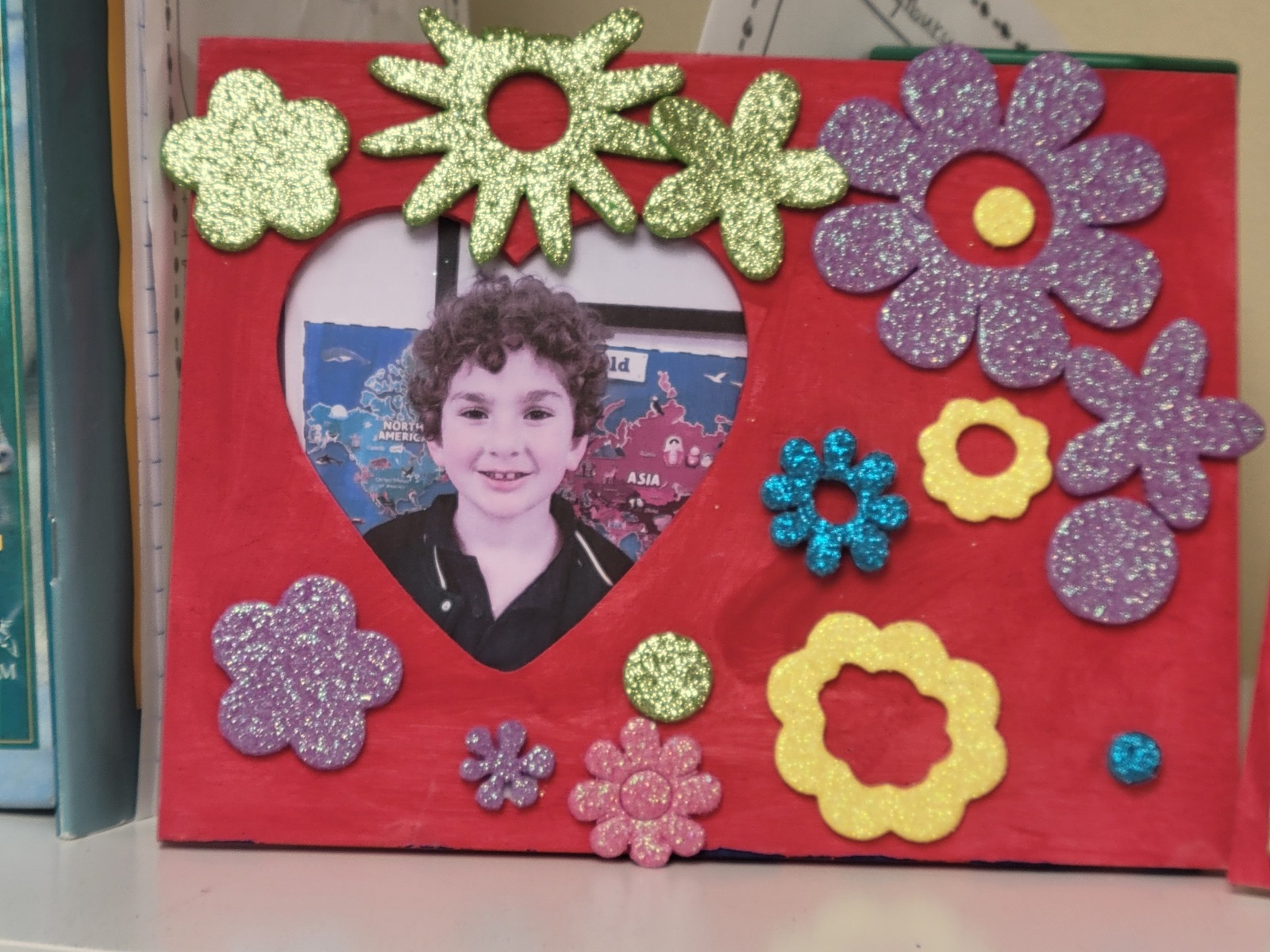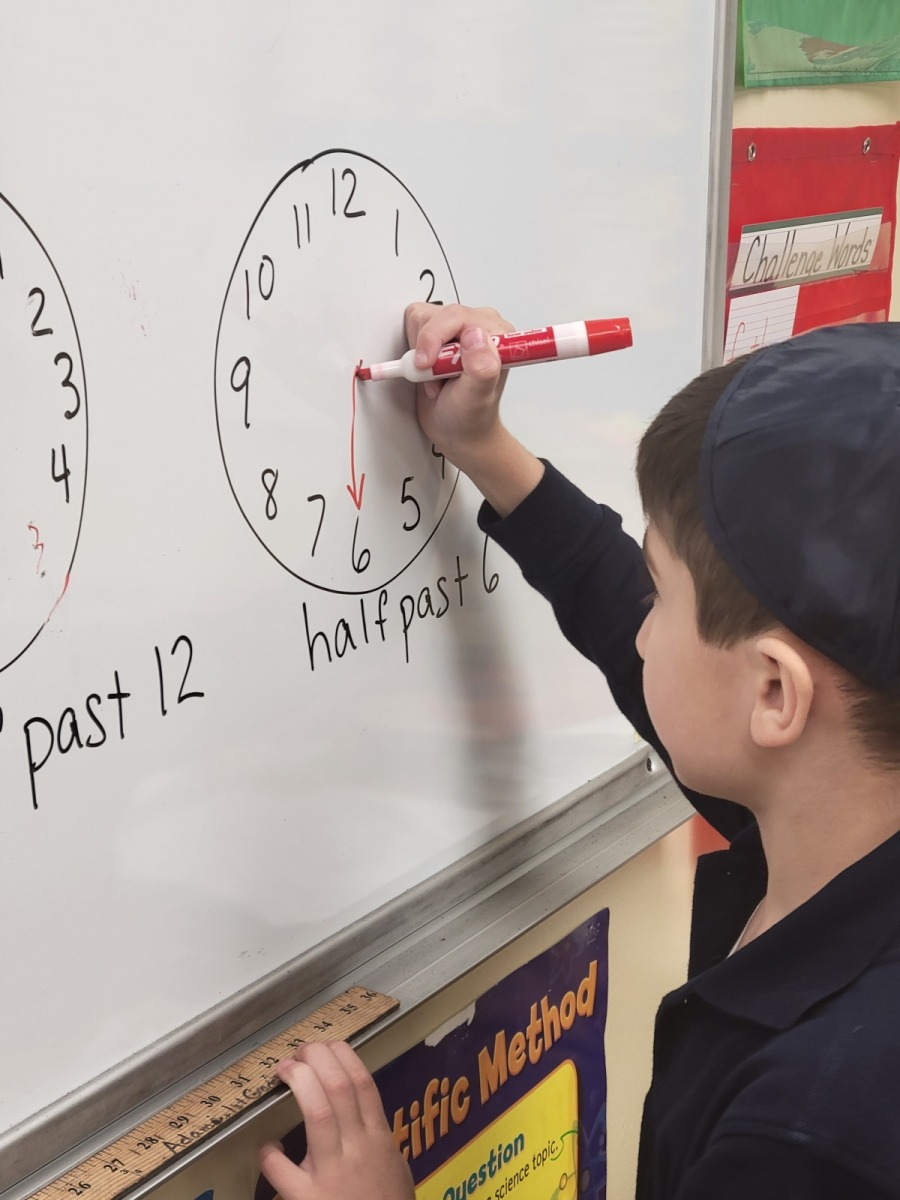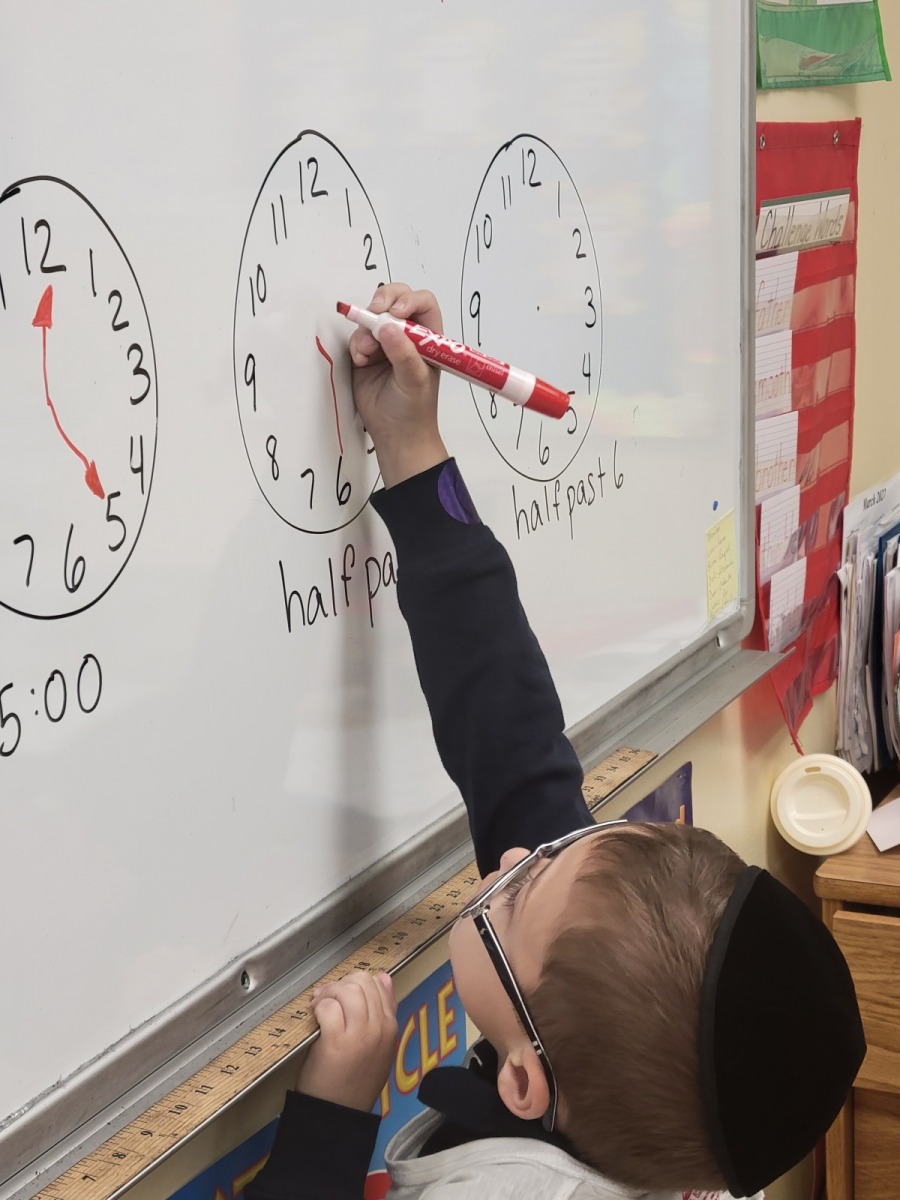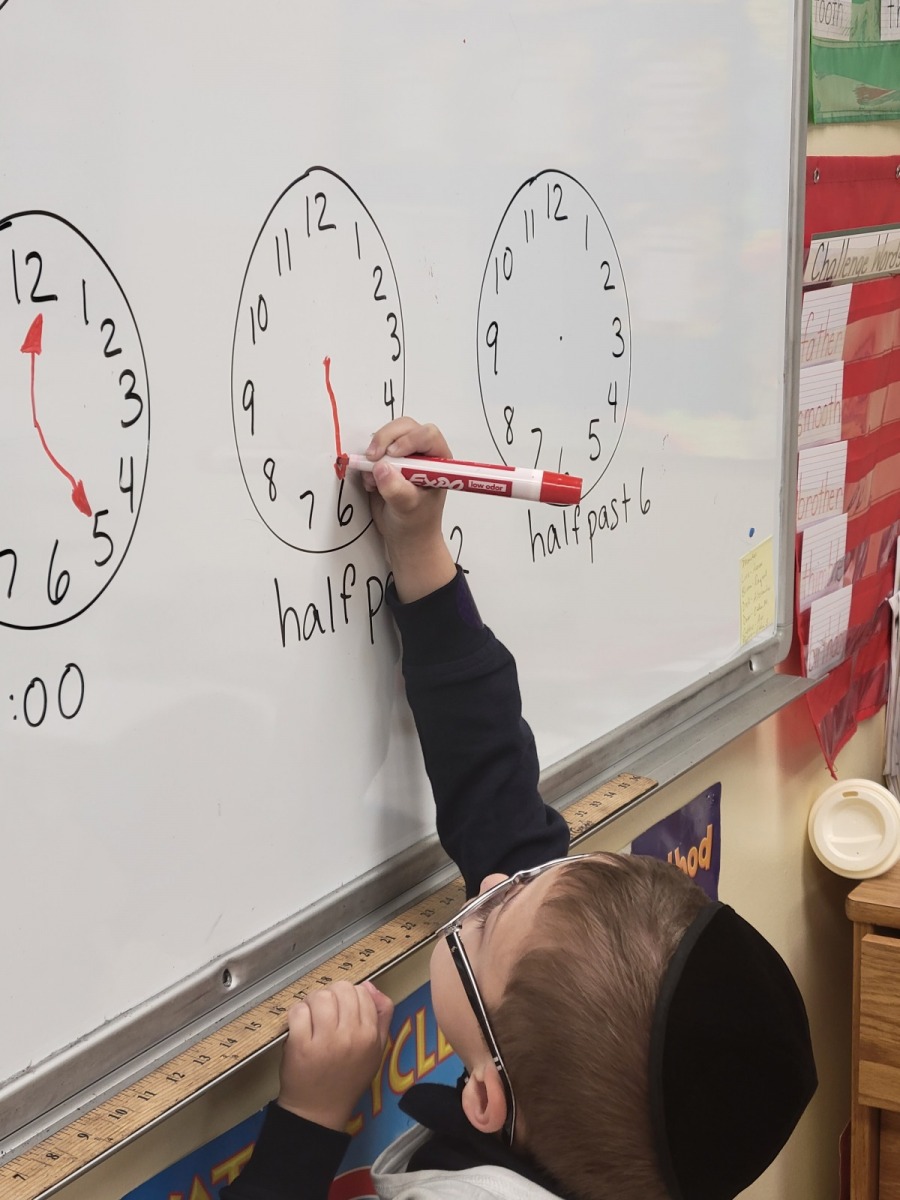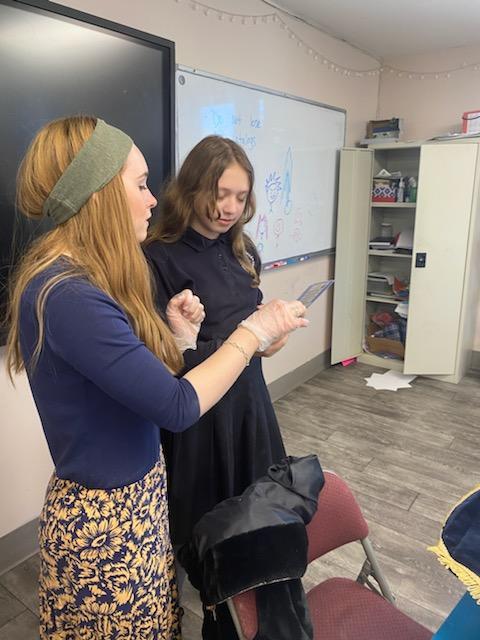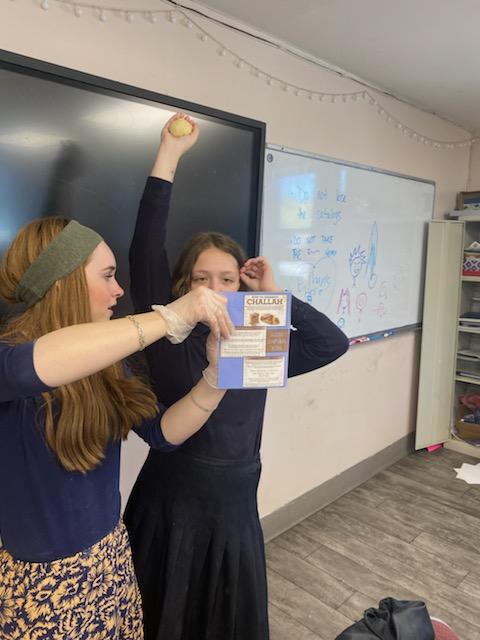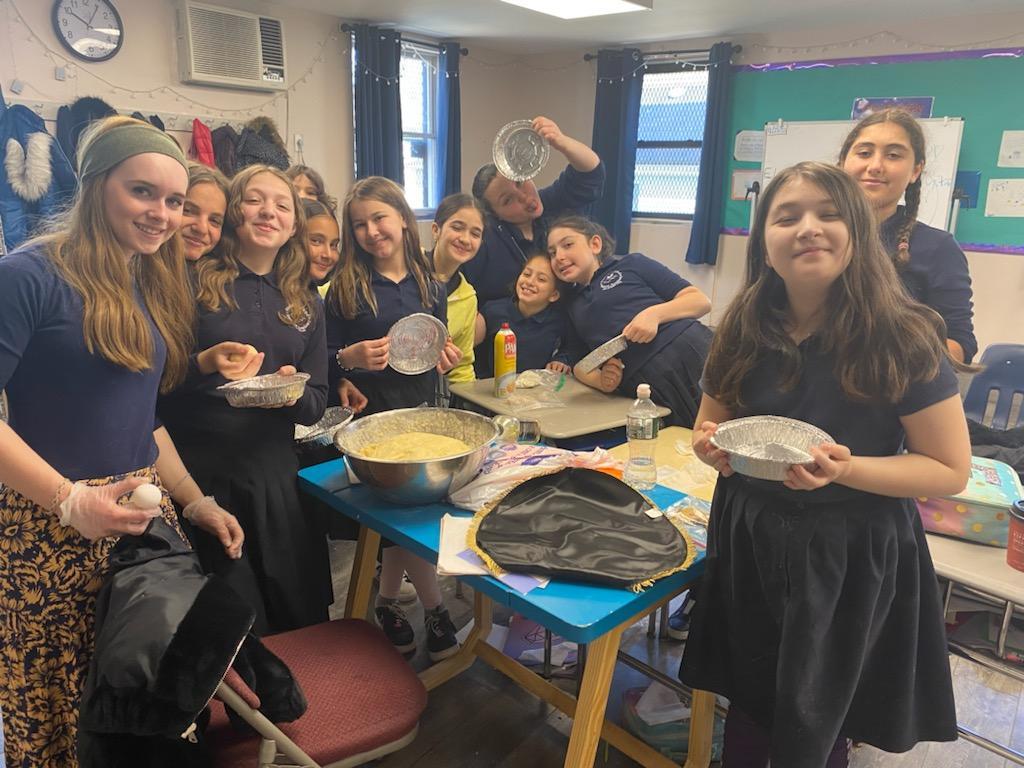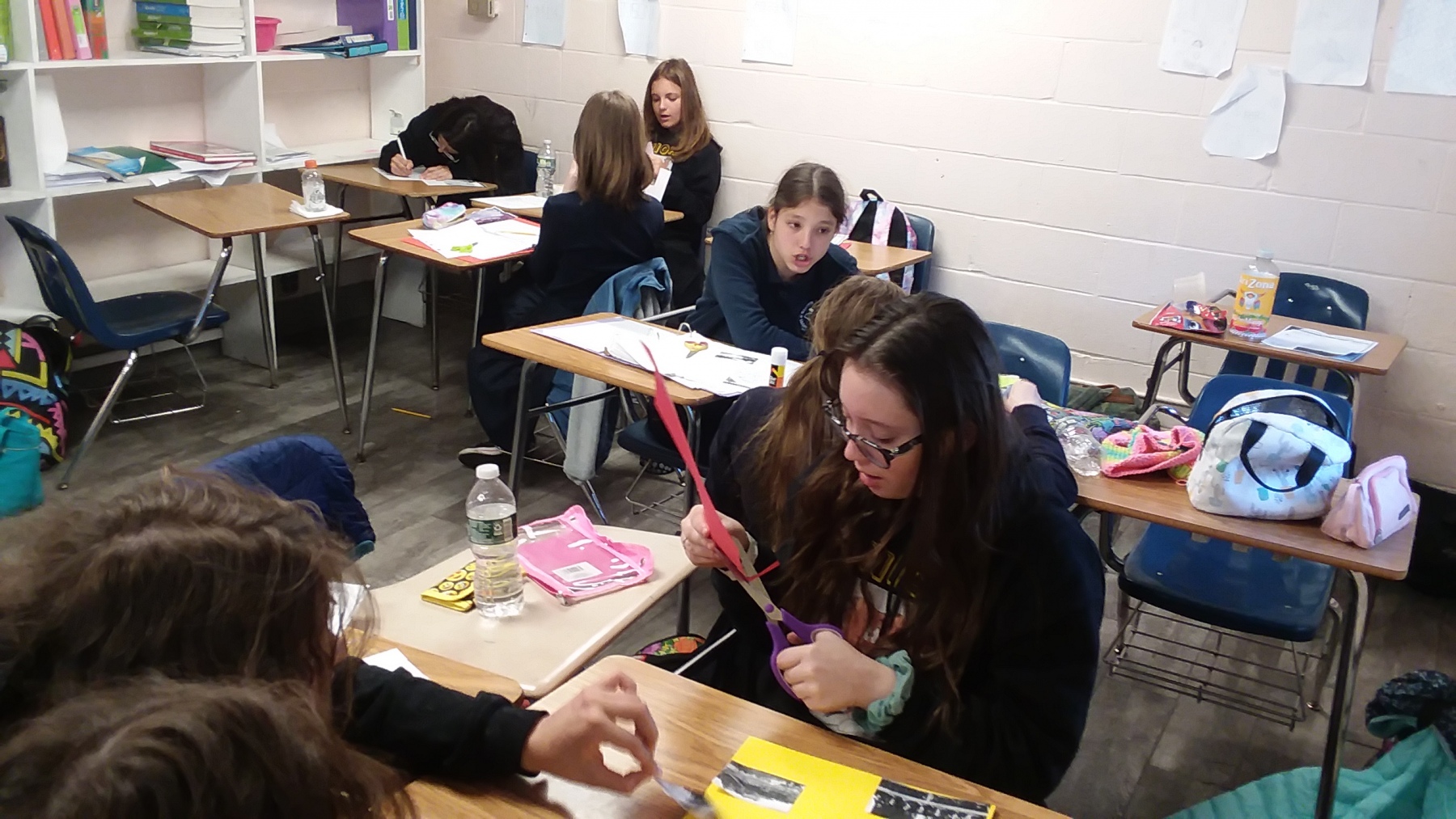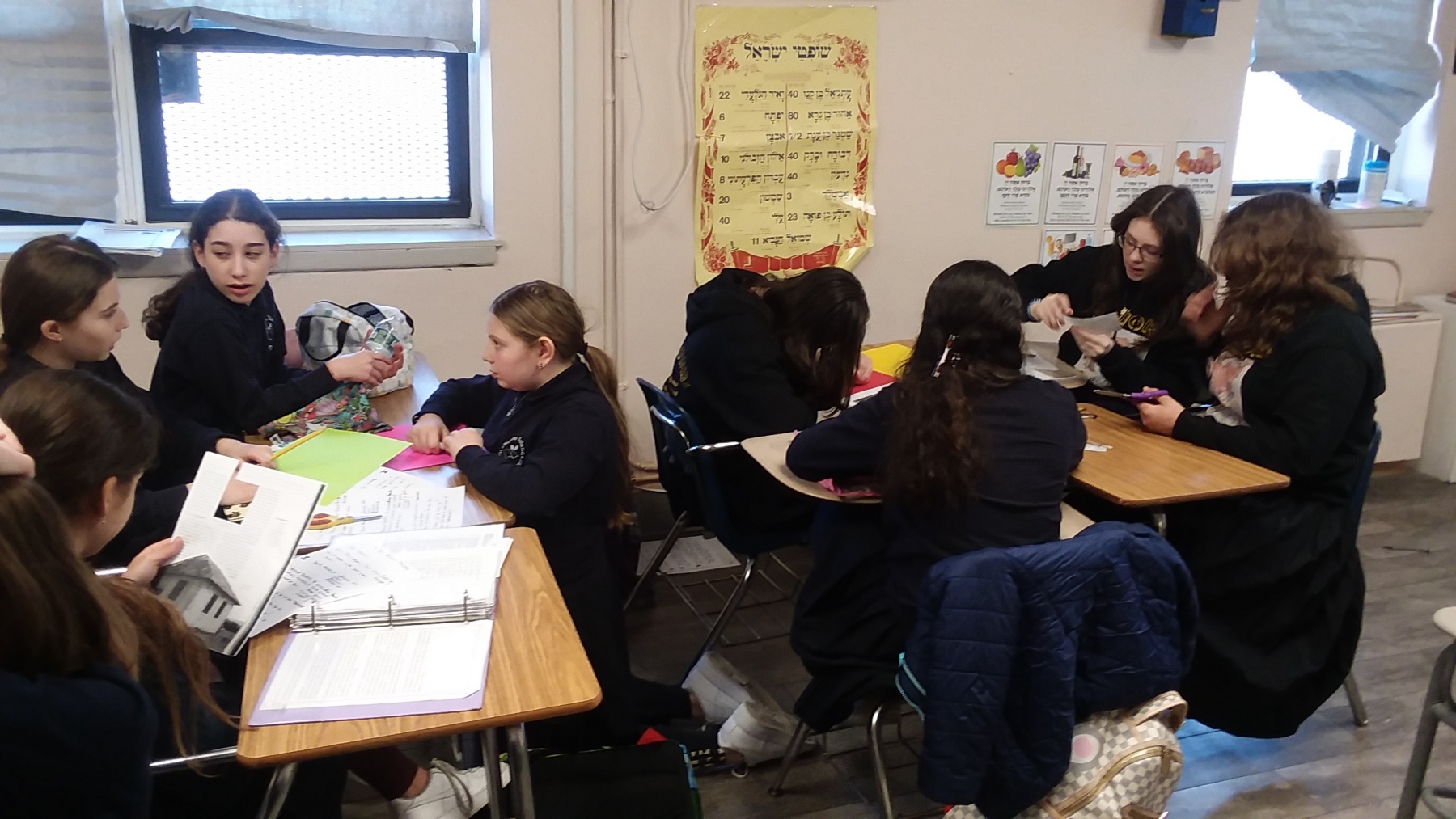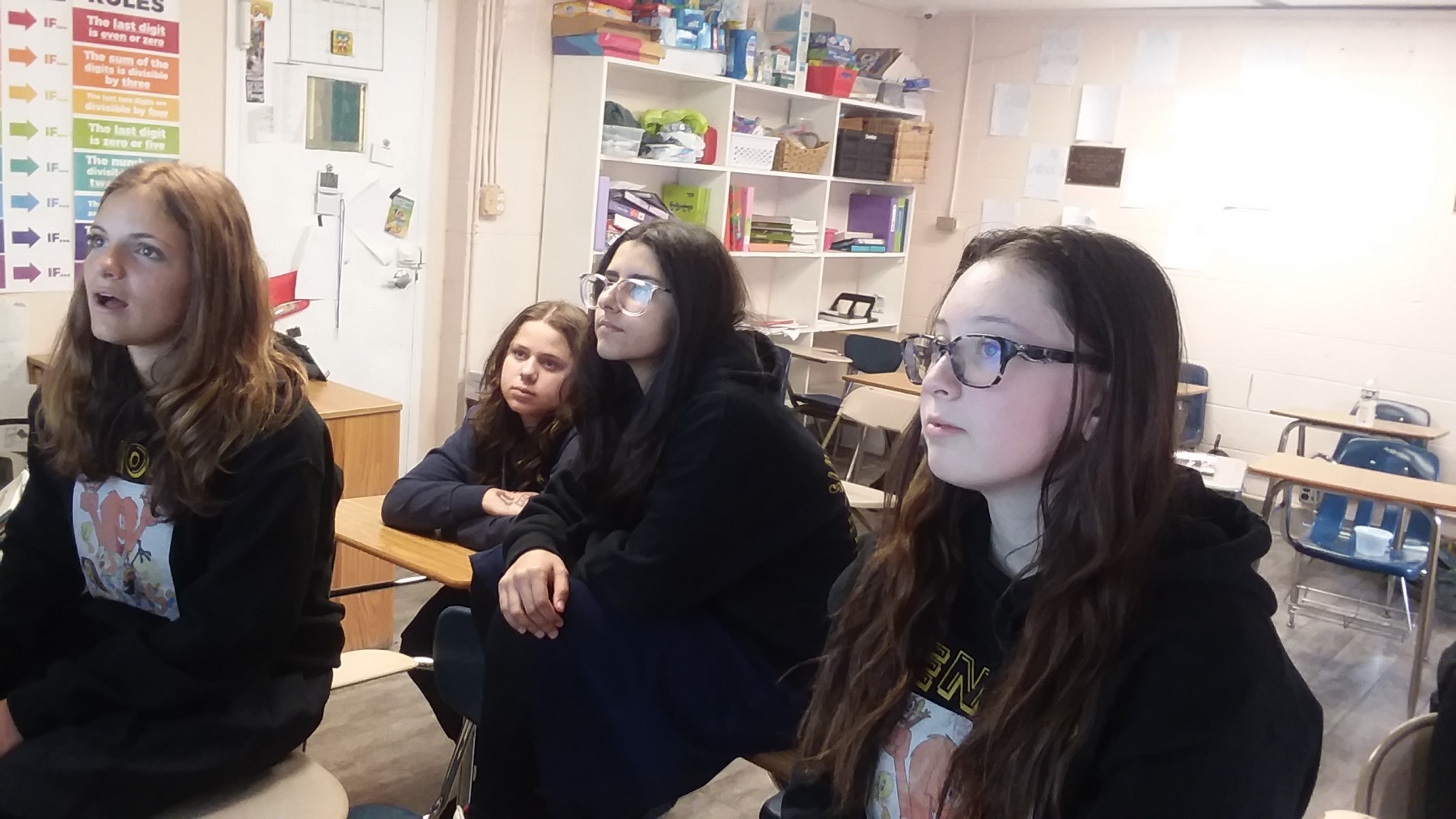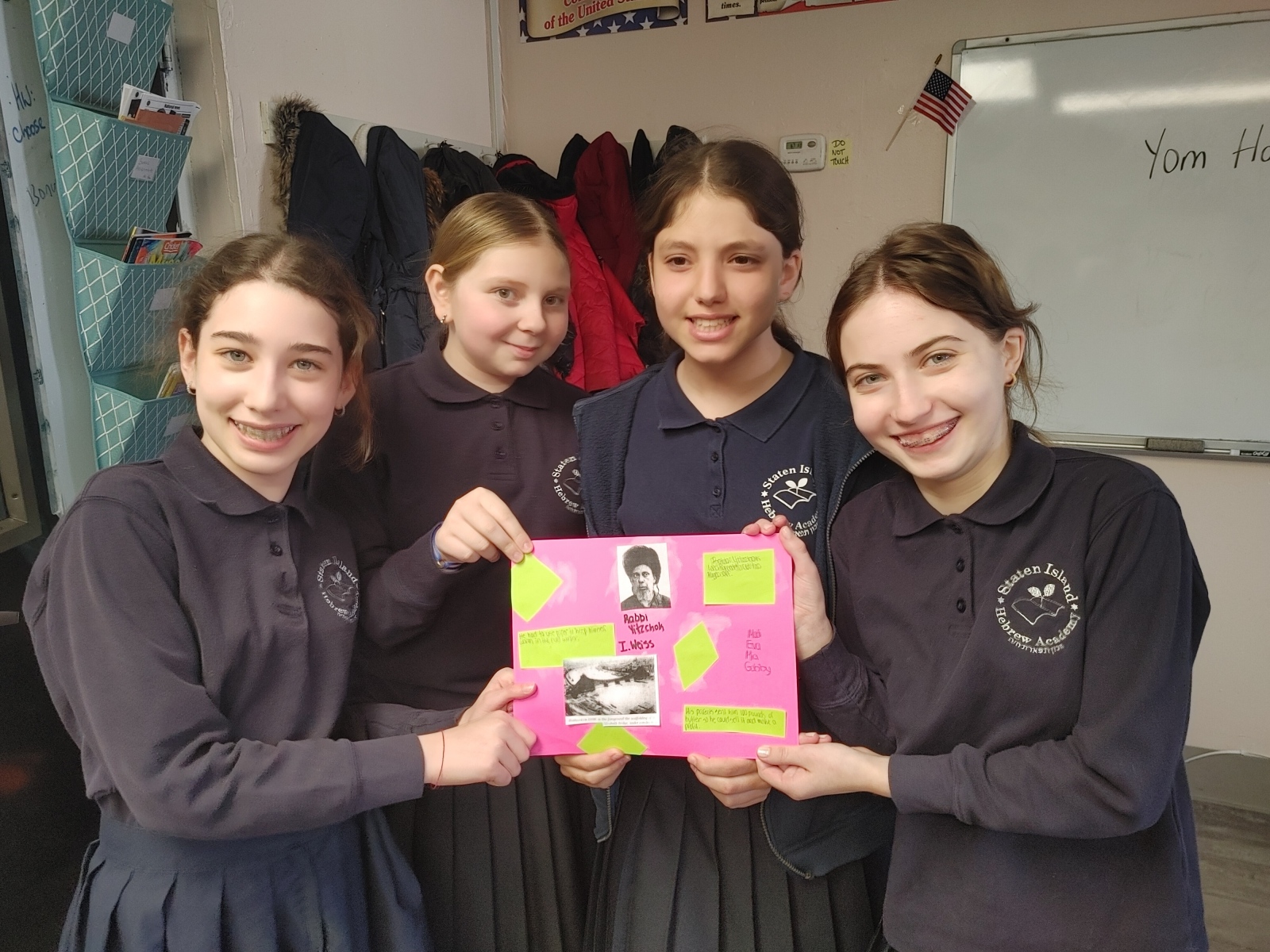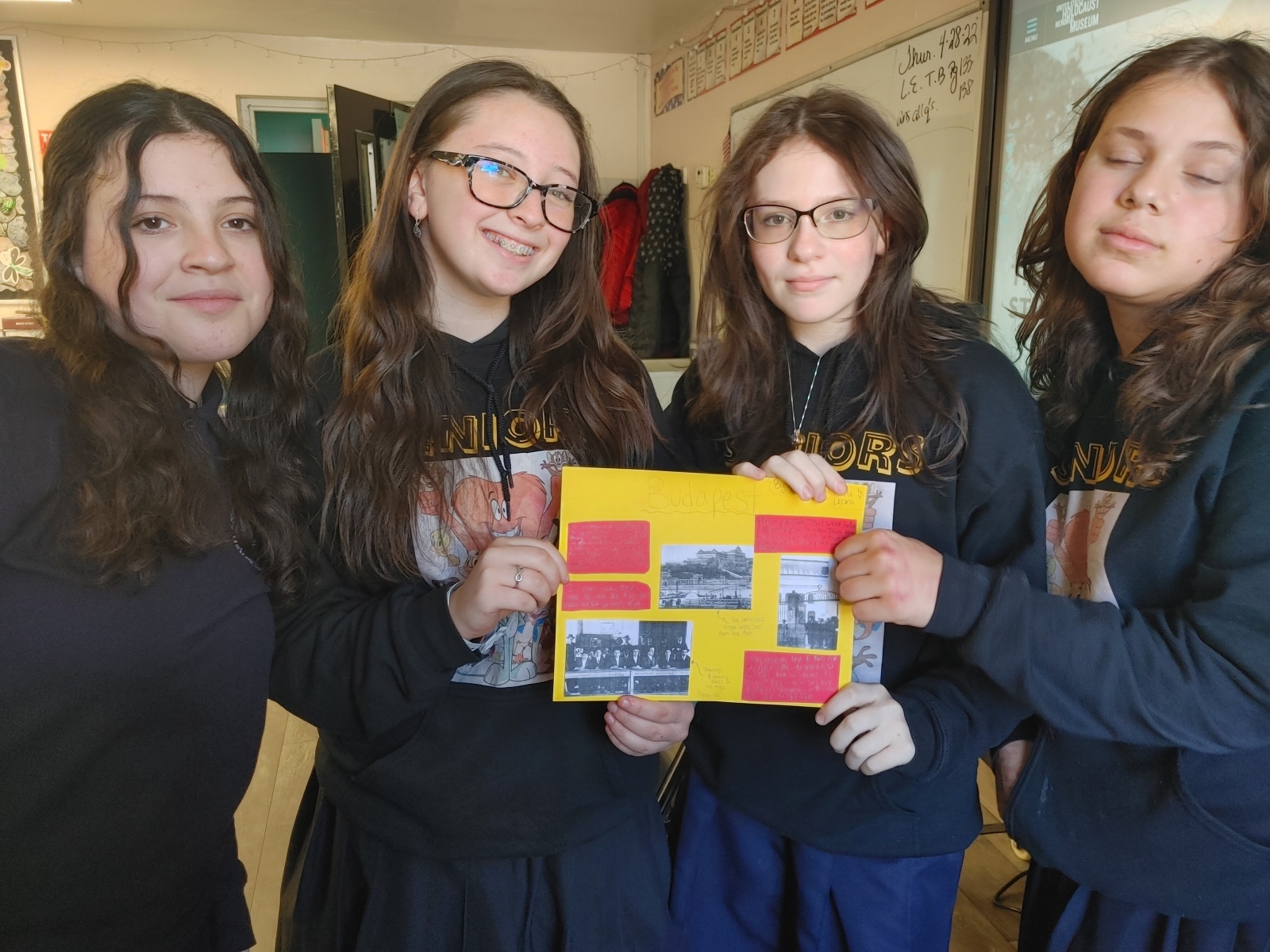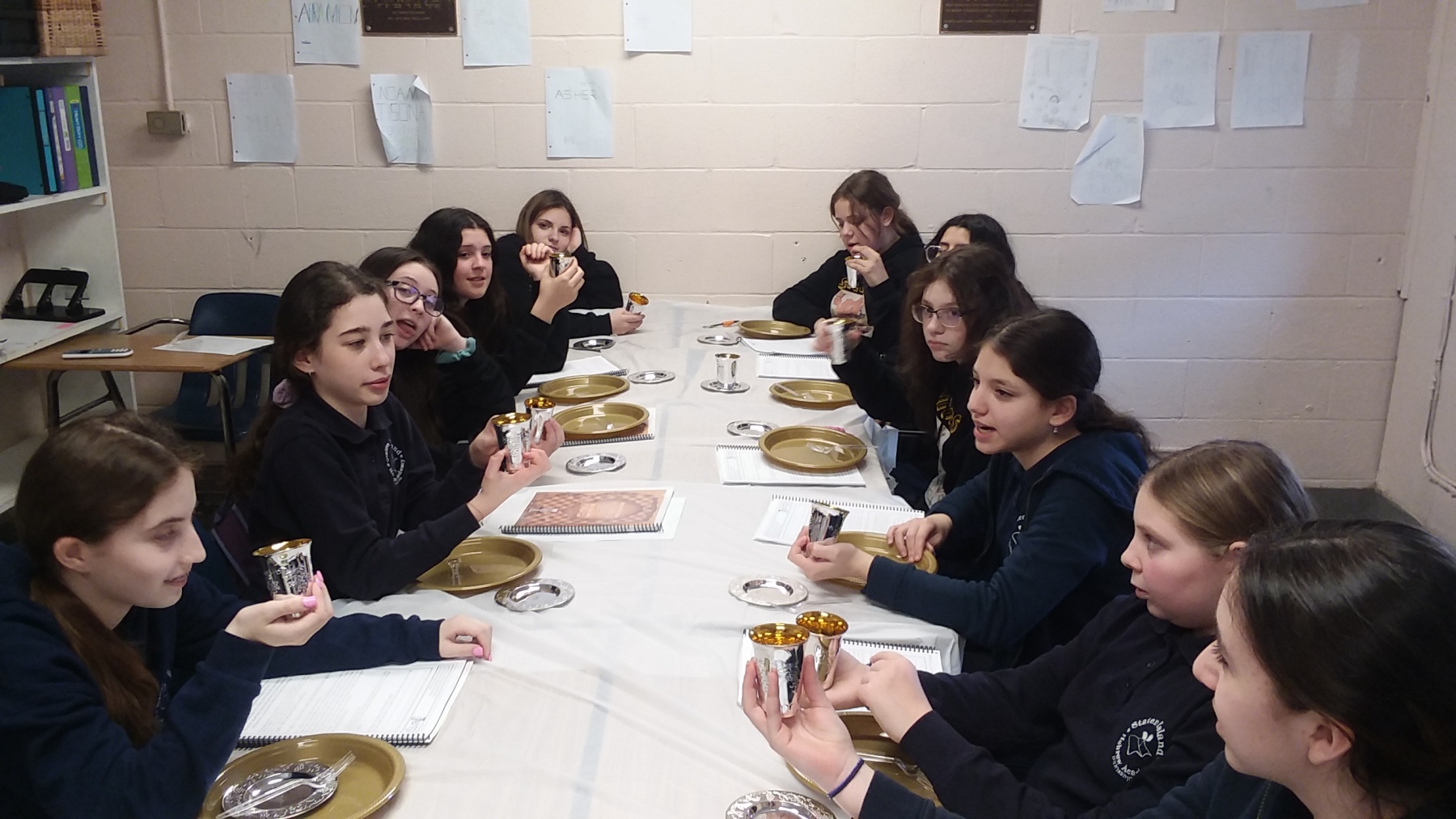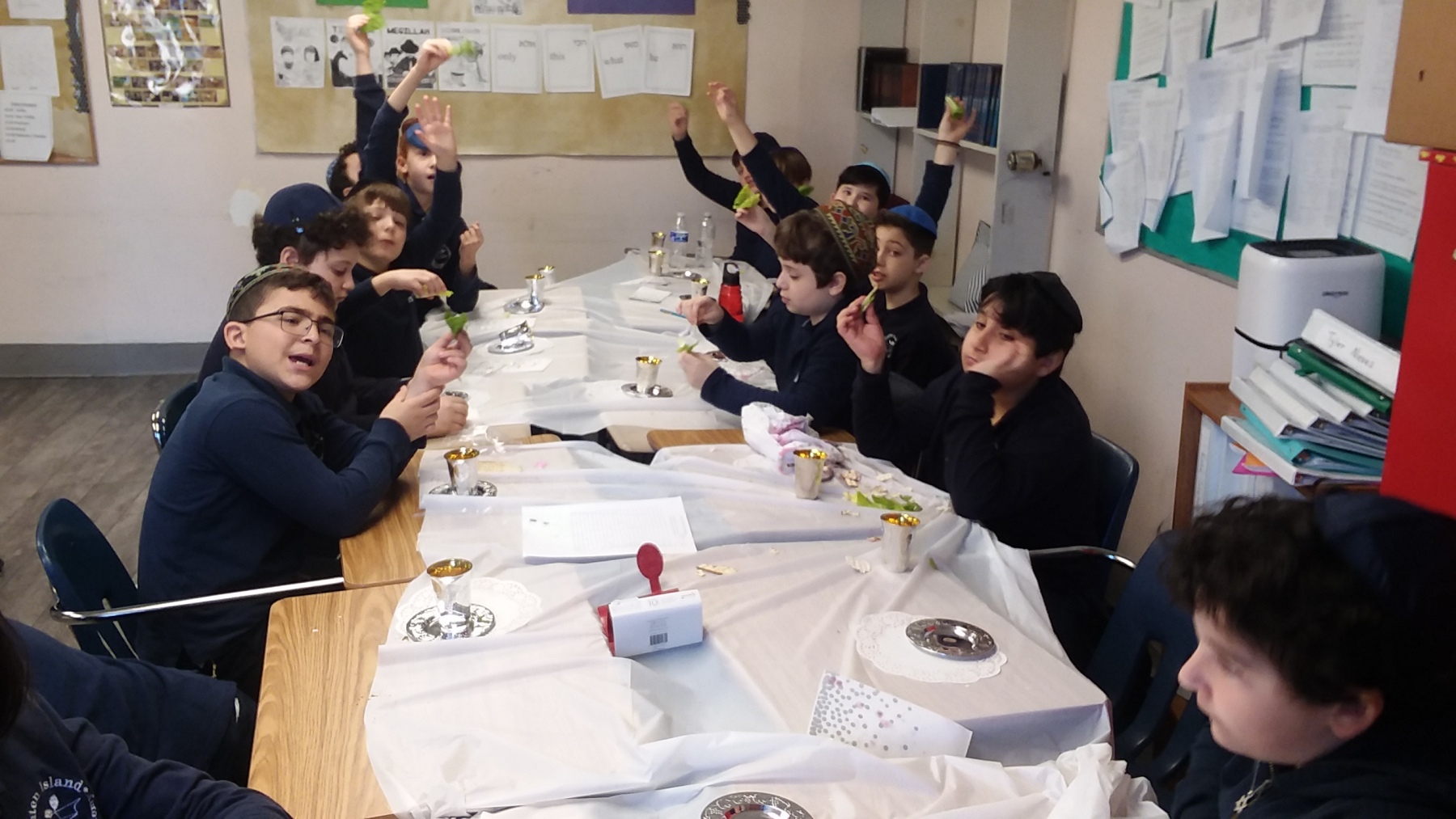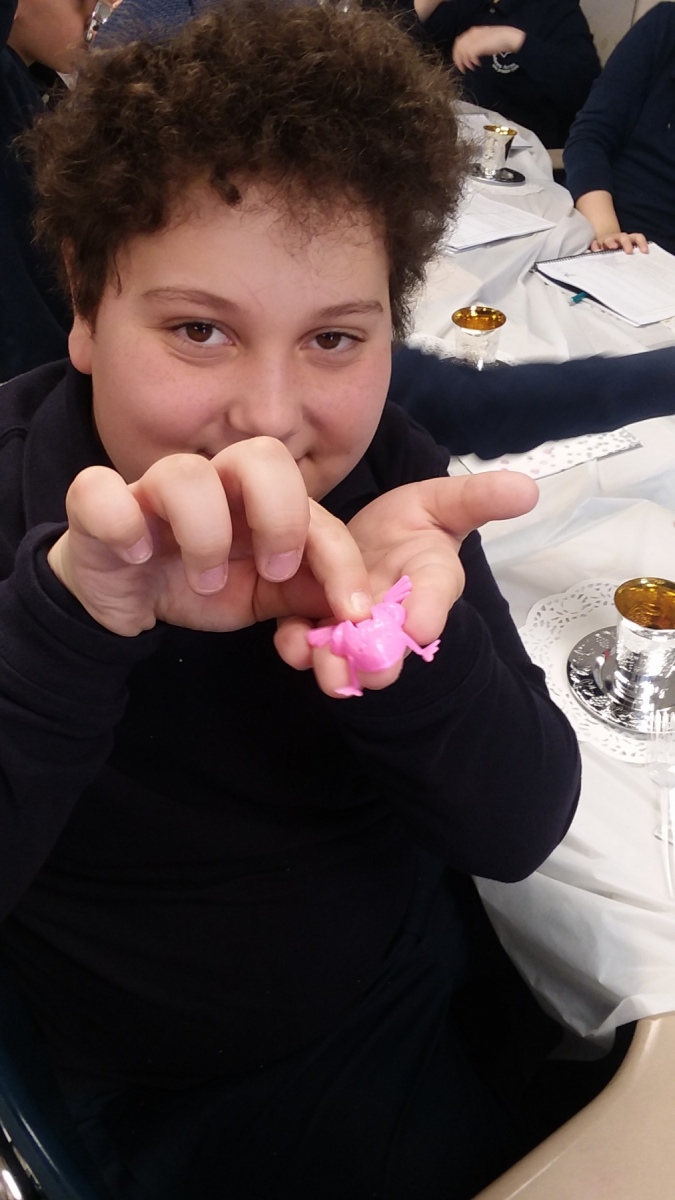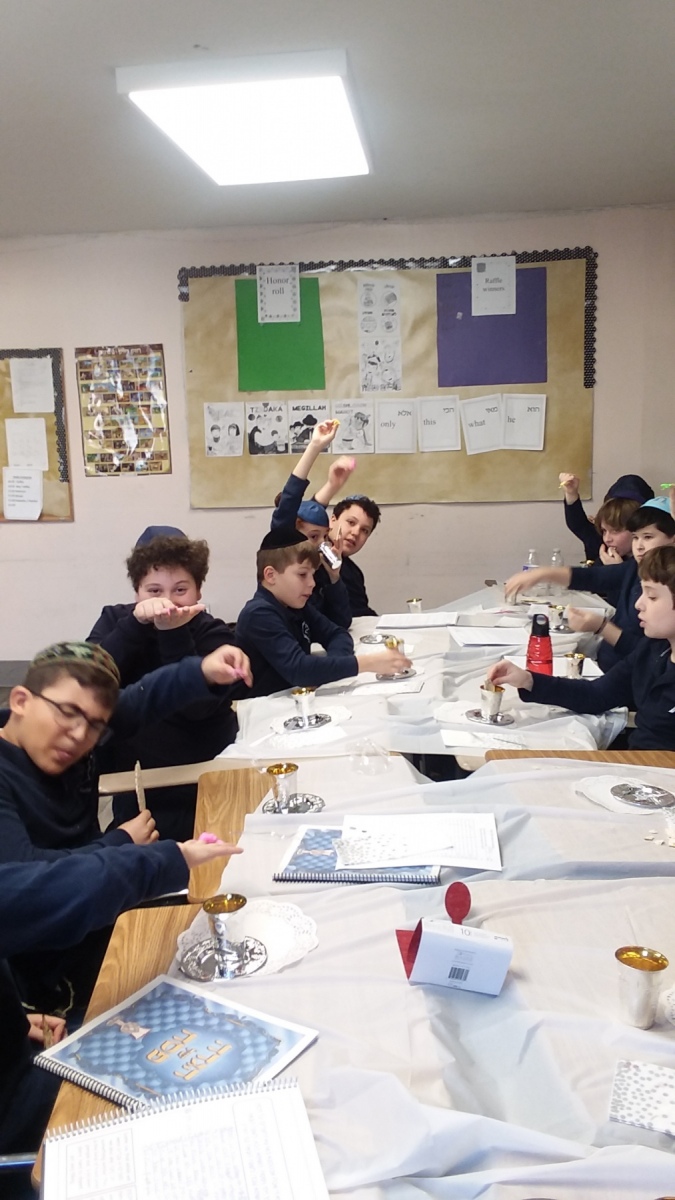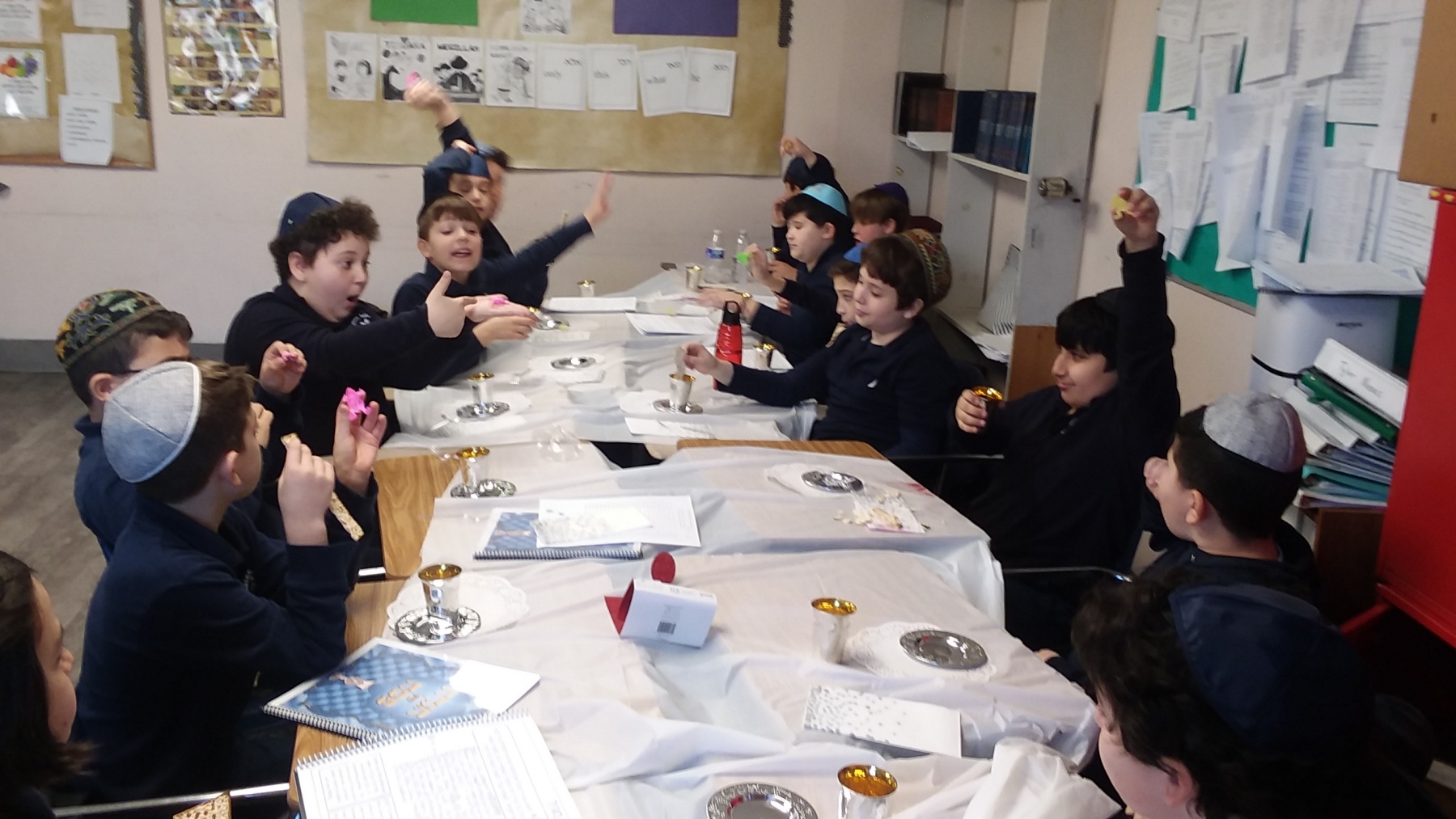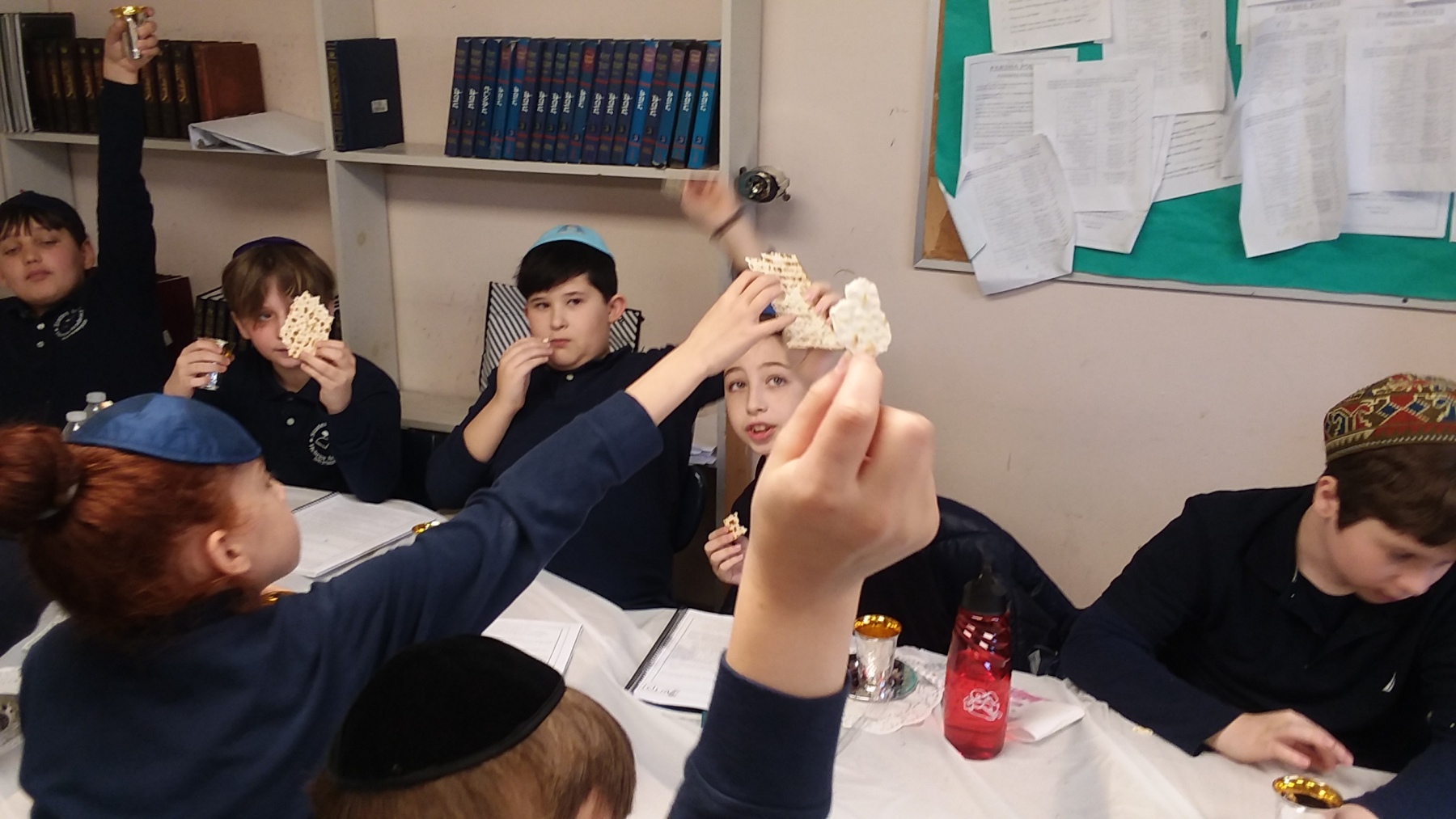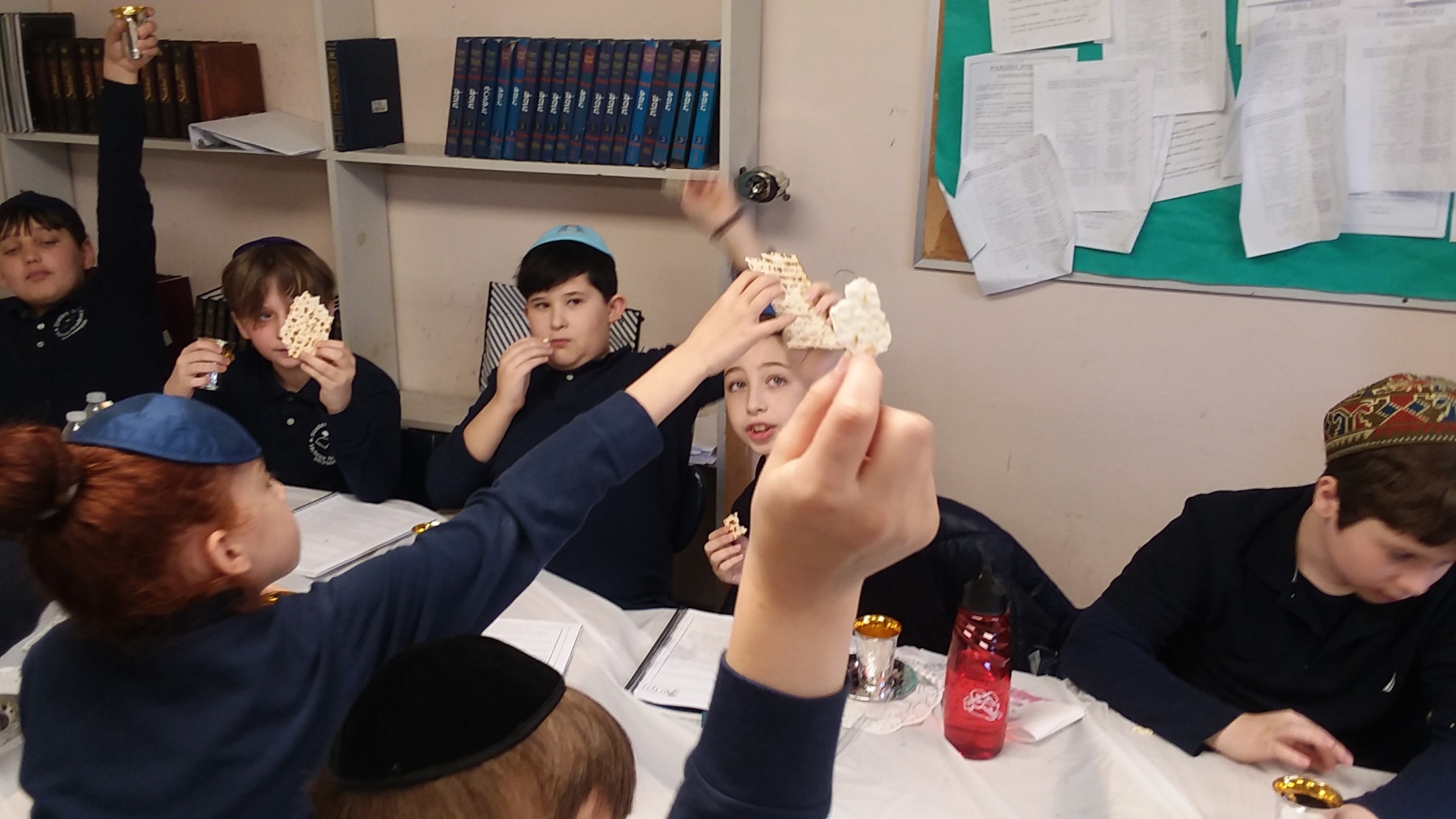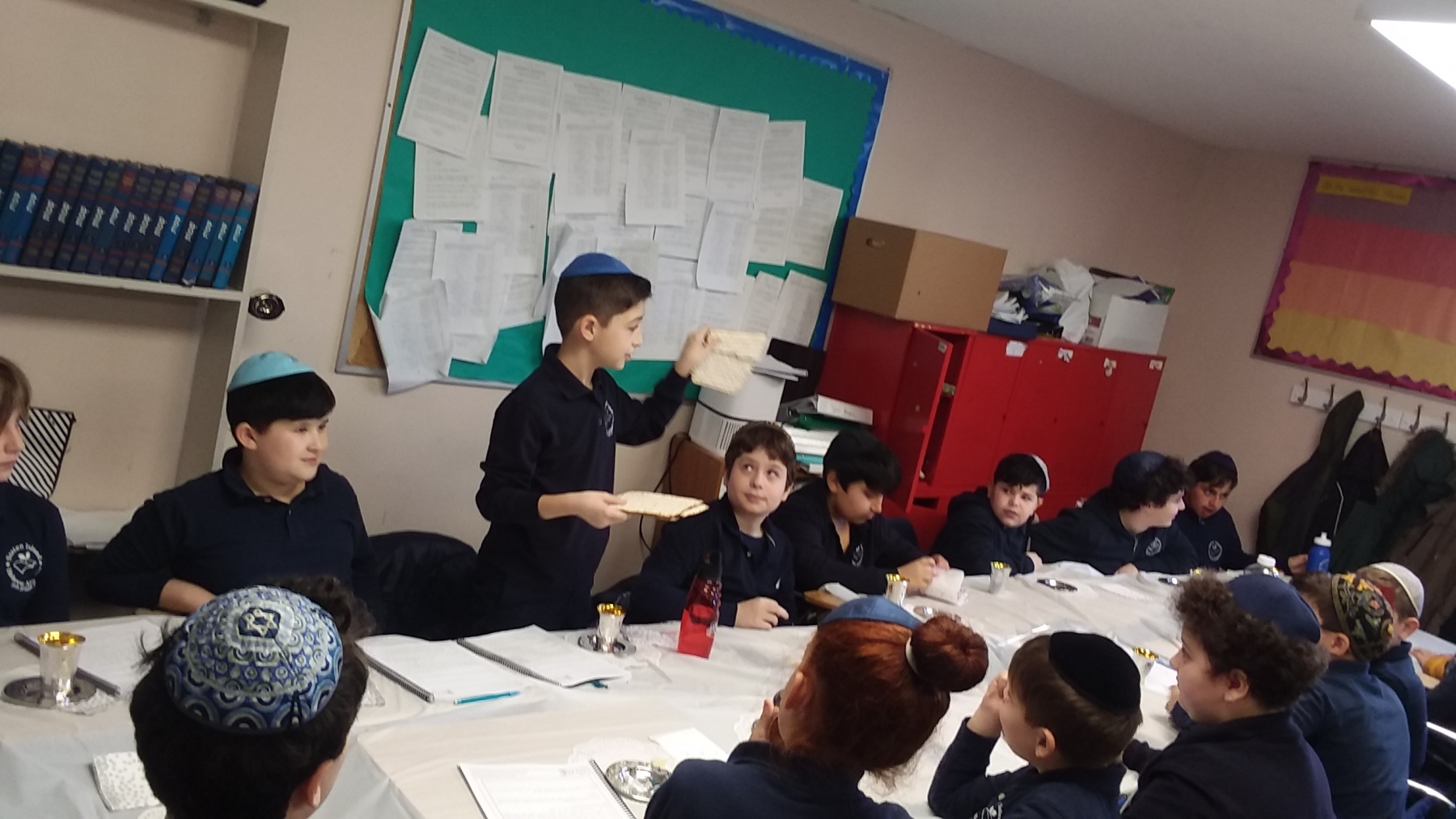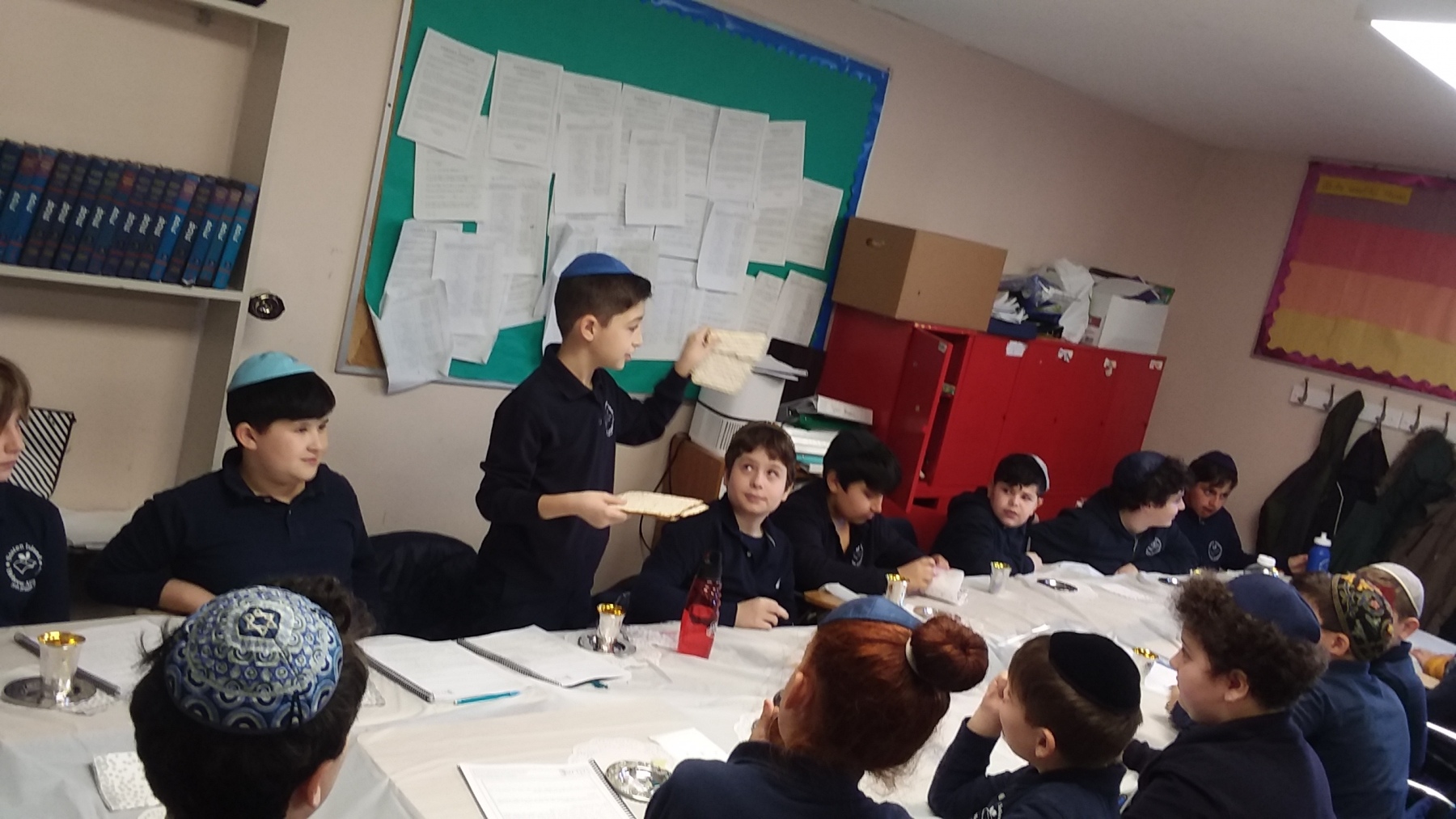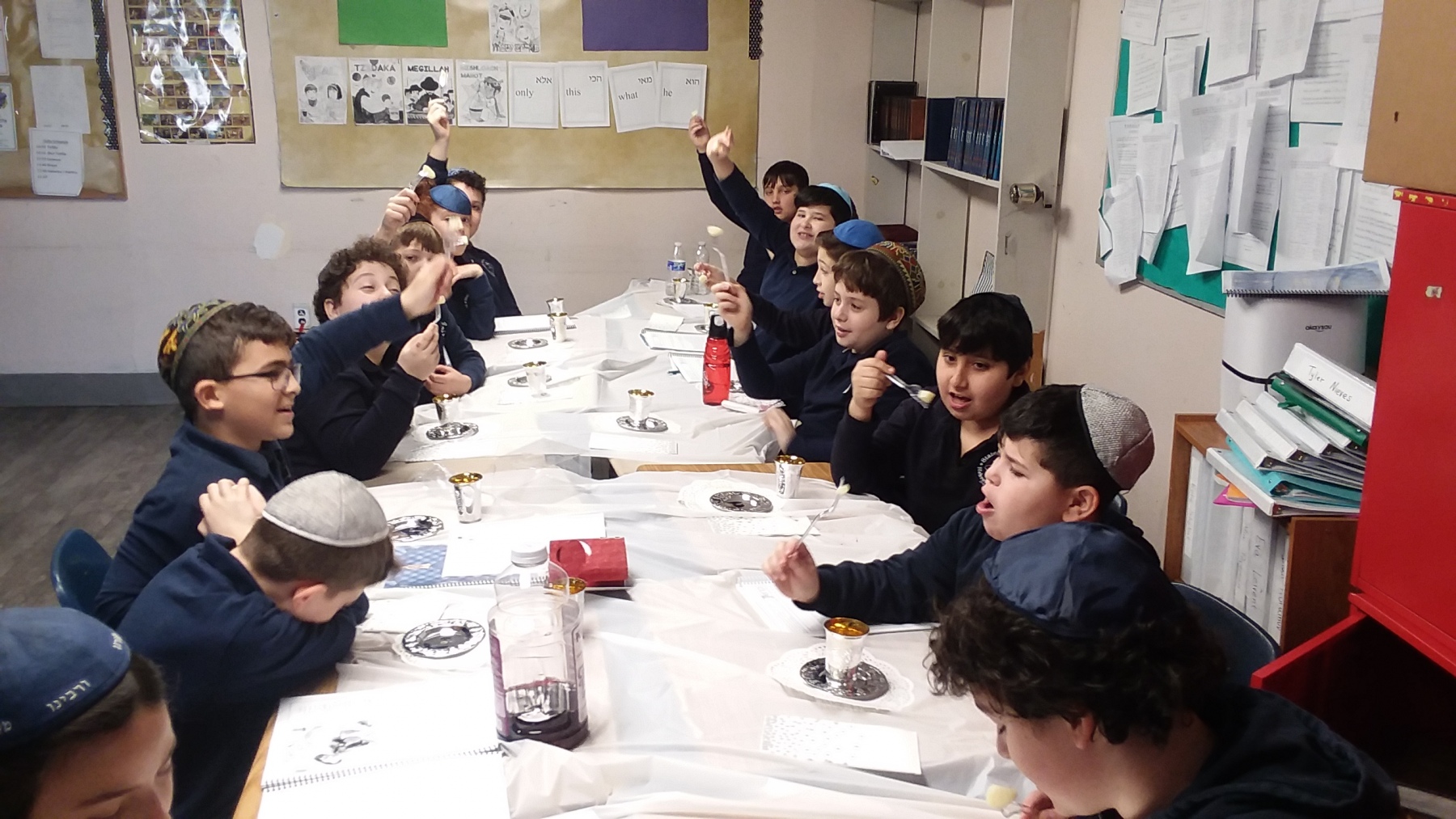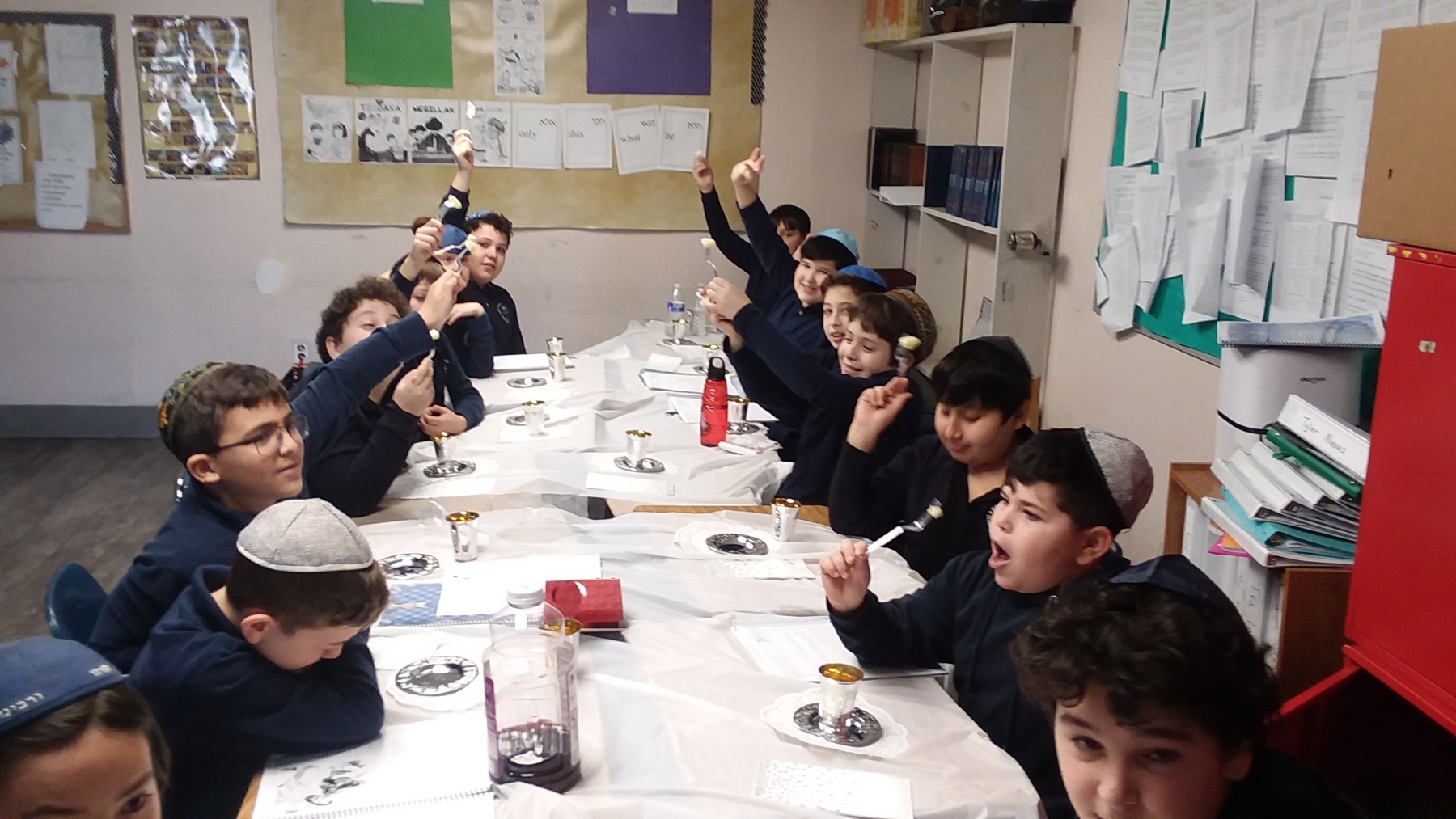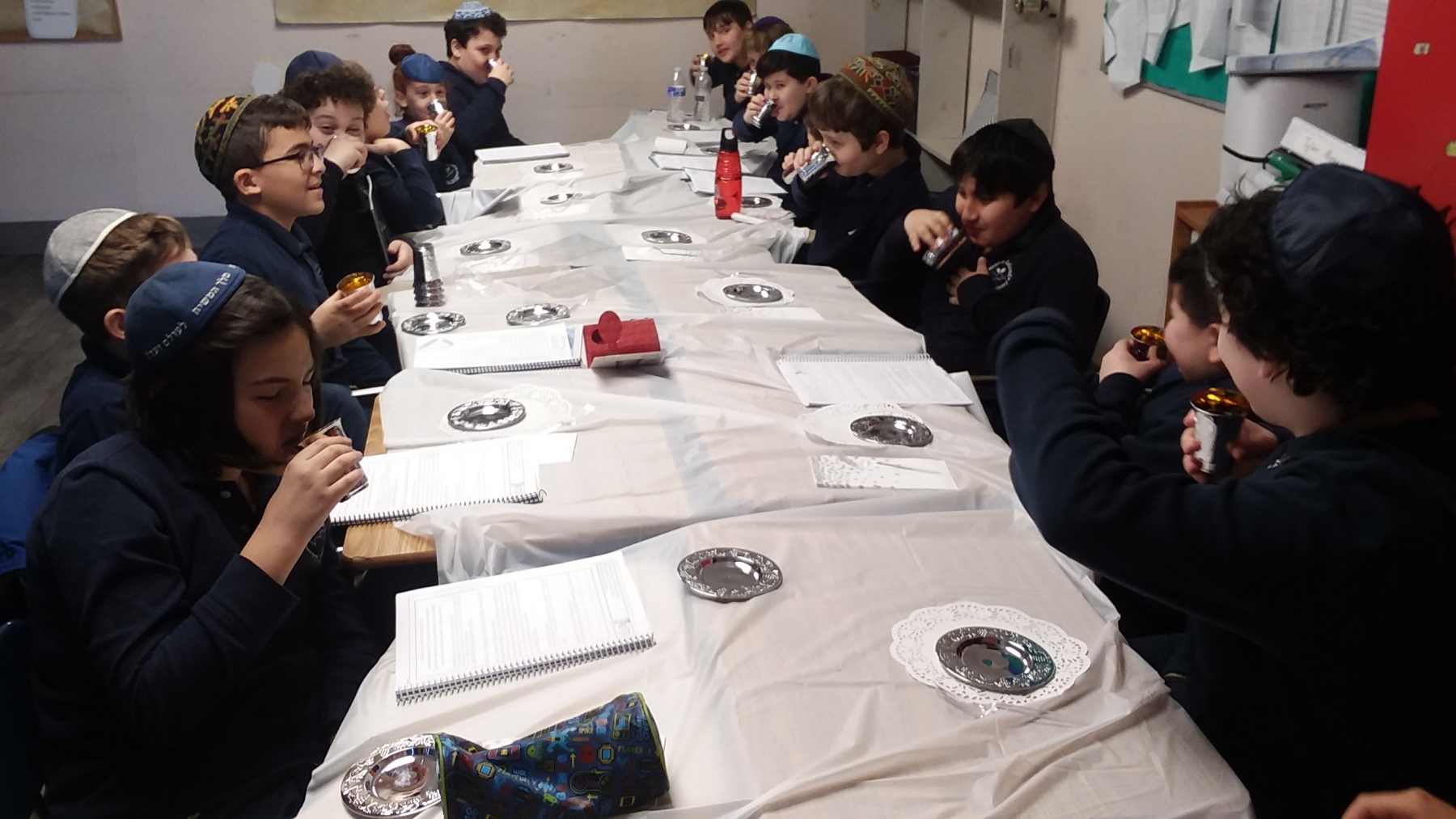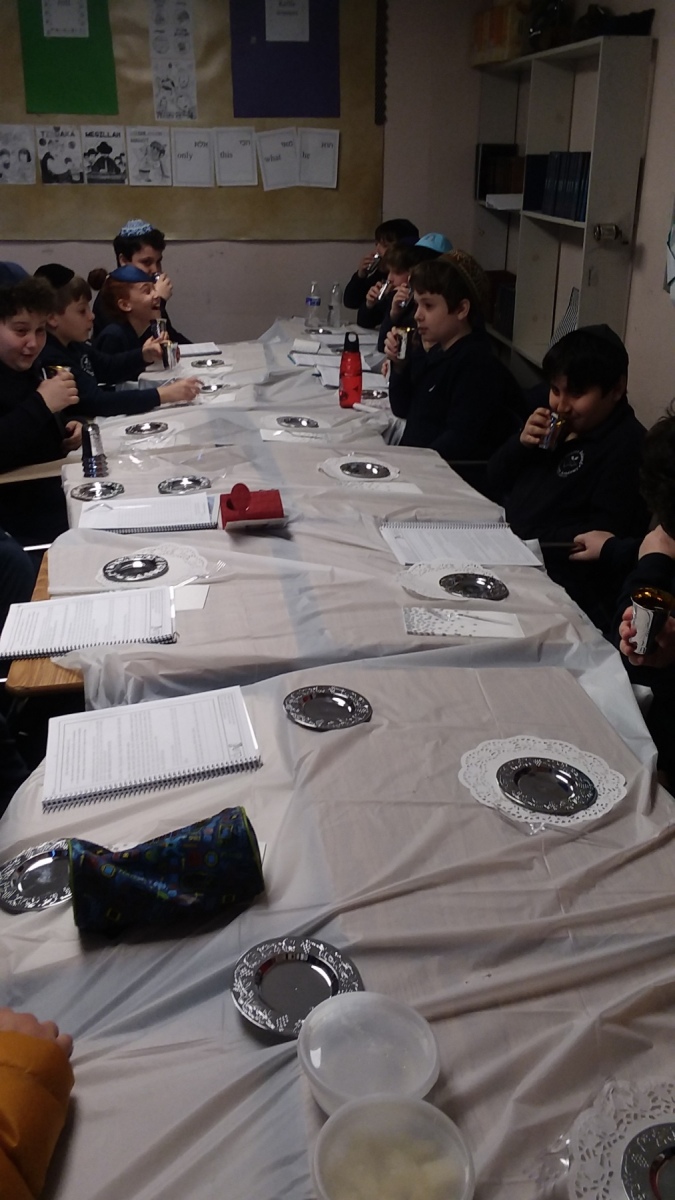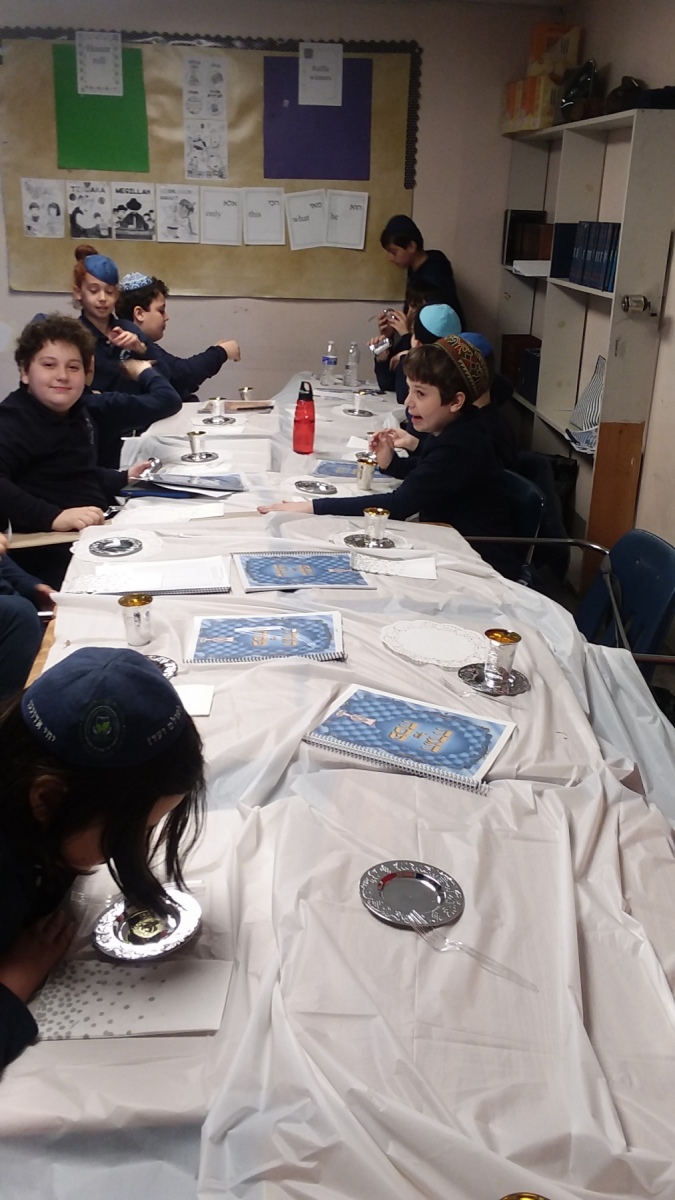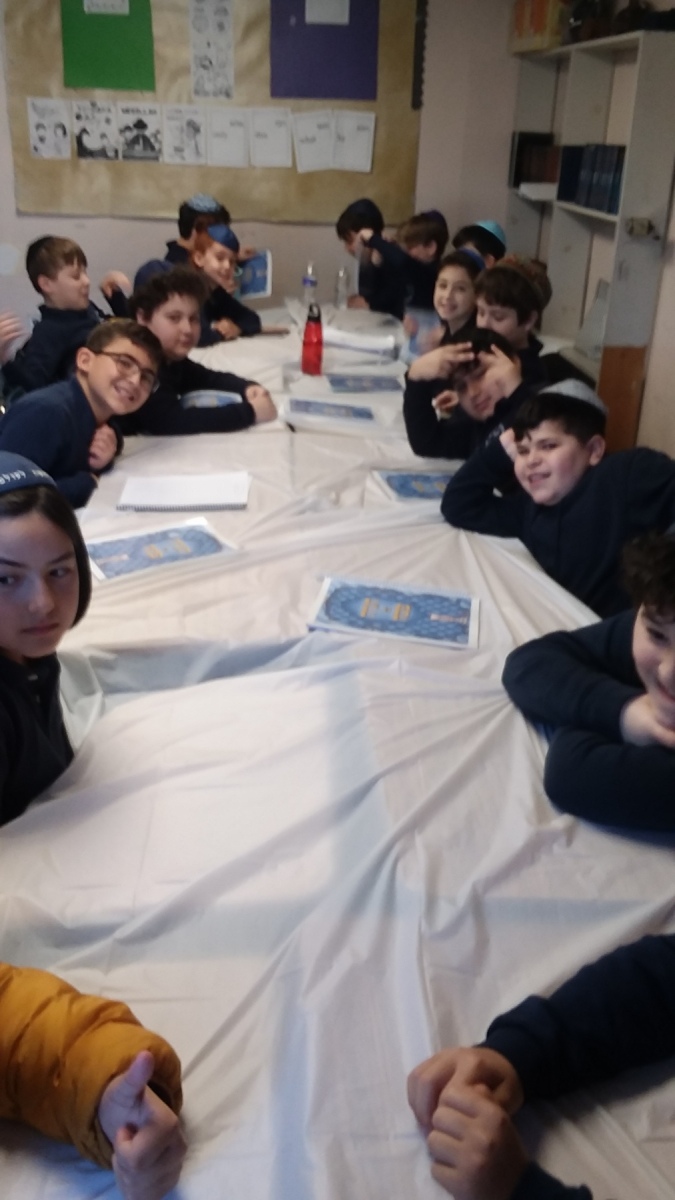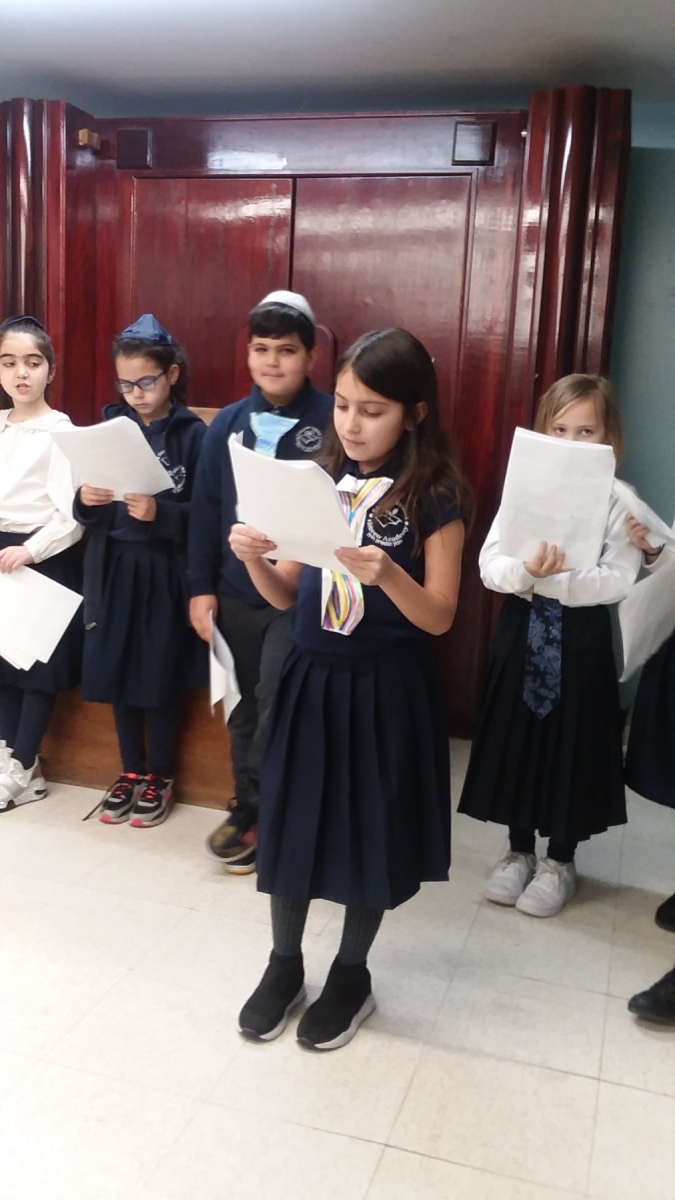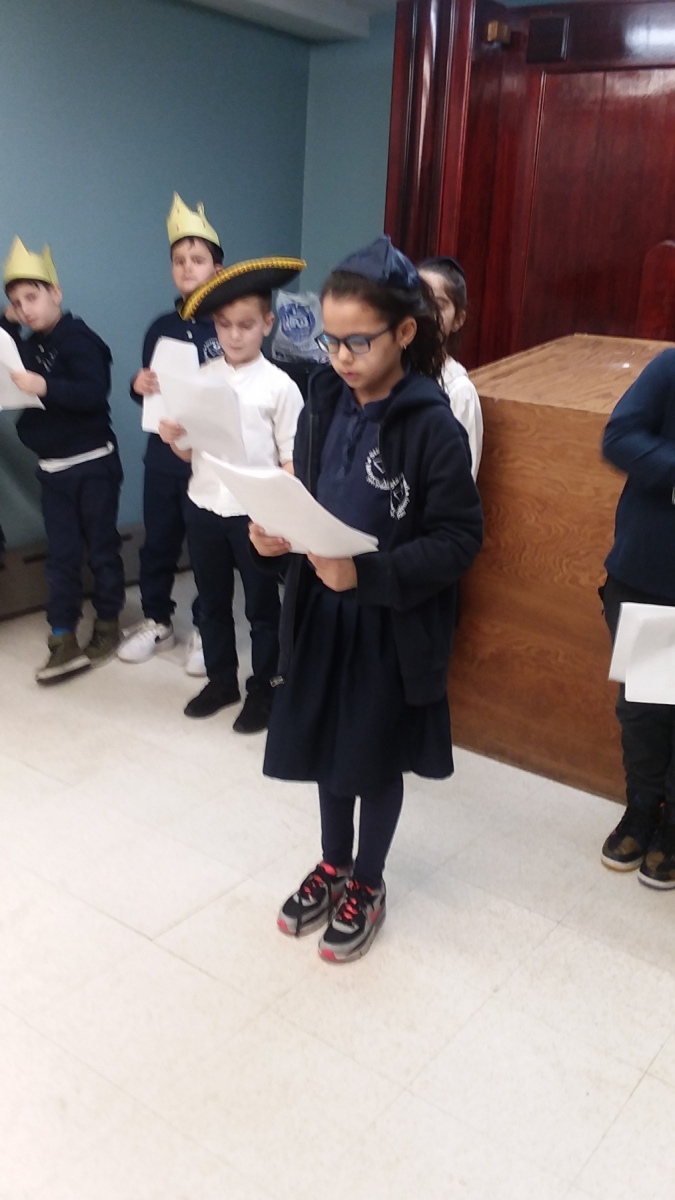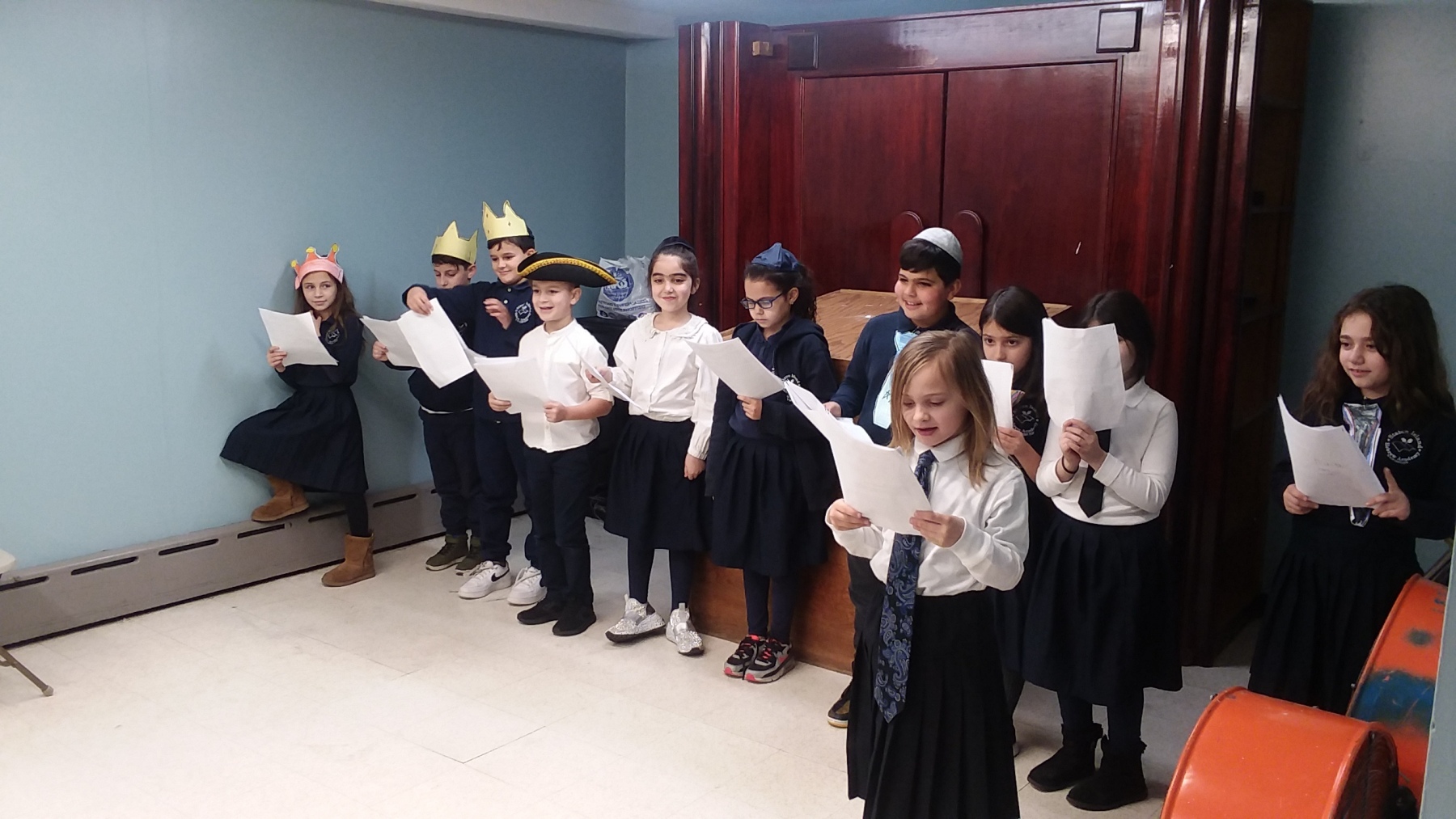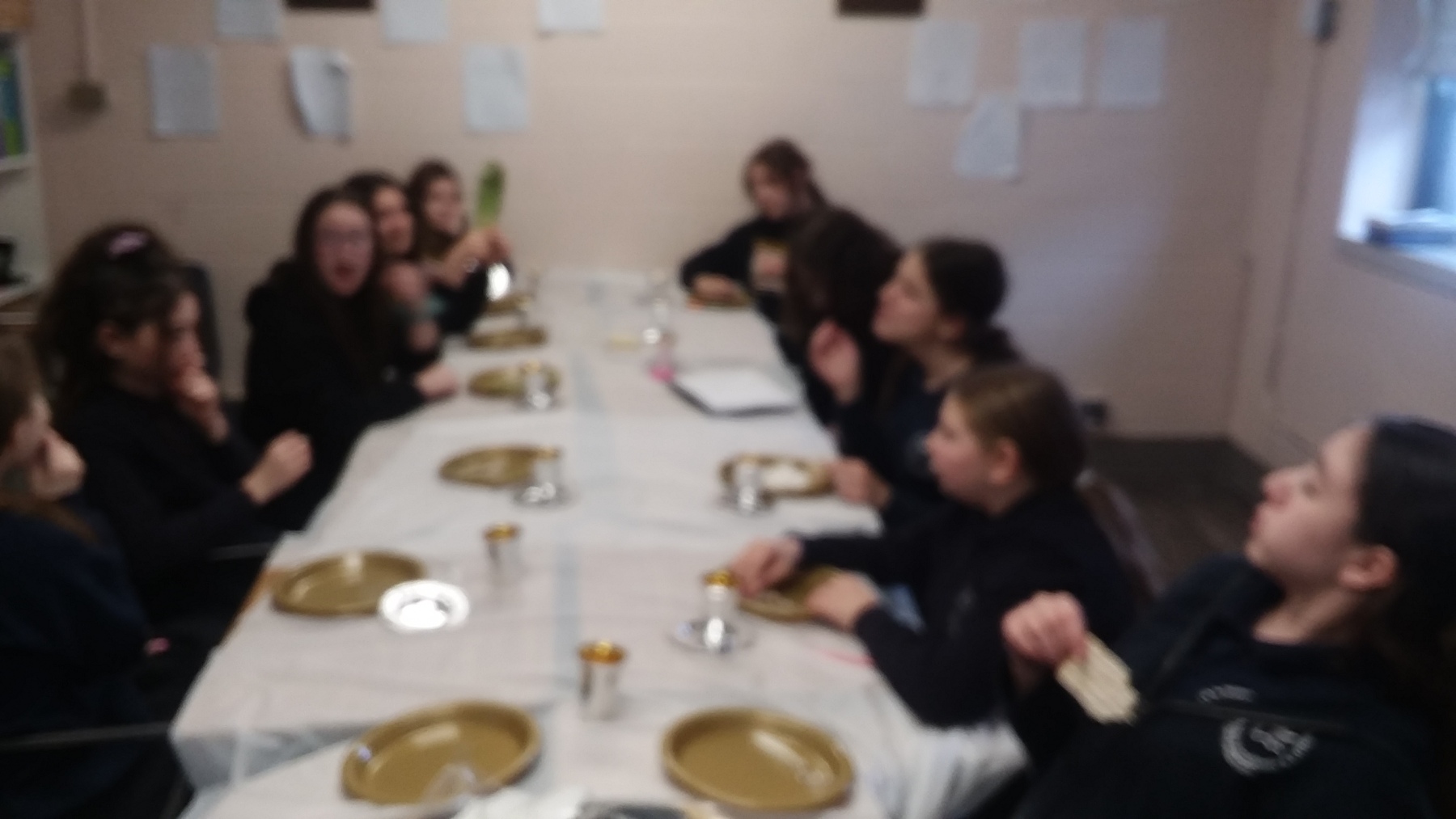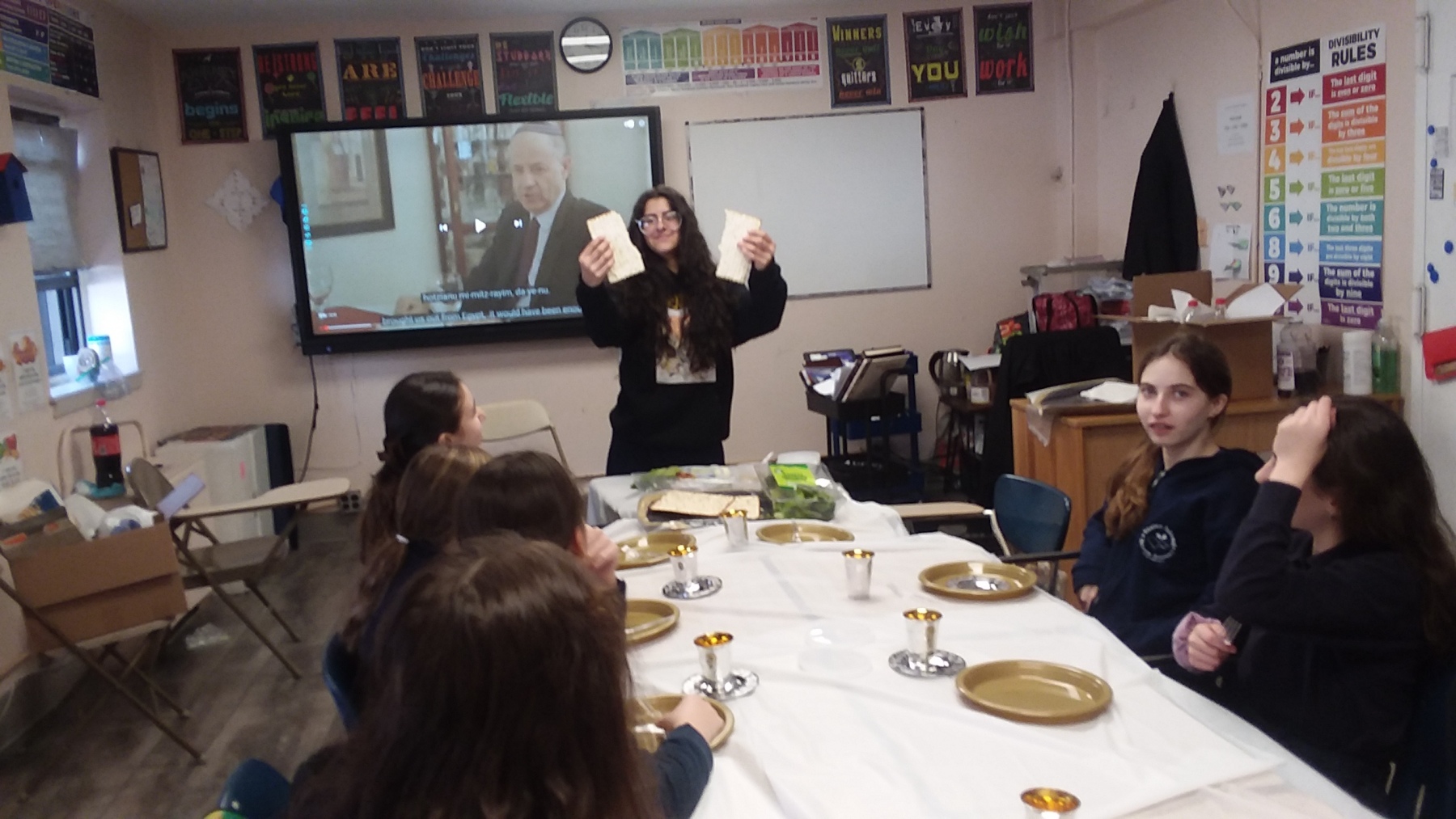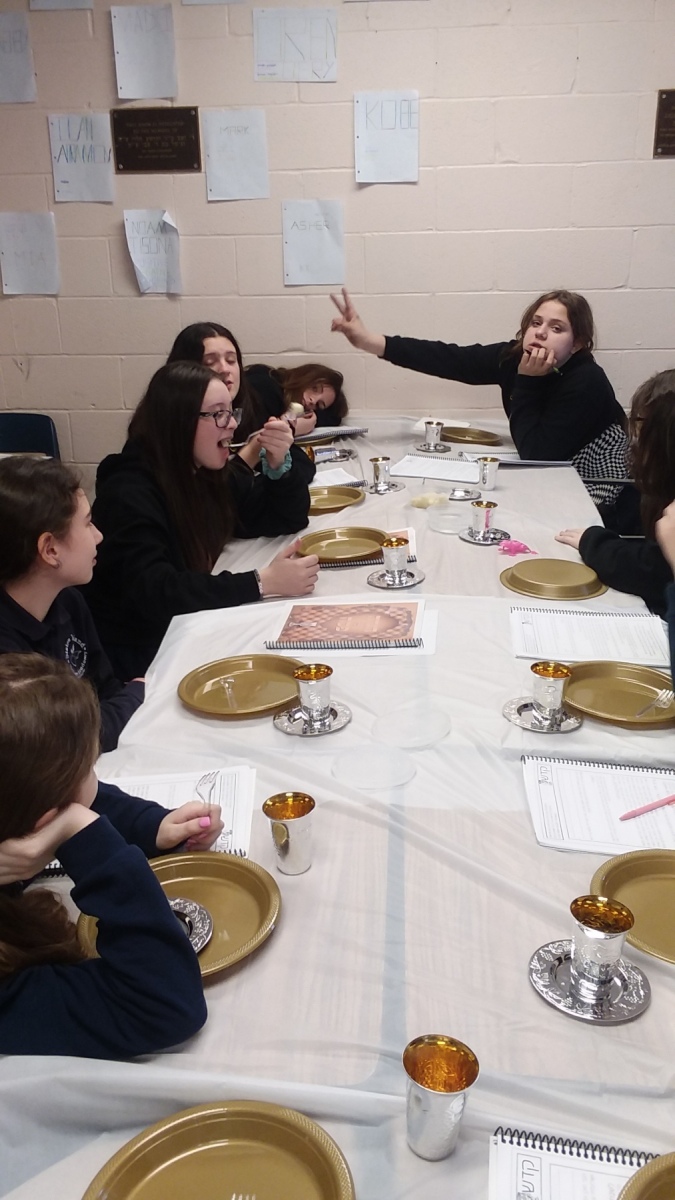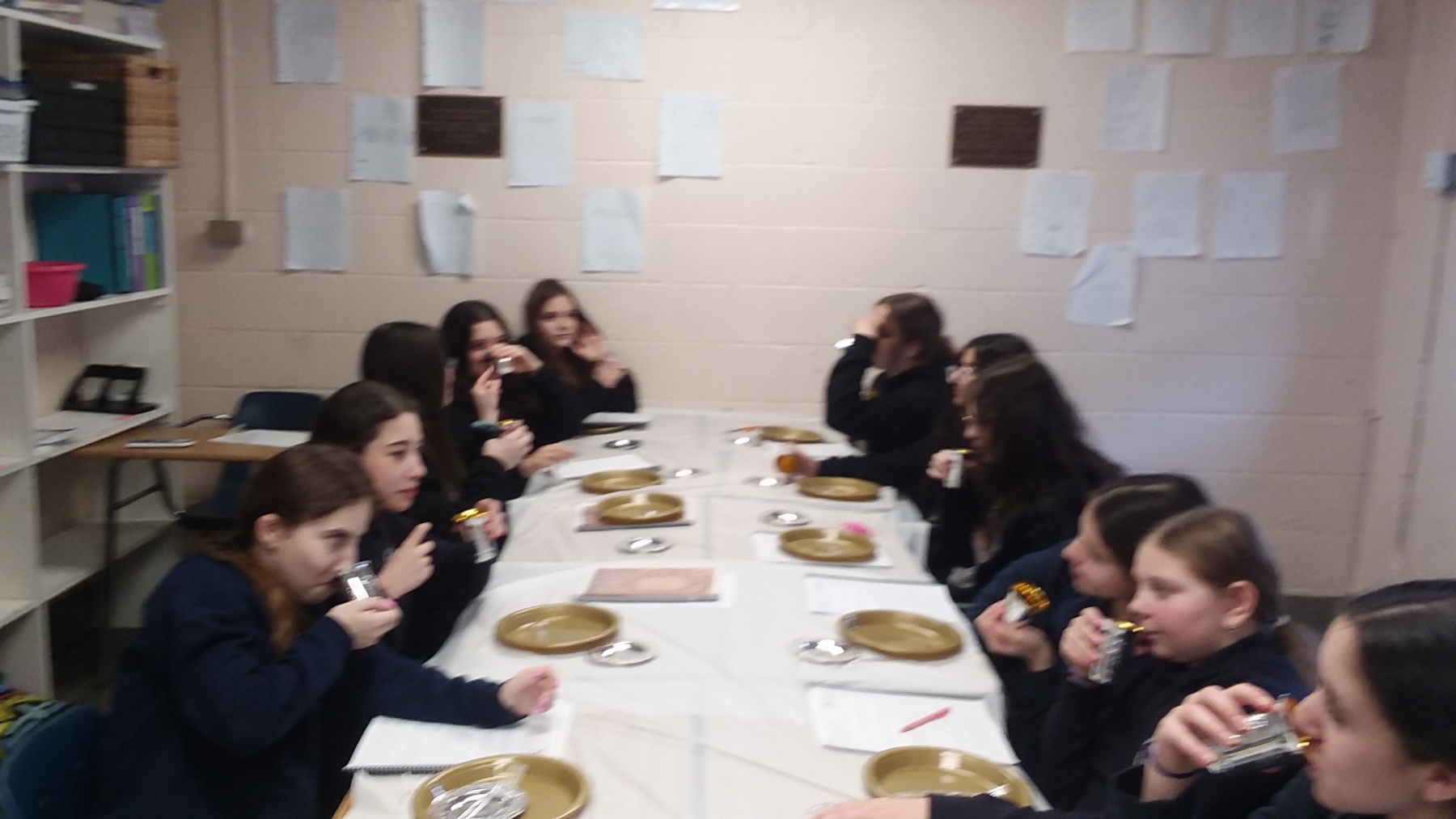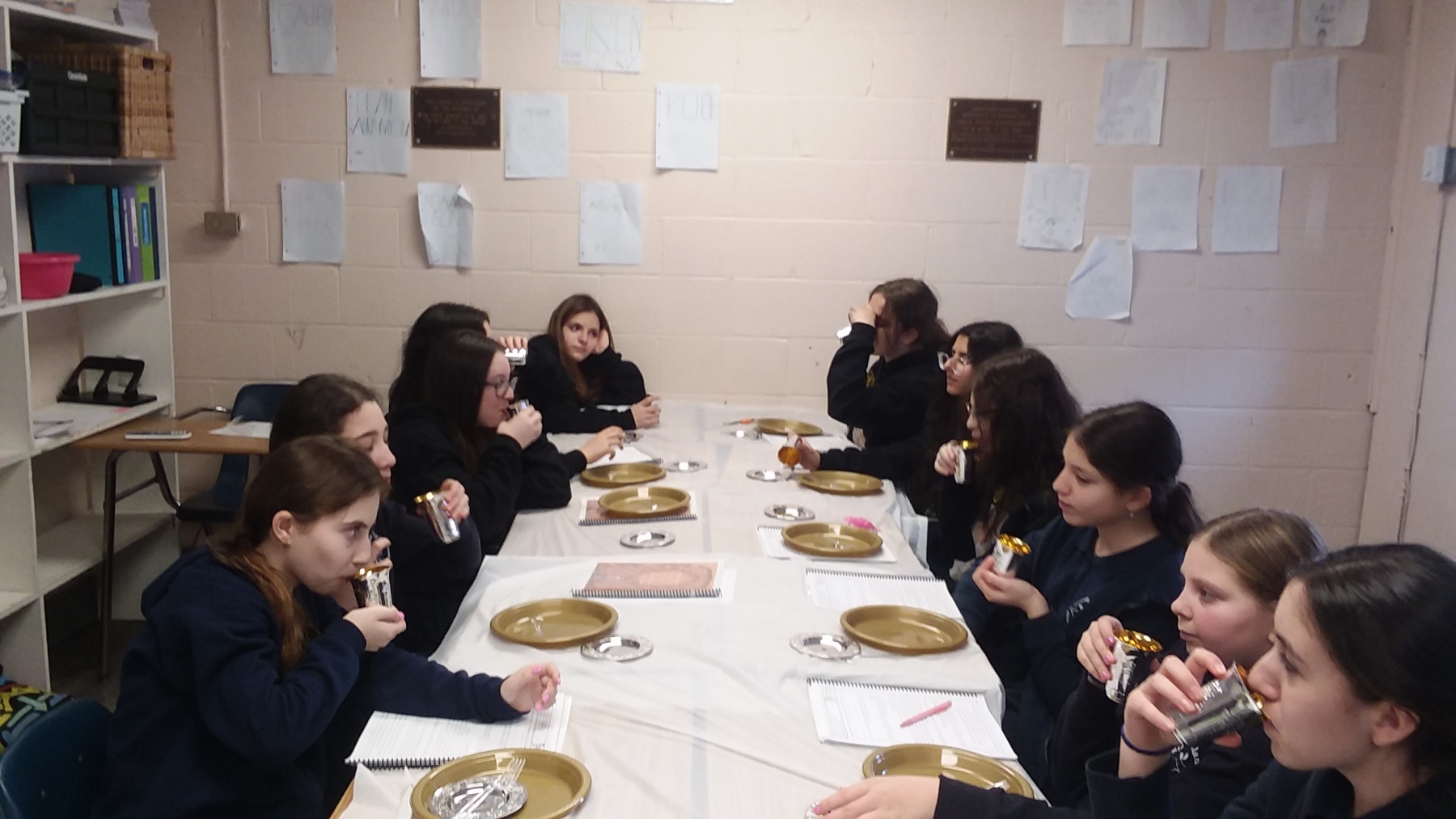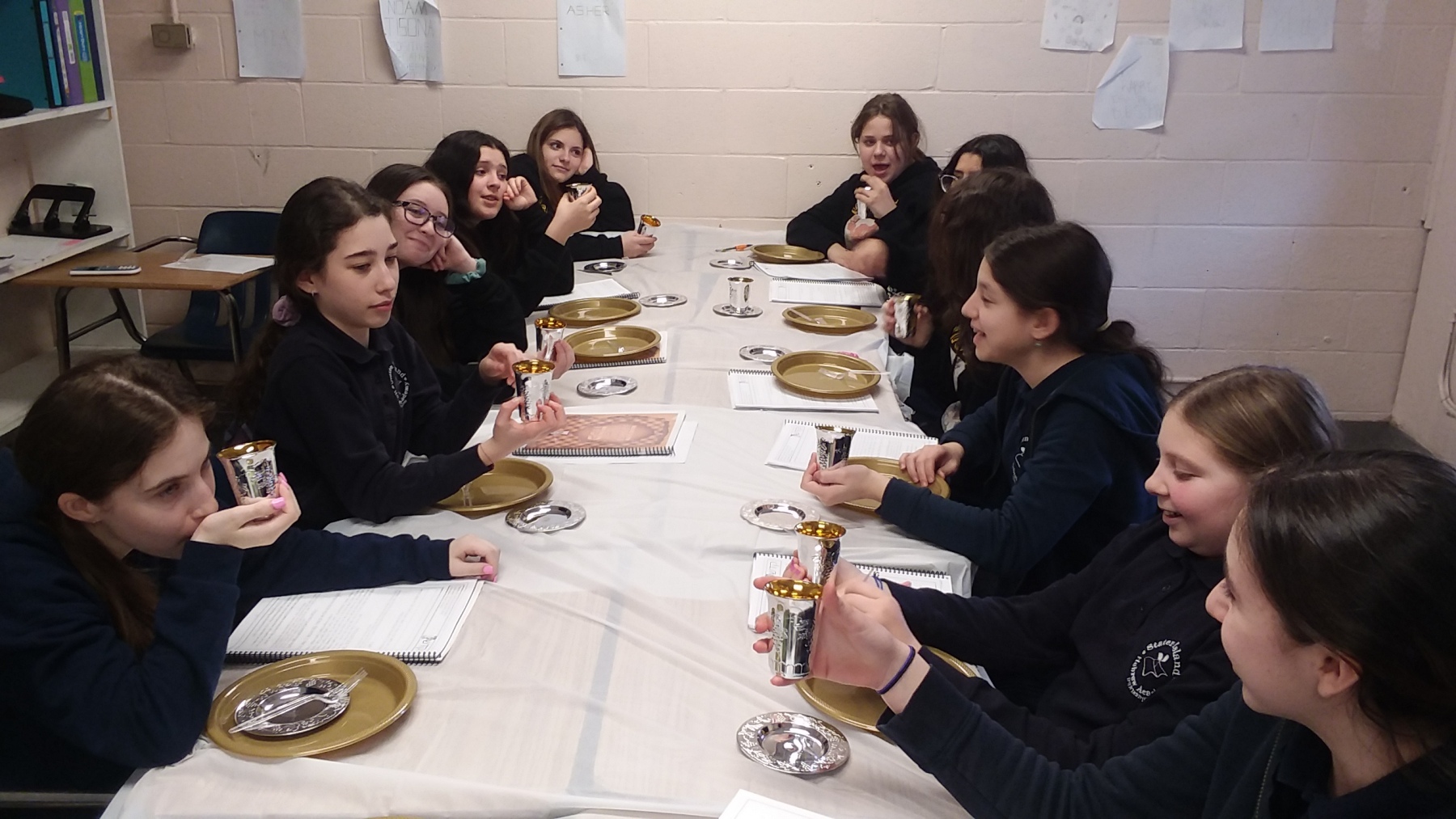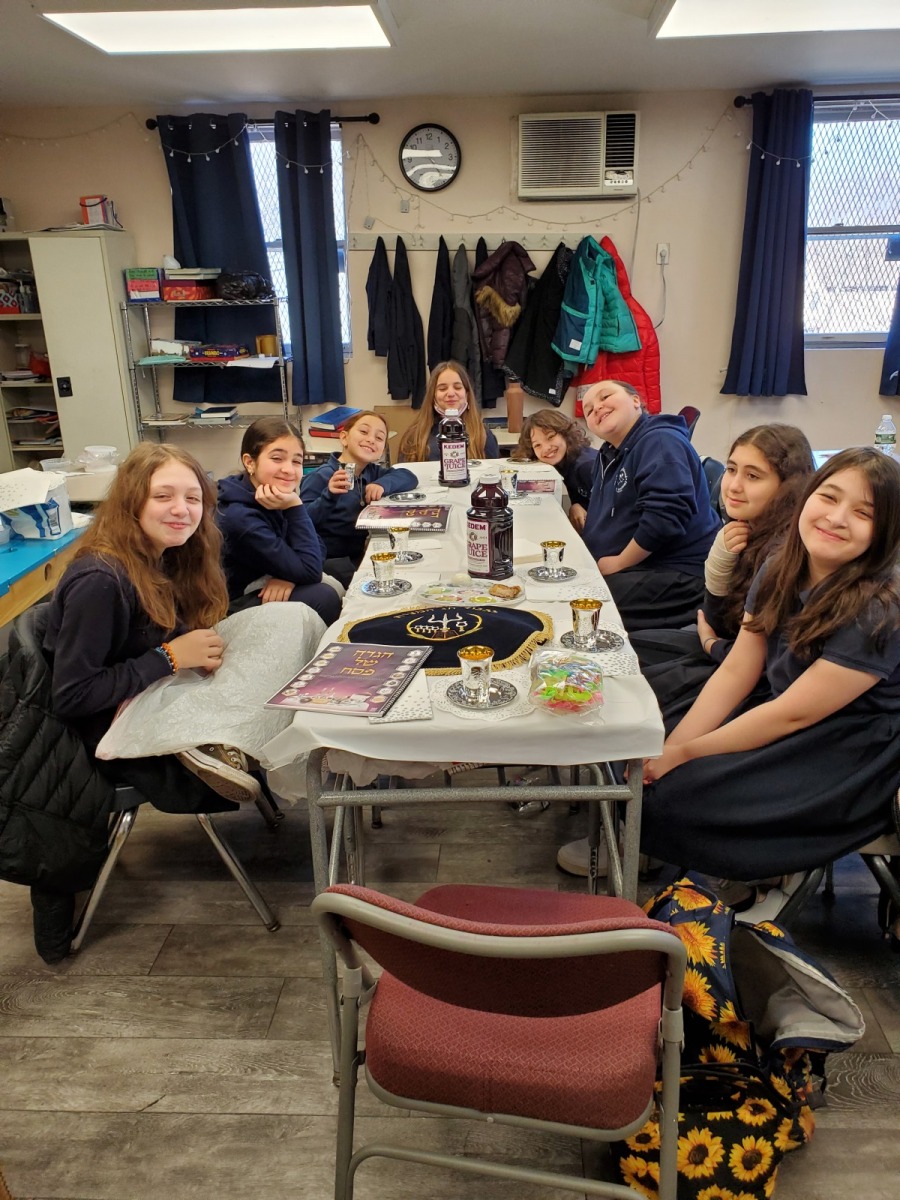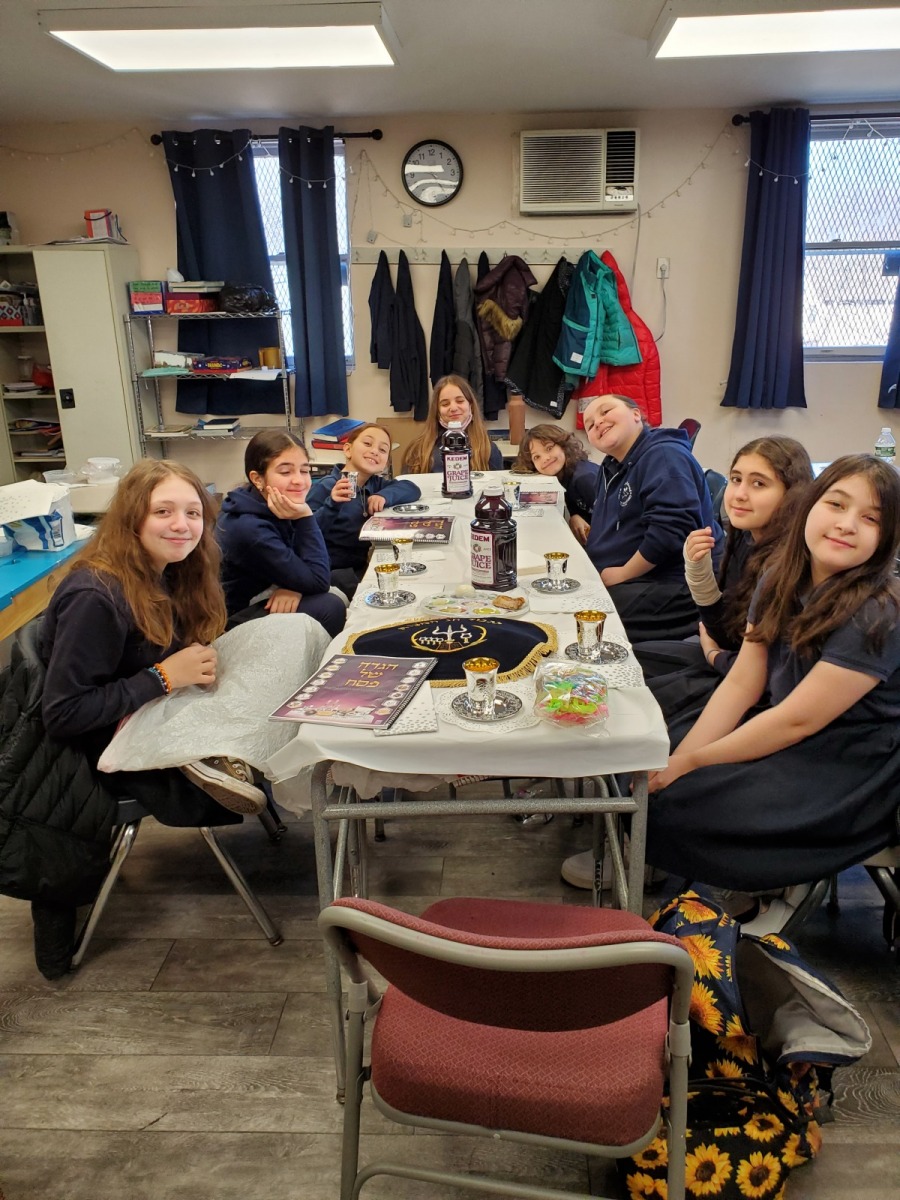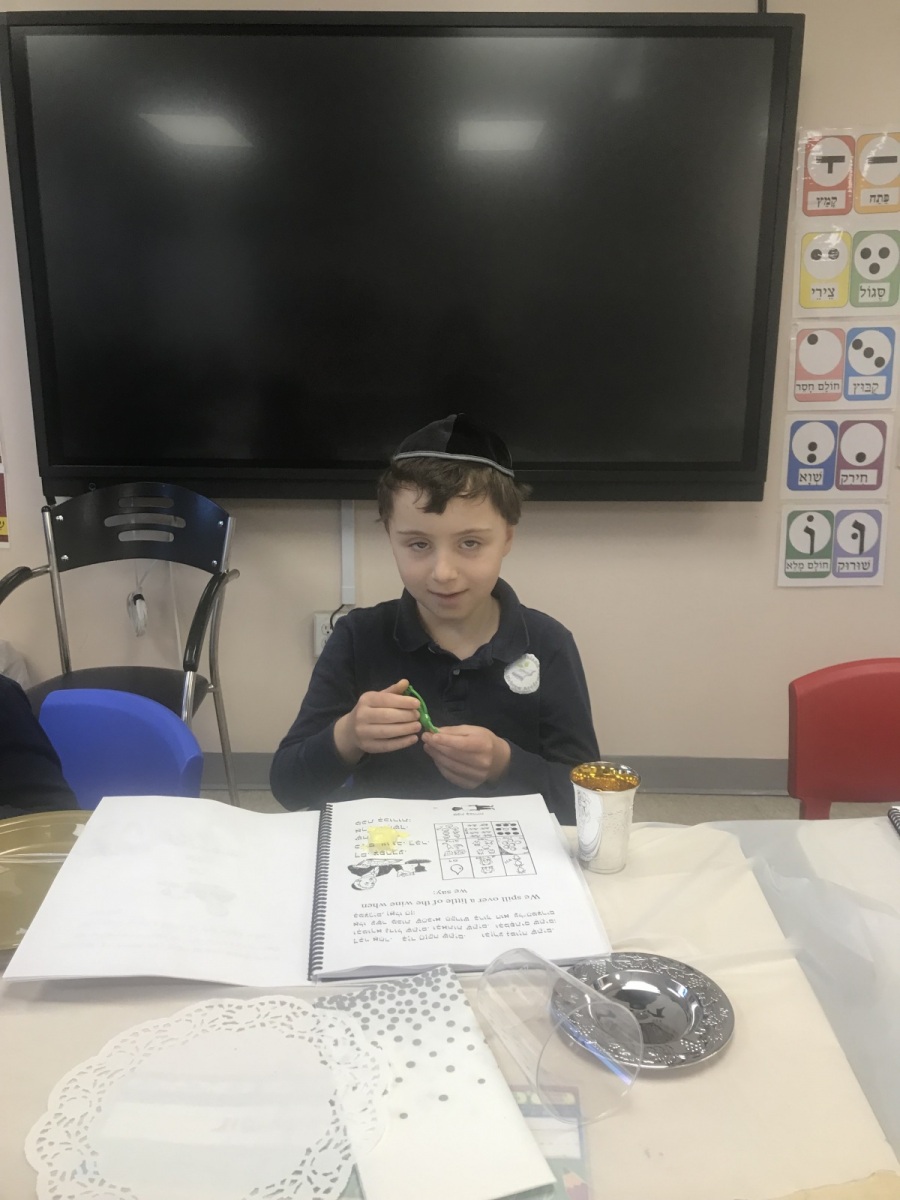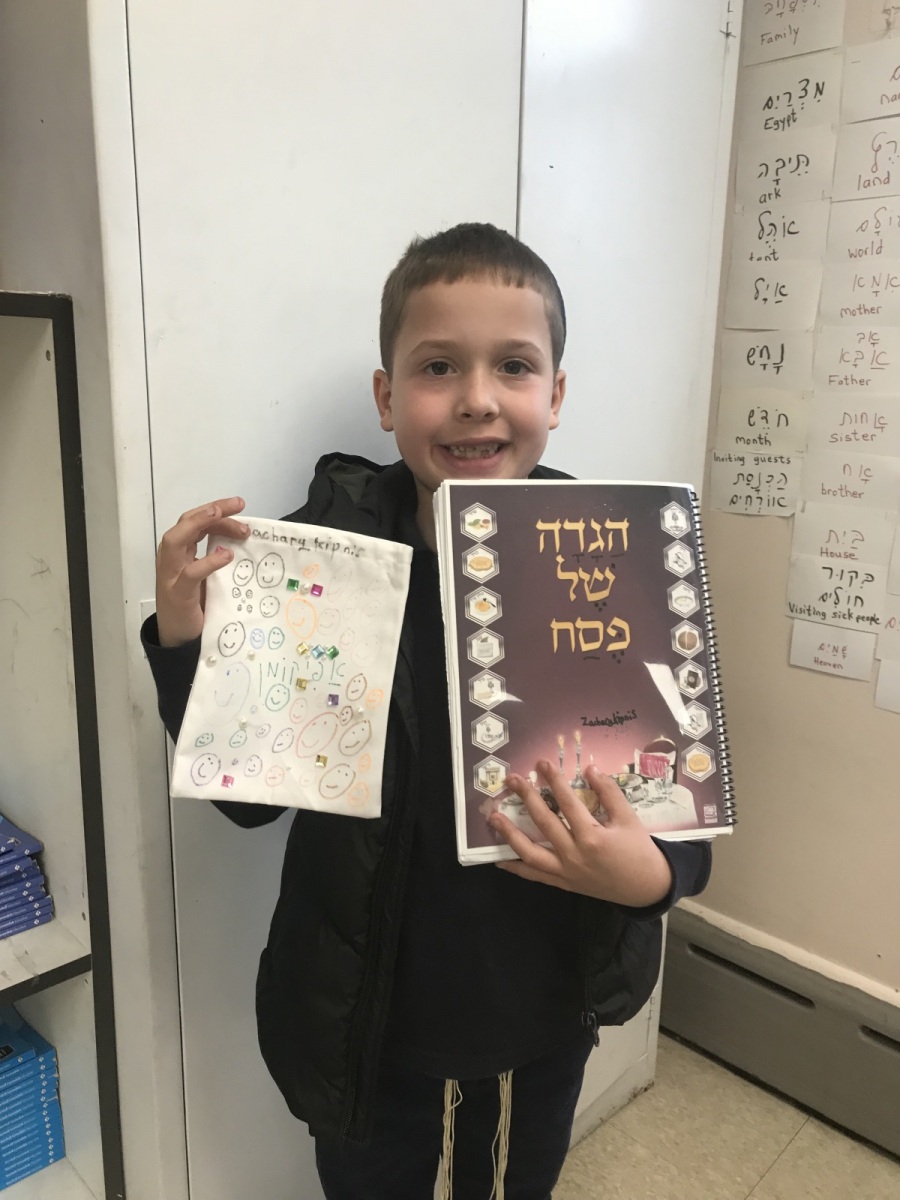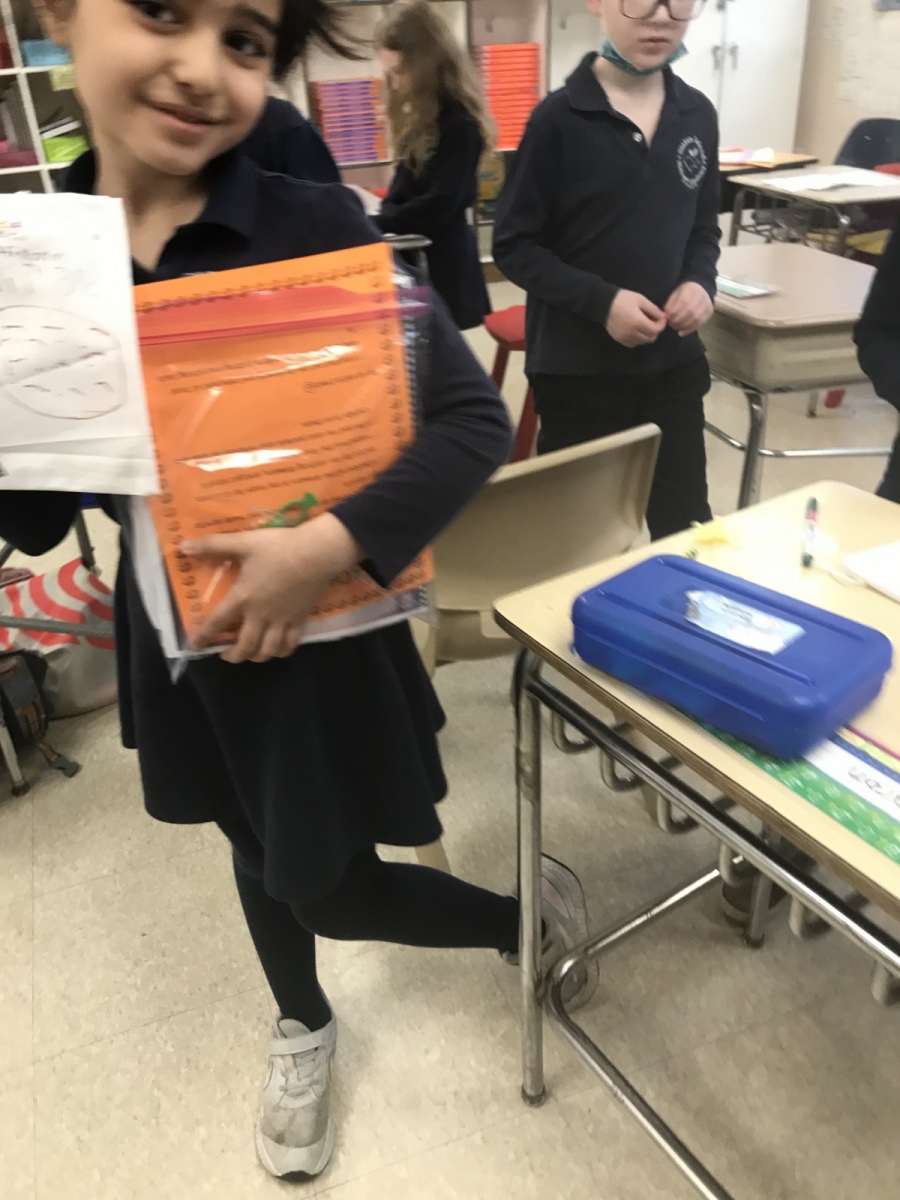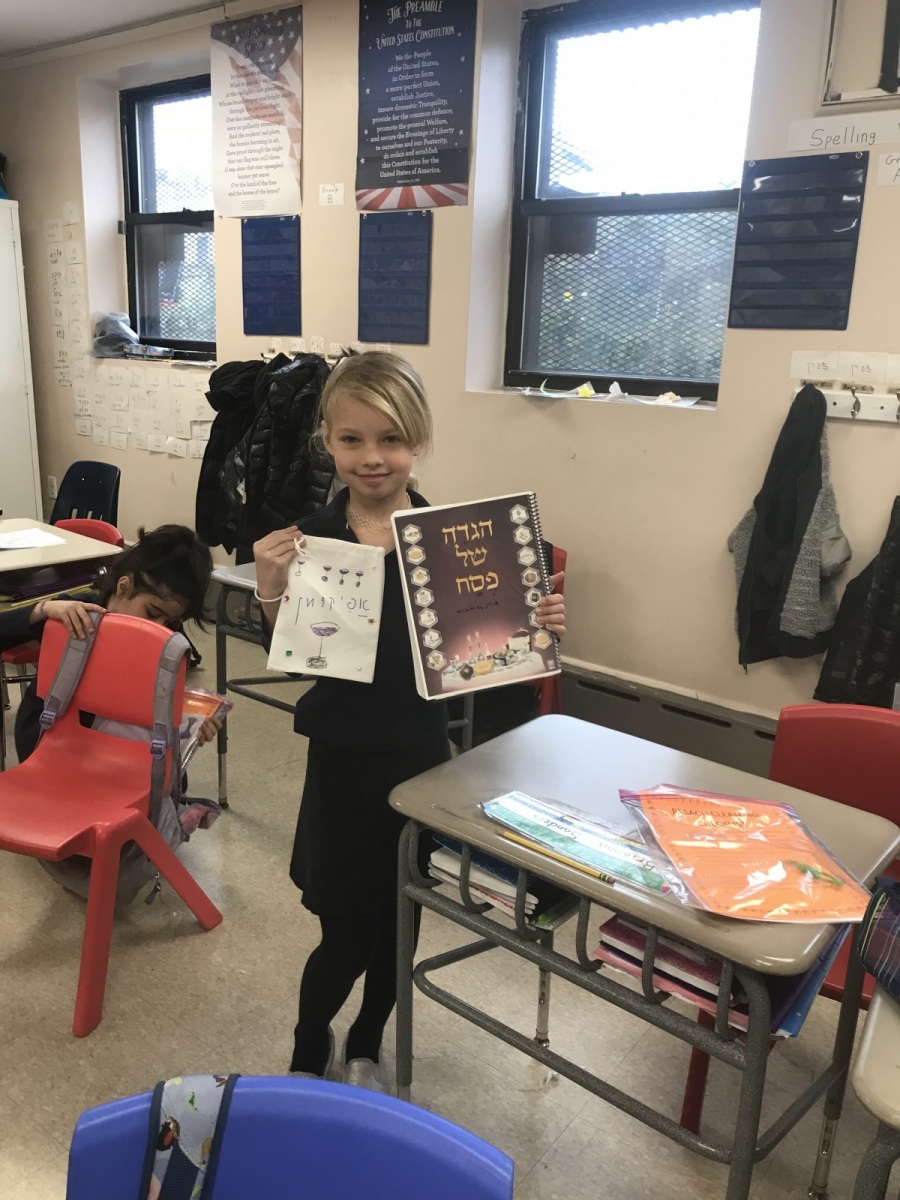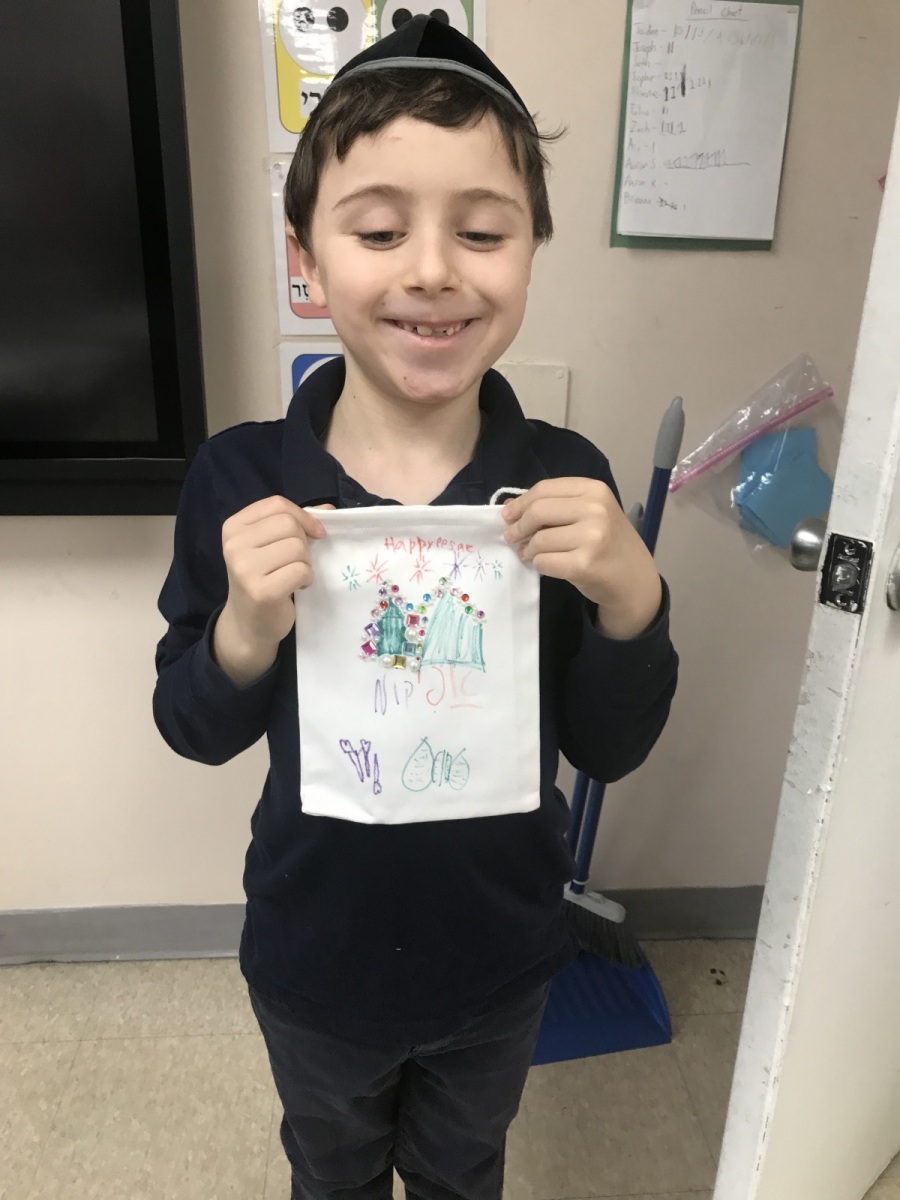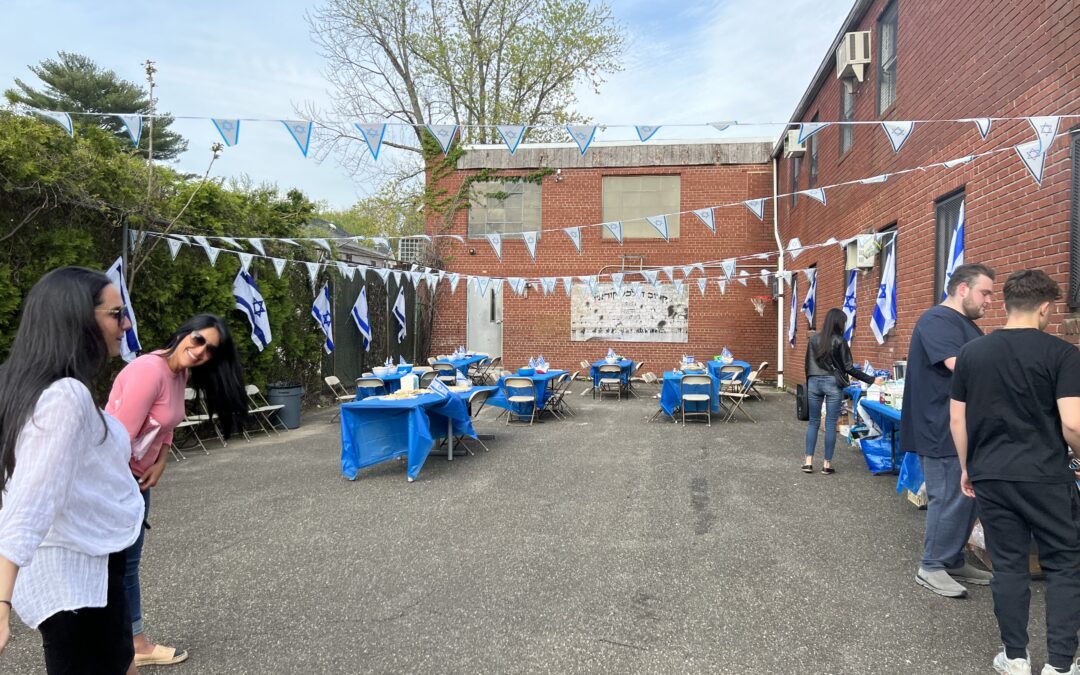
by admin | May 6, 2022 | Newsletter
Dvar Torah
The beginning of Parshas Kidoshim contains a pasuk which presents a very interesting juxtaposition of mitzvot: “Every man shall revere his mother and his father and you shall observe My Sabbaths I am Hashem your G_d” [Vayikra 19:3]. Rashi wonders about the connection between Shabbat observance and revering one’s parents. Rashi cites the Medrash Toras Kohanim which teaches, based on the juxtaposition in this pasuk: “Although I enjoined you about revering a parent, if your parent should say to you, ‘Desecrate the Shabbat, do not listen to them. And, so, too it is with regard to other commandments.” This is a halachic principle brought down several times in the Talmud, which is also codified in the Shulchan Aruch as well.
Rav Yaakov Kaminetsky (1891-1986) adds that the Torah is teaching us another message as well. We believe that G_d created the world in six days and that on the seventh day He rested. Prior to Creation the world did not exist and obviously people did not exist. This “Creation scenario” is not universally accepted. There are many people who, in fact, deny any role of G_d in creation. The Darwinian Theory and others posit that human beings evolved from lower species and reject the “story of Creation” as spelled out in the beginning of the Book of Bereshit/Genesis. This is a philosophical-theological dispute of how one views the world.
There is a practical difference between these two world views. The difference boils down to who needs to honor whom? Should older people need to honor younger people or should younger people need to honor older people? If one believes that man has evolved from the lower forms of life, then presumably, the further one gets away from that “original man” the higher form of life one would expect. If man evolved from a monkey, then the first generations of men were not very far removed from monkeys. Later generations have “evolved more” than earlier ones and hence the earlier generations must honor the later ones. The bottom line is that parents should honor their children. If, on the other hand, as we believe, the Almighty created the First Man, it follows that the First Man was the most perfect human being that the world has ever seen. He was without flaws because he was the handiwork of the Master of the Universe himself. No one can improve upon that! As we get further away from that First Man, man diminishes in stature. If we are going down, rather than up, it is clear that the younger generations need to honor the previous generations.
With this introduction, the pasuk is now crystal clear. “A man shall revere his mother and his father.” Why? It is because “My Sabbaths you shall keep I am Hashem your G_d.” There is a link between these two parts of the pasuk. Since there was a Creation, which you testify to by observance of Shabbat on the seventh day of the week, then parents who are a generation closer to creation and to the original man, who was created by the Almighty, need to be revered by the younger generation!
This insight of Rav Yaakov comes with a story as well. In his later years, Rav Yaakov attended a Kenesiah Gedolah (meeting of leading orthodox rabbis) in Eretz Yisrael. He was already an older man at the time and was accompanied on his travels by one of his sons. As we all know, the trip to Eretz Yisrael is a long trip and Rav Yaakov was an older man. His son waited on him hand and foot throughout the journey. There was a person on the plane sitting nearby who was astounded by the love, respect, and dedication the son was showing his father. At one point, he commented to Rav Yaakov Kamenetsky, “My children do not treat me like that. What is your secret in child-raising that your son treats you like a King?”
He responded and told him the above quoted idea. We implant in our children the belief that the further we are removed from Sinai, the more one has had to endure the phenomenon of “yeridat haDorot”[lessening of the generations]. Therefore, they understand that the older generation is a “better generation” and hence they honor and respect us. “If your children do not act this way”, Rav Yaakov told the gentleman on the plane, “perhaps it is because they feel that they are more advanced than you are, and that on the contrary, you should honor them.”
Rabbi Dr. Richard Ehrlich
Special Announcement
CONGRATULATIONS to our amazing Students of the Month for April!
Kindergarten – Brittney Sanders
First Grade – Alexander Braun
Second Grade – Jaiden Rebibo
Third Grade – Noah Sharoni
Fourth Grade – Avraham Landsmen
5A – Evelina Bass
5B – Ethan Shankman
Middle School – Secular: Ilan Abramov
Middle School – Judaics: Etai Factor
A great, big, THANK YOU to the PTA for all of their hard work in setting up the Yom Haatzmaut celebration on Thursday!
The celebration was a smashing success! The students and their families enjoyed the bounce houses, face painting, and delicious food.
Special mention goes to our intrepid 8th graders who helped with managing the bounce houses, making cotton candy, and being overall helpful in setting up the celebration!
Judaics
Second Grade
B”H we had another productive week in 2nd grade. We learned about the holy city of Jerusalem and it’s history. This weeks Parsha Kidoshim is filled with many commandments such as honoring parents, loving your fellow man and not to take revenge. We discussed the mitzva of honoring parents in great detail. Tsion (Jaiden) proudly raised his hand and told the class how quiet he was in order to avoid disturbing his mother while she was resting. When discussing the mitzva of respecting elders, Esty (Sloane) told the class how her family went out for dinner and there was an old lady at the restaurant who almost fell and Esty’s father helped her. We are constantly reviewing the Hebrew prefixes and suffixes as well as daily Kriya (reading) practice. Shabbat Shalom. Morah Spiegel
Third Grade
Another great week in third grade!
On Monday was Rosh chodesh; the first day of the month. We sang beautifully together the special prayer of Hallel.
We also started another tefilla contest for when we pray. Together as a class we are trying to fill a jar with diamonds. They really pray so beautifully Hashem is so proud and is giving them real reward more precious than diamonds.
We also had lots of fun practicing for our Chumash play! We are really looking forward to this momentous occasion!
Tuesday, May 10 at 9:30 am
Remember all students should please wear a white shirt
Looking forward to seeing you!
Shabbat Shalom!
Morah Ferber
Fourth Grade
Dear Parents,
Wow!! The week went by quickly. As the saying goes “Time flies when you are having a good time.”
We learned in Chumash all about the story that Sarai did not have children. Sarai gave her Egyptian maidservant to Avram to have children. Hagar would cause pain to Sarai saying that she was greater that Sarai, being that she had a child to Avram, and Sarai did not. Really Sarai was the great one. We see from here how important it is never to make a person feel bad.
The Davening this week was just beautiful. The tunes and the words were nicely said.
In honor of the day of Yom Ha’atzmaot, many children were blue and white. We played a video of Yerushalayim in honor of the event.
The celebration at school was super. We all had a great time with the slide and jumping machine, and all the refreshments. Thank you for all the hard work the PTA put into it.
A congratulations to Tanya Shutman for being one of the School’s Kriah Pro winners.
Shabbat Shalom
Rabbi B.
5th and 6th Girls
Dear parents.
Thank G-d, we had an awesome week
It was so nice to see many of you at the Yom Ha’atzmaut BBQ.
We are launching a very exciting campaign in our class, the Mitzvah – A – Thon. We’ve been learning many Mitzvot this year, in our Halacha class. Each girl is presenting one Mitzvah on May 24th.
Throughout the next 2 and a half weeks, until presentations, every time the girls do one of the Mitzvot that we’ve learned, they will fill out a raffle card with their name and the details of their Mitzvah. They can also fill out a card for every time that they’ve caused another person, whether a family member or friend, to do a Mitzvah.
Each raffle card will go into the envelope for that Mitzvah.
On presentation day, we will choose a winner for each Mitzvah raffle.
Every 5 cards that the girls fill out for themselves, they will receive a scratch-off-card that they will scratch off to receive exciting prizes !!
One last thing 🙂 – The leading Mitzvah with the most raffle cards will be the winner of the Mitzvah – A – Thon. The girl who presented that Mitzvah will receive an exciting gift. Every girl should be trying to rally for their Mitzvah to acquire more cards in their envelope..
Good luck ! May the best man win.
We’ve learned this week the 4th Ani Maamin that Hashem is the first and the last. We looked at pictures of an egg and a chicken and argued for a while about what comes first. Turns out, Hashem came first and created one of them.
This week is Parshat Kedoshim. We learned that G-d is Holy, and we are supposed to emulate His beautiful ways and be holy as well.
And many more stuff
Shabbat Shalom U’mevorach!
Best Regards,
Mrs Perlstein
5th and 6th Boys
In Mishna
We learned a new Mishna about a Suka that originally had on top of it only metal poles or long wooden poles from a bed.
Both of those items constitute pasul s’chach unkosher Suka covering. The Mishna taught us that the way to correct this would be to remove a little more than 50% of those items and replace them with Kosher s’chach.
We also learned about someone who carves into a stack of grain which then develops into a suka with kosher s’chach, but nevertheless is NOT kosher.
This is because of “Ta’ase v’lo min he’asui” . We are taught that we are to “make ” a suka, but not that it should happen as a byproduct of our actions.
In Parashat Bo we learned the maka of Choshech-Darkness. We learned that the first 3 days were extremely dark, but the 2nd 3 days were not only dark, but so thick that if someone was standing they wouldn’t be able to sit and vice versa.
We covered a lot of details in the Parasha i.e. Kilayim= not mixing plant seeds to create a hybrid, and not wearing a mixture of wool and linen sown together. We also covered that the main Mitzvah in the Torah is to love your friend like yourself=do not do to him what you don’t want done to yourself.
We completed studying the laws of sefirat haomer,and will begin the laws of Shavuot in the near future.
In Tfila we are completing Shemoneh esre=amida, daily.
This Thursday we discussed laws that are specific to the land of Israel, i.e. Ma’aser, Trumah, Orla, etc. We discussed that we should not purchase fruits/vegetables from Shoprite, stop and Shop etc, if they come from Israel. This is because we can NOT be assured that the proper procedure was followed regarding these plants. The same is true when shopping in Israel.
There always is more in store.
Discuss the above with your children.
Shabbat shalom
7th and 8th Girls
This week, we completed and mastered our study of Sefirat Haomer. We were quizzed on the laws, and everyone aced the quiz!
We moved on in our in depth study of Navi Yehoshua. We learned about a bunch of kings in K’naan banding together against the Jewish people, but Yehoshua conquering them, nonetheless.
In B’haalot’cha, we covered many new ideas about the first born becoming Kohanim, then losing the privilege because of serving the Egel Hazahav.We also covered the procedure of how us Jews when we were in the Midbar, knew that it was time to travel/camp. We learned about the trumpets and their specific sounds that signified to different people to come to meet with Moshe at the Ohel Moed=Tent of Meeting [remember; in those days, there were no phones pa systems etc.]
We began studying new Halachot, this week, the Halachot of how to say a Bracha i.e. hold the food in our right hand , no talking until after we swallow our food etc. We also learned that although there is no minimum amount of food required in order to necessitate a Bracha before we eat, however there is a minimum amount and a maximum amount of time required for the consumption of the food in order to necessitate an after Bracha.
Each girl had a chance to choose a food item and look it up in Rabbi Kuritsky’s Kzayit Book = book which depicts, with photographs, many different food items and their minimum required amount to be consumed in order to necessitate the “After Bracha ”.
We also covered many pertinent Halachot from this week’s Parasha i.e.
respecting our parents, standing up for our parents, not sitting in our parents designated seat at home, in the office or in shul. We also covered that we never call our parents by their first name. As a matter of fact, we also learned that we do not even call our friend that has the same name as our parent, by his or her name in our parents’ presence!
We learned that we do not wear a mixture of wool and linen sewn together.
There is always more in store.
Speak to your offspring about our studies.
Shabbat Shalom
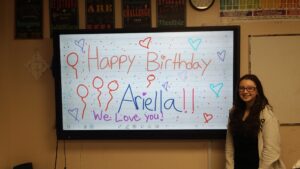
7th and 8th Boys
What an accomplishing week we had in class.
We started with a beautiful davening with the “Bachurim” putting on their Tefillin. Watching the boys put on their Tefillin with such excitement, was great to witness.
We had our daily reading of Tehillim. I told the boys that when we say Tehillim after Davening, it brings me back to my middle school years, being that my Rabbi said with us Tehillim after Davening.
In Pirkei Avot we learnt that a person needs to have Torah and Derech Eretz . If he has both of these things, he forgets to do sins. Torah and Derech Eretz are very important for a Jew’s life.
In Halacha we started learning about the laws of Tefillin. Boys in the class were either Bar Mitzvah or going to be Bar Mitzvah soon. There are a lot of Halachot and it was a great opportunity to know how to do the Mitzva properly.
Congratulations to David and Mark for being the “Students of the week”
Shabbat Shalom
Rabbi B.
Elementary School
Kindergarten
This week kindergarten learned how to read and spell long O and long U words. They continued to work on writing and illustrating their class book. They read a story about a pig and a cat making a home for a dog so he would not get wet in the rain. In math they learned about the dime and the nickel. They learned how much each coin is worth and how to identify them. They loved playing store to practice counting money. I gave them real money so they could count out the correct amount of change to purchase erasers that they could keep. In social studies they learned about goods and services. In science they learned all about the parts of the flower and they learned a fun song to help them remember all of the parts of the flower.
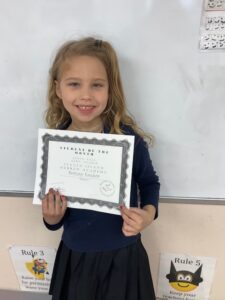
First Grade
Our first graders were busy celebrating and learning this week. Thursday students prepared for the Carnival in honor of Yom Ha’Atzma’ut, Israel’s Independence Day. Students wore blue and white representing Israel’s flag. They also wrote letters to thank those who fought and sacrificed for freedom. Students learned to tell time on an analog clock. They were delighted to state the time by the hour, half hour, and quarter hour. Students also wrote stories and practiced drawing conclusions in Reading. The first graders made beautiful projects in honor of Mother’s Day. We hope all of our 1st grade moms enjoy them.
Second Grade
2nd grade had an action packed week, both academically and socially! We had 2 tests, a math test on money, and a grammar test on helping verbs, linking verbs, and irregular verbs. In the picture, you can see Sloane Garber solving a problem on the board involving money. We also continued reading Stuart Little, while reviewing for our upcoming social studies test on people at work. In the midst of all of that, we had a celebration on Thursday to celebrate Yom Haatzmaut! There was a bouncy house, a slide, music, and food! We partied like it was 1948! (The year Israel declared its independence 😉
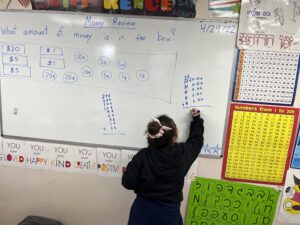
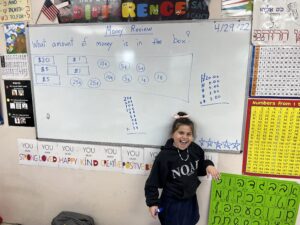
Third Grade
In math grade 3 started doing Number Talks this week. We used mental math strategies to solve difficult multi-step problems and we used think aloud strategies to correct our errors and analyze our mistakes.
In ELA we continued in our shared reading of James and the Giant Peach. We used context clues from the text to help us understand our vocabulary words for this week.
Fourth Grade
This week in math we started a new unit Area and Perimeter. Students found missing sides of a rectangle or square given certain clues. Found area and perimeter of rectangles, squares, and composite figures.
In ELA students identified proper agreement of subject pronouns and present tense verbs. Combined sentences by joining subject or predicate pronouns. Kids completed a few story writings and a poem.
Kids are really enjoying our last class chapter book, The Tale of Despereaux by Kate DiCamillo.
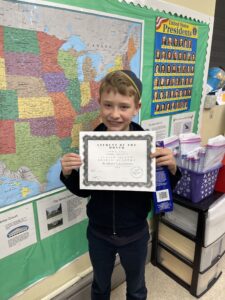
Fifth Grade
5A
Greetings and salutations!
This week in 5A has been busy. The students began their thematic essay over the previous novel. They also began reading their new class novel, The City of Ember.
In Grammar, students were learning about the present-progressive and past-progressive form of verbs.
This week we continued our study of root words and dipped our toes into the 6th grade vocabulary. I am happy to see that so many students rose to the challenge of the new tier of words!
5B
Greetings and salutations!
This week has been busy in 5B. The students began their thematic essay over the previous novel. They also began their new novel, Coraline. I am happy to see the students enjoying the new novel- especially our read alouds.
In Grammar, students learned about linking verbs. This week we also continued our study of root words and dipped our toes into the 6th grade vocabulary. I am happy to see that so man students rose to the new tier of words.
In math, 5th grade started learning about average and line plots.
Middle School
Middle School ELA and Social Studies
6th Grade
Greetings and salutations!
This week in SS the students worked on a mythology project. The final poster is due on Monday. I am looking forward to their presentations!
Furthermore, the students began learning about ancient Rome. We had several enjoyable discussions where we drew parallels between the Roman Republic and the present day United States. I am happy to see the students enjoying learning about Rome!
In ELA, students wrapped up our novel study of Chasing Lincoln’s Killer and wrote an essay about its main character. We learned ten new words as part of our vocabulary study unit, and in grammar, practiced using adjectives.
7th grade
In ELA, the 7th grade continued its novel study of the Giver. Students also practiced with Adjectives and learned 10 new words as part of our vocabulary study.
In social studies, we learned about the inception of our politics with America’s first two political parties. We discussed, in specific, the competing visions of Hamilton and Jefferson for America, and did a primary source discussion of George Washington’s farewell address.
8th grade
In ELA, the 8th graders started and completed our first regents-style essay. We discussed the Enduring Issues as themes, and how to write about them in essay form. In grammar, we focused on comma rules, and on writing longer sentences in our essay.
In Social Studies, we continued our unit on the French Revolution.
Middle School Math
6th grade is learning how to solve algebraic equations.
7th grade is learning how to determine the number of solutions of a system of equations.
8th grade finished chapter 8 and started learning about rational exponents.
Middle School Science
6th gr.
Students learned and classified planets according to their location in the solar system; were able to identify the inner and outer planets; compare and contrast the similarities and differences between Earth and the other inner planets; were able to recognize different types of galaxies.
7th Grade Science
Students are investigating how our body systems work together to maintain homeostasis. They are currently taking a journey through the digestive system and discovering how nutrition and circulation play an important role in supplying our body with the nutrients it provides and how it actually gets through our bodies.
8th Grade Science
Students are preparing for the Living Environment Regent by taking practice exams and working through various aspects of this regent. In addition, students are investigating how energy flows through ecosystems, how biotic and abiotic factors affect those ecosystems and the importance of interdependence within each system.
Jewish History
7th grade spent quite a bit of time exploring how Hashem gave us the Torah, how we know that the Torah is true and how we know that the Torah we have today is the same Torah Hashem gave on Har Sinai.
8th grade compared and contrasted the light of the Geonim with the darkness of the Middle Ages and learned how the Talmud was written, why it was written and why we learn it today.
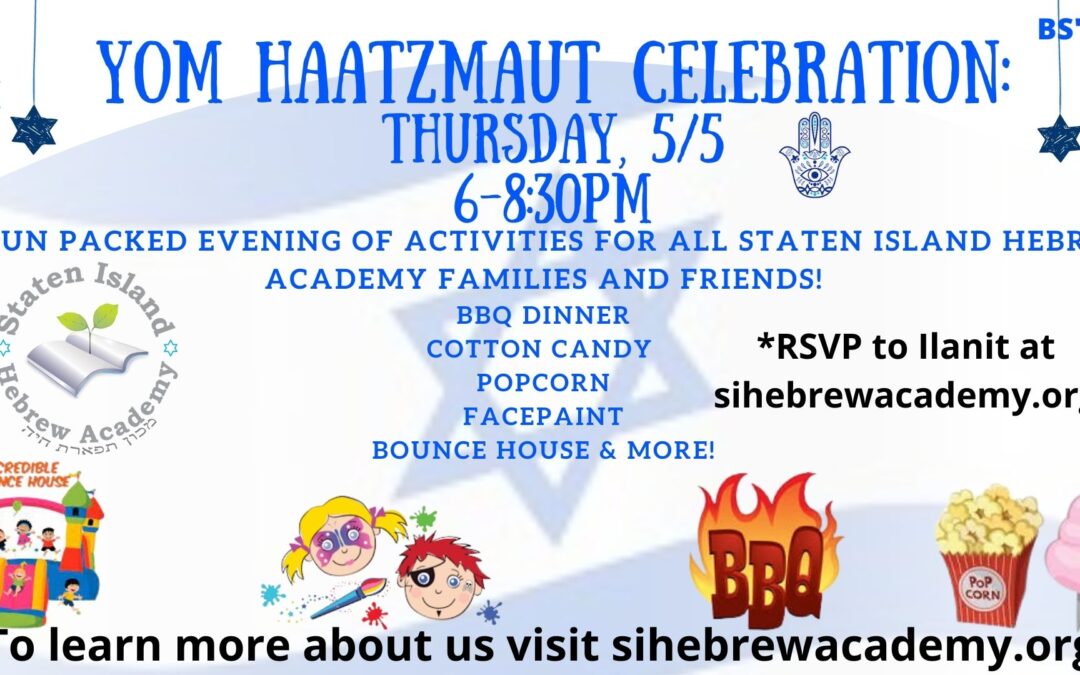
by admin | Apr 29, 2022 | Newsletter
Dvar Torah
Parshat Acharay Mot
In a normal, twelve month year, the Parshiot of Acharay Mot and Kidoshim are read together. This year, because of the added month of Adar Shainy, these Parshiot are read separately, this week Acharay mot and the next week Kidoshim. There is a disagreement, however, as to which Haftorah should be read after the Torah reading each week.
Some are of the opinion that a section from Yechezkal should be read for Acharay Mot and a section from Amos should be read for Kidoshim. While others have the reverse order. Rabbi Soloveitchik disagreed with both of these opinions. He felt that the section from Amos should be read for both Parshiot and the portion from Yechezkal should never be read. He based his explanation upon the opinion of Rabbi Eliezer (Megillah 25 A) who said that we should never read the Haftorah for Acharay Mot because it only deals with the tragedy of Jersualem. That Haftorah is an indictment of the Jews of that time who callously violated the admonitions of the Torah and brought about the destruction of Jerusalem and their exile. Since it has no component of consolation it therefore cannot be read.
Now let us turn to the Haftorah from Amos. Why is that Haftorah so appropriate that Rabbi Soloveitchik felt it should be read on both weeks and what connection is there between the haftorah and the Torah readings of Acharay Mot and Kidoshim?
There is a very unique phenomenon that is revealed in these two Torah portions that, heretofore, was unknown. The fact that the Land of Israel was to be given to the Jewish people was previously promised to our forefathers many, many times. There, however, in the portions of Acharay Mot and Kidoshim, a new dimension was added; that our ability to exist and remain in the Land of Israel was made conditional upon our adherence to the Torah and its mitzvot. Our ability to retain our presence in the land was made dependent upon our commitment and allegiance to Hashem’s commandments.
In Parshat Acharay Mot (Chapter 18, Verse 28) it says for the first time, “That the land should not vomit you out when you defile it, as it vomited out the nations before you.” Again, it is reiterated in the following Parsha of Kidsohim (Chapter 20, Verse 22) “you shall keep my statues and my ordinances and do them, so that the land, that I will bring you to dwell in, should not vomit you out.” Our commentaries all explain that our eviction from the Land of Israel wasn’t a punishment for our sins. Rather, the special sanctity of the Land of Israel is such that it just cannot tolerate sin, and, eventually, vomits out those who violate its specialty. This is what was revealed in both of these Portions.
Now that the Torah has informed us that our stay is conditional on our behavior and if we violate the holiness of the land we will be exiled, it was necessary to have a Haftorah that deals with our return. As the Prophet Amos predicted long ago, “ I will return the captives of my people Israel (to the Land of Israel) and they shall rebuild the wasted cities and inhabit them, and they shall plant the vineyards and drink the wine and make ardens and eat fruit of them, And I will plant them upon their land and they shall no longer be plucked off from the land which I have given them.”
Accordingly, the reading of this Haftorah after both of these Parshiot is crucial and imperative. It reaffirms our bond with the Land of Israel irrespective of exile and “galut” and comforts and consoles the Jewish people by promising them that they will eventually return. We may be exiled for many years, even centuries, yet our ties are never severed and we will on day return. This is certainly the consolation that our Rabbis knew we ought to hear, lest we despair and give up hope.
In our time, when we have seen the realization and fulfillment of the words of the prophet Amos regarding the rebuilding of the Land of Israel, we certainly can take heart and await the realization of all the words of our Prophets and await the Messiah, who was foretold by our Prophets as well. We pray that this should occur speedily in our time.
Rabbi Dr. Richard Ehrlich
Special Announcement
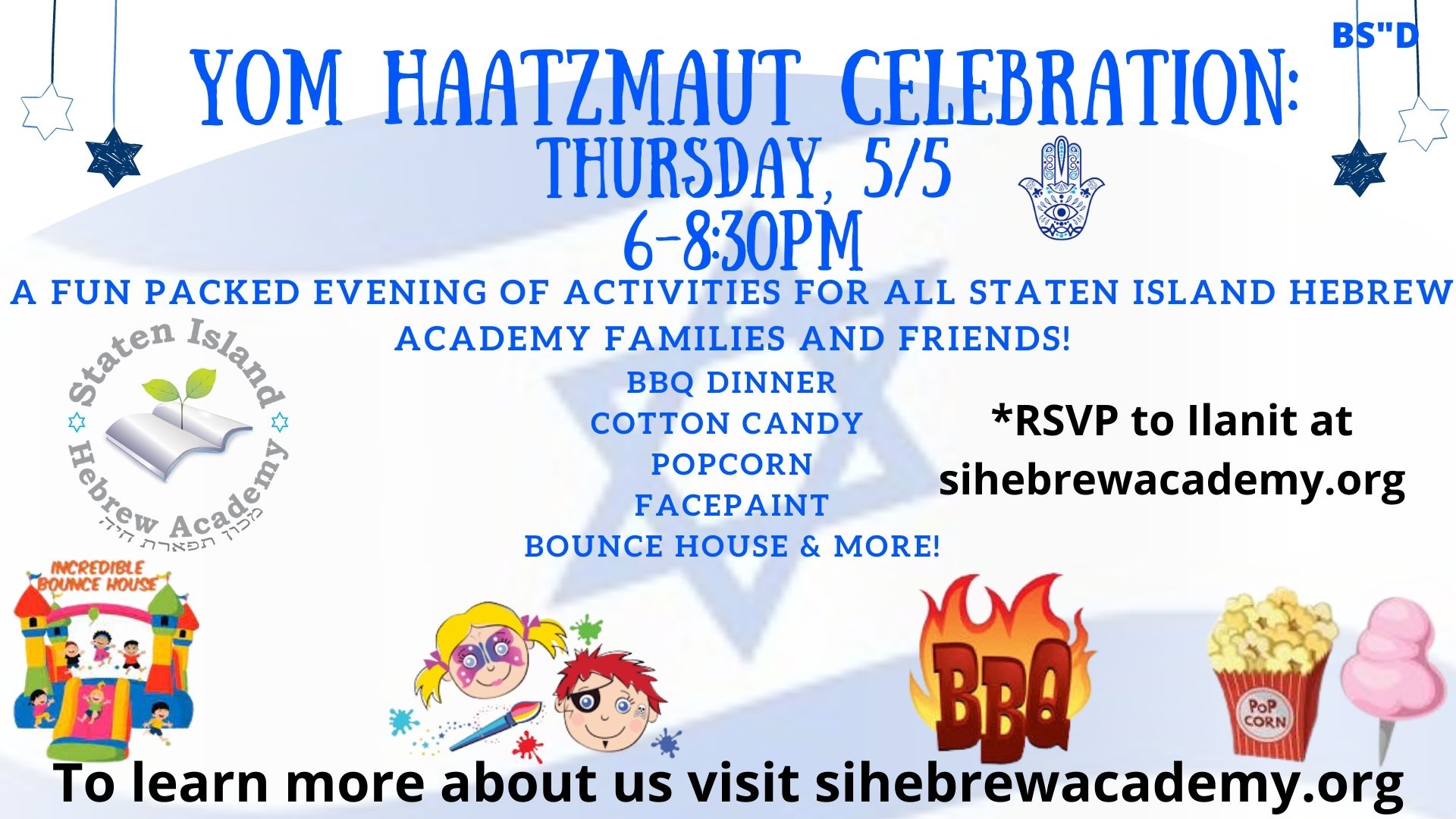
Dear parents.
Thank G-d, we had another wonderful week at Siha!
Next week is a very exciting week. We are starting off on Monday with an exciting Rosh Chodesh Assembly in honor of Rosh Chodesh Iyar.
Stay tuned for the amazing activity your children will be having.
Rosh Chodesh is on Sunday and Monday.
Thursday night, May 5, is the Siha Yom Haatzmaut celebration. Don’t miss it!
See the flyer for the details.
Shabbat Shalom U’mevorach!
Best regards,
Mrs Perlstein (AKA Miss Dershowitz)
Mrs Ferber
Happy birthday to our very own Ms. Ety Perez!
The 5th Grade made a surprise party for Ms. Ety on her birthday! Awesome job, 5th grade!
Judaics
Kindergarten and First Grade
We had a great week back in school!
I was so proud to hear how beautifully the children sang the ma nishtana at home and participated in their seders!
We began learning about Sefirat Ha’omer – counting the days between Pesach and Shavuot in anticipation of the holiday where we received the Torah! We make sure to count the days each day (in Hebrew!) and move the man on our Har Sinai poster.
In kriah, the first graders got right back into the swing of things! We learned how to separate a word into syllables to make it easy to read. The kindergarteners learned the letter kuf. They can read the letters like pros!
In kesiva, the first graders can write the letter lamed beautifully.
Exciting news! First grade began practicing for their SIDDUR PLAY! It is coming out beautiful! Kindergarten can’t wait to start practicing for their graduation next week!
Shabbat shalom!
Morah Chavi
Second Grade
It was wondeful being back at school this week. We learned about Sefiras Haomer. We are counting 49 days till Shavout which is the anniversary of receiving our most precious gift of the holy Torah which is our Guidebook for Life. We are learning prefixes and suffixes of the Hebrew Language and practicing our Kriya skills daily. Shabbat Shalom! Morah Spiegel
Third Grade
Welcome back! Third grade sprung back into learning this Monday excited for the last few weeks of learning. I couldn’t believe how well they remembered so much. We learned about the counting of the Omer. The 49 days we count from Pesach to Shavuot. Each day we say the number of days that have passed until we will get to day 49 which will be the holiday of Shavuot.
We finished our contest for Tefillah- our morning prayers. Third grade really davened so beautifully! We can’t wait to start the new contest on Monday!
We reviewed the Hebrew prefixes and words. We are really almost ready to start Chumash. Our Chumash play is coming up real soon. Details to come next week…!
We are practicing for a performance that the children are so excited about.
Around SIHA all students are trying to become Kriah PROS in reading Hebrew.
I’m sure you’ve guessed! Third grade has the most students who can read Hebrew beautifully!!!! Keep it up!!
On Thursday, for Yom Hashoah our class learned about a thriving city in Europe before the Holocaust. We saw how one town of Slobodka had a big Yeshiva, which from there Torah was able to continue after the war. Together we made a poster with some facts, pictures and creative artwork.
Wishing all a Shabbat Shalom!
Morah Ferber
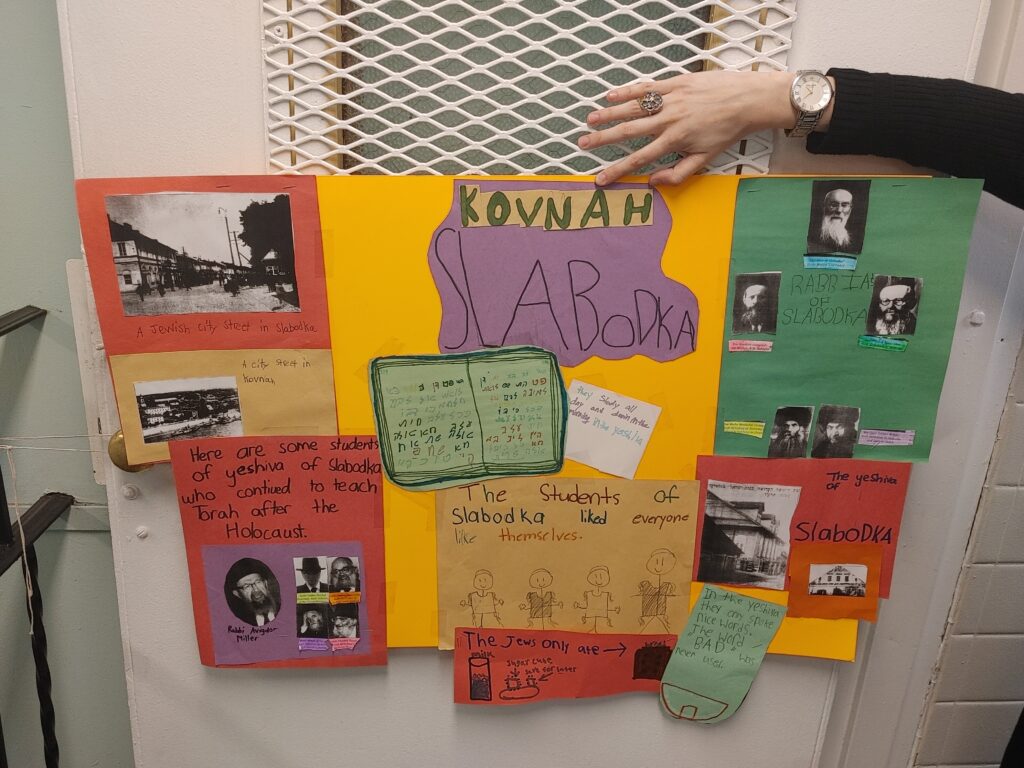
Fourth Grade
What a terrific and enjoyable week it was for 4th grade. Welcome everyone back from the Pesach break.
We learned in Chumash the amazing story of the dream that Avrum had. His children were going to be strangers and slaved in a land that did not belong to them. After that Hashem would take them out and give the Jewish people great wealth. This is the famous story that we just discussed at the Pesach Seder.
We also went through the famous Prefixes and Suffixes of words. We discussed the “Hay or the Lamed” when it comes in front of the Shoresh, root word.
In class we discussed how many “to do” Mitzvot there are and how many “not to do Mitzvot” there are.
One of the highlights of our day was counting the Omer. We used our Math skills to figure out how many days are left to the Chag of Shavuot.
We are very excited about our new “Kriah Pro” contest. We already have a lot of children eagerly waiting to see who will be this weeks winners. We are practicing a lot of Kriah to try to read the best we can.
Jacob was our first “Kirah Pro”. We are very proud of him.
We had Yom Hasha’ah day. We spoke about cities in Europe and their influences on the Jewish nation. The children were very interested in it.
Shabbat Shalom,
Rabbi Berelowitz
5th and 6th Girls
Dear parents.
Thank G-d, we had a very exciting week!
We learned about the special Mitzvot that we do to remind us that Hashem took us out of Egypt.
Mezuzah, kiddush on Shabbat, Shema prayer and shalosh regalim.
A massive Mazel tov to Victoria Kulishevsky upon her Bat Mitzvah!!
We had a spectacular party for her and we enjoyed many delicious treats and munchkins 😉
We learned a beautiful Bat Mitzvah song that taught us all about becoming a Bat Mitzvah. Every Mitzvah we do adds a special jewel to our crown and lasts forever and forever, giving us endless reward and blessing.
We then enjoyed candy jewel necklaces in honor.
On Friday, we learned about the special Mitzvah of Hafrashat Challah, which is a special woman’s Mitzvah.
We then made Challah dough together in a huge bowl. All the girls were a huge help and we had lots of fun!
We separated a piece of dough from the rest and Victoria had the merit to set it aside and make the blessing.
We all then used that special time to ask Hashem for anything we wanted. It was so amazing to watch the girls Daven to Hashem. They are all so amazing. You should be very proud.
The girls took home Challah recipe cards and Hafrashat Challah cards so they can make at home.
Shabbat shalom!
Looking forward to an amazing week.
5th and 6th Boys
Boy, did we begin covering ground!
We learned a new Mishna about what to do if someone began building his Suka with metal or wooden poles that are Pasul = not Kosher to use for S’chach = the kosher covering of a Suka. We also reviewed what we learned prior to Pesach break. We were proud of how much we learned, knew and could recall.
We studied a lot of laws of S’firat Ha’omer and the accompanying mourning laws.
We also covered this week’s Parasha, Parashat Acharei Mot, which discusses the death of 2 sons of aharon the Kohein Gadol. We learned that they entered illegally and that was [at least according to one opinion] the cause of their untimely death. We learned that on Yom Kippur, ALL Korbanot sacrifices were performed only by the Kohen Gadol. He had to dip in the Mikveh 5 times and wash his hands and feet 10 times on Yom Kippur. There were 2 goats used as sacrifices that day. The Kohen would pronounce Hashem’s name [real name. What we usually use is an acronym]. The people would respond with Boruch Shem K’vod Malchuto L’olam Vaed. We are not allowed to eat the blood of any animal [except fish]. We Jews are to have our meat and poultry properly cleaned = washed and salted in order to render it kosher for our consumption. Obviously, this will only help if it is from a kosher species and all the other kosher rituals are followed. We also learned about the Mitzvah of Kesuy Hadam = covering the blood .
This is only applicable to kosher wild animals i.e. deer, and to kosher birds.
We are a special people and not to follow/learn from the other nations.
Happy Birthday to:
Ethan Shenkman, and thanks for bringing in cupcakes, for all.
Happy birthday to:
Lenny Koza, and thanks for bringing in doughnuts.
Happy Birthday to:
Miss Etty Perez
Shabbat Shalom
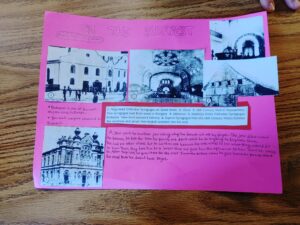
7th and 8th Girls
We really came back to school [academically] rocking and rolling!
We covered a really nice amount in our Parasha, parashat B’haalot’cha. This is the Parasha that we delve into in depth and detail
We covered that; originally the first born boys would have the privilege to be the Kohain and serve in the Mishkan and later in the Beit Hamikdosh.
They attained that status and were obligated to perform the service when Hashem killed the firstborn Egyptians but spared the Jews.
Then after they served the golden calf they lost that privilege.
Since then the Leviim took over. We learned that the Leviim had to study the service for 5 years in order to be entered into the actual service. Then they were able to serve until age 50.
We also learned about Karbon Pesach, and its accompanying laws:eat it with matzah and maror and no breaking bones etc
Next we learned about Pesach Sheini. That means second Pesach. This was for people who had a good excuse. Either they had become Tamei-impure to a dead jew or they were compelled to be too far away to bring their Korban Pesach on the original date.
We also learned how the jews knew where and when it was time to camp/travel in the midbar.
We covered many laws of S’firat Haomer and the laws of the accompanying mourning due to the loss of Rabbi Akiva’s 24,000 students during this time period.
We spent a period with the girls studying and decorating a poster in commemaration of Holocaust Memorial Day.
Stay tuned for more great lessons, next week
7th and 8th Boys
Hope everyone enjoyed their Pesach
We continued with great learning.
Being it is the time of Sefira, we started learning Perkei Avot. We learnt that a person should choose a path that is nice to the person that does it and is nice from people. We discussed the 3 ways of a person does not to come to do a sin.
In our Halacha class we spoke about topics of this time of year “Sefirat Ha’amoer”
We discussed many different scenarios that come up. We counted together in class and hung-up signs to remember which day it is.
We had an inspirational class remembering the Holocaust. We discussed much History related to that day and it was very inspiring.
Topics from the Parsha: Hashem told מֹשֶה to warn אַהַרֹן and theכֹּהַנִים never to enter the קֹדֶשׁ הַקָדָשִׁים . If they do go in they will die, just like נָדָב and אַבִיהוּ. Only on one day of the year, and only one person, was allowed to go into the קֹדֶשׁ הַקָדָשִׁים: onיוֹם כִּיפּוּר the כֹּהֵן גָדוֹל entered the קֹדֶשׁ הַקָדָשִׁים to do the special עַבוֹדָה for that day.
The כהן גדול would wear only 4 of his regular clothing – the ones without gold – when he went into the קדש הקדשים.
2 goats were brought to the כהן גדול . One was picked to be לַה’ (as a קָרְבָּן חַטָאת), and one was picked לַעַזָאזֵל – to be sent away to the desert and pushed off a high mountain.
Hashem told משה that every year, יום כיפּור – י’ תִּשְׁרֵי, is a fast day. It is a day of doingתְּשׁוּבָה so that Hashem will be מוֹחֵל us for our עַבֵירוֹת . However, not nice things that we did to our friends are not forgiven on יום כיפור, unless we ask our friends for מְחִילָה and they forgive us.
We heard the story of רֵישׁ לָקִישׁ who, as a young boy, was a robber, along with two friends. One day he met ר’ יוֹחָנָן who convinced him to us his strength and smart mind for learning Torah. His 2 friends chose not to join him and they continued doing עבירות. ריש לקיש became one of the leading teachers of the Torah in his time. He was careful to always give his money to poor people as a way of doing תּשובה for all the money that he had stolen. Hashem made it happen that he was נִפְטָר on the same day as his old 2 friends. In שָׁמַיִם his 2 friends saw all the reward that ריש לקיש was getting while they didn’t. They complained and said, “He was also a robber like us, why is he getting more reward then us?” Hashem answered them, “There is a big difference between you and him: תּשׁובה. He did תּשובה and you didn’t; now you are in – שׁמים it’s too late.”
Shabbat Shalom,
Rabbi Berelowitz
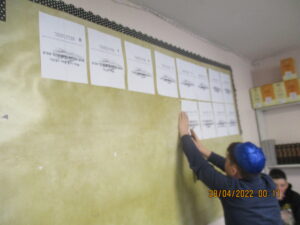
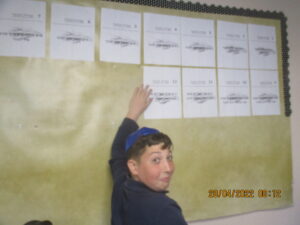
Elementary School
Kindergarten
This week kindergarten became experts at reading A and I long vowel words. They loved dressing up as Bossy E and yelling at the vowels to make the vowels say their name. They read a story about children creating different masks to dress up as characters in a play. They were super excited to learn they will be making a class book that I will send out to be published into a hard copy book. They began writing their first writing piece for their class book. In math they practiced ordinal numbers and positional words for their test. Their favorite game is finding the bear that is hiding in one of the ten backpacks by guessing which place the bear is in. They also learned all about the penny. In science they learned all about what plants need in order to survive. They also did a fun experiment to learn all about how animals can use blubber to survive in cold climates. In social studies they learned all about the community helpers that work in a restaurant by making a pretend restaurant.
.
First Grade
The first grade had a wonderful week exploring fantasy and reality. As we read the story of Mice and Beans students were delighted to see all of the interesting ways the mice helped Rosa Maria. In Math we completed the unit on parts of a whole. Students reviewed the map of North America and identified Canada and Mexico, our neighbors to the north and south. Finally, we made observations about speed and motion in Science. Students understand that force often determines the speed of objects. The first graders also had a great time creating ramps. They noticed the higher the incline, the further the vehicle would travel. It was great fun!
Second Grade
2nd grade had a busy week upon return from the Passover break. We are preparing for a math test on money, a grammar test on helping and linking verbs, and a social studies test on people at work. We are revising and completing our comparative essays as well. We also started a new book, Stuart Little! We are locked in and ready to work, as we approach the homestretch of the 21/22 school year! —
In science, students reviewed and were able to differentiate between a solid, liquid, and gas. Students gave examples of changes in states of matter from heating and cooling; differences between physical and chemical changes.
Mr. A. Ferrera B.S.Ed
Generalist Teacher, 2nd grade
SIHA
Third Grade
An exciting week for 3rd graders; they can’t wait to demonstrate their experiments and projects for the science fair. This week students reviewed chapter concepts about landforms, Earth’s water features, slow and fast changes on Earth’s surface. A test chapter was assigned to students.
Fourth Grade
This week we completed our Math state test and had a great party on Friday celebrating.
In math we are finishing up our unit on geometry. Measuring angles , identifying angles and triangles.
In ELA we started a unit on pronouns and story writing.
In Social Studies we reviewed for our up coming test next week on exploring the West.
In science, students modeled the water cycle and described the changes that occur; identified three states of water; described different kinds of clouds and forms of precipitation.
Fifth Grade
In grammar, 5B learned about helping verbs. They continued to work on their vocabulary study. 5B wrapped up their novel study of Lightning Thief, and completed all of their writing work about that novel.
In Grammar, 5A learned about commas and comma rules. Students also wrapped up their novel study of The Westing Game.
Both classes also completed a special project for Holocaust Remembrance Day.
In science, students were able to compare a physical and chemical change; conclude that physical and chemical properties can be used to identify substances and to separate mixtures.
During science class students were able to identify different substances using strip indicators and identify acid and bases.
Special announcement to Ella Dery for such an amazing lab report about Mixtures and Solutions.
In math, 5th grade is learning about volume.
Middle School
Middle School ELA and Social Studies
6th Grade
Sixth graders wrapped up their novel study of Chasing Licoln’s Killer. In grammar, we learned about adjectives and adverbs. We also learned about connotative meaning of words, and practiced writing with them.
In social studies, sixth grade learned about Alexander the Great as well as discussed the cultural influence of the Ancient Greeks.
7th Grade
Seventh graders had a busy week. They started their novel study of the Giver. They also completed their math state tests!
In Social Studies, Seventh graders learned about the presidency of George Washington. We also learned about the beginnings of political parties in America, and the conflict between Jefferson and Hamilton.
8th Grade
Eighth graders had a busy week! We wrapped up our novel study of Fahrenheit 451. They also started their next novel: The Book Thief! Students also created presentations for Holocaust Rememberance Day and presented their research to the 7th Grade.
In Social Studies, we started our unit on the French Revolution by discussing the causes of and the initial events of the French Revolution.
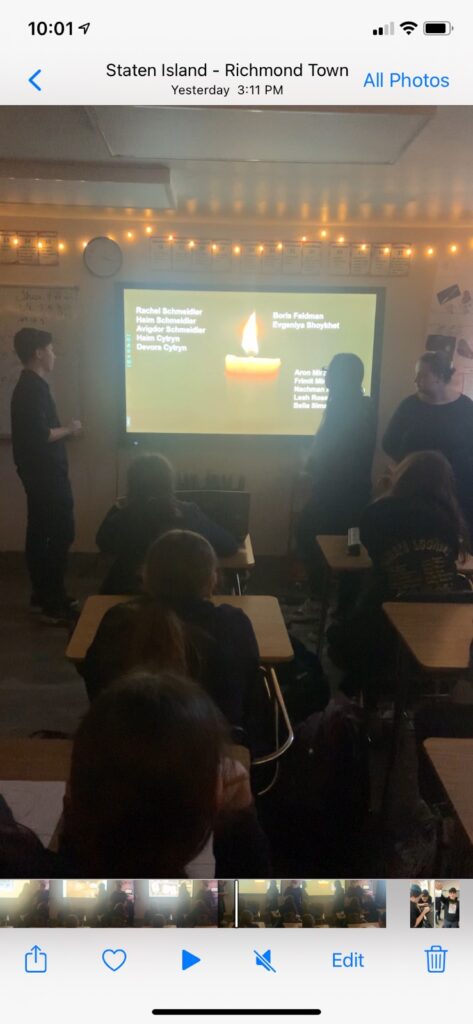
Middle School Math
6th grade started their unit on algebra.
7th grade is reviewing how to solve complex algebraic equations.
8th honors is finishing up their unit on quadratics.
8th is learning about slope and linear equations.
Middle School Science
6th grade
Students learned and classified planets according to their location in the solar system; were able to identify the inner and outer planets; compare and contrast the similarities and differences between Earth and the other inner planets; were able to recognize different types of galaxies.
7th Grade Science
Students are investigating how our body systems work together to maintain homeostasis. They are currently taking a journey through the digestive system and discovering how nutrition and circulation play an important role in supplying our body with the nutrients it provides and how it actually gets through our bodies.
8th Grade Science
Students are preparing for the Living Environment Regent by taking practice exams and working through various aspects of this regent. In addition, students are investigating how energy flows through ecosystems, how biotic and abiotic factors affect those ecosystems and the importance of interdependence within each system.
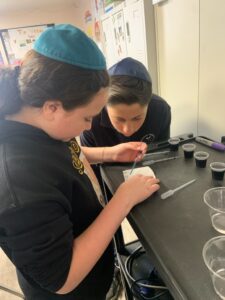
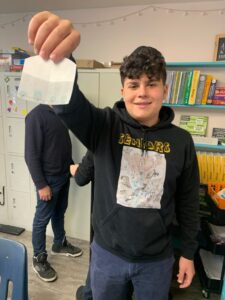
Jewish History
7th grade began learning about the giving of the Torah. We learned why the Jewish people accepted the Torah and how the Torah was given in front of 3 million witnesses who all told over to their children the same course of events. Ilan and Naomi had some very good questions.
8th grade learned about the Talmud, how it was written, why it was written, and how it was structured. We also began learning about Jewish life during the times of the Geonim. The Jews were a shining light in the dark times of the middle ages.
by admin | Apr 29, 2022 | Announcement
Please join us Thursday, May 5th, from 6-8:30 PM.
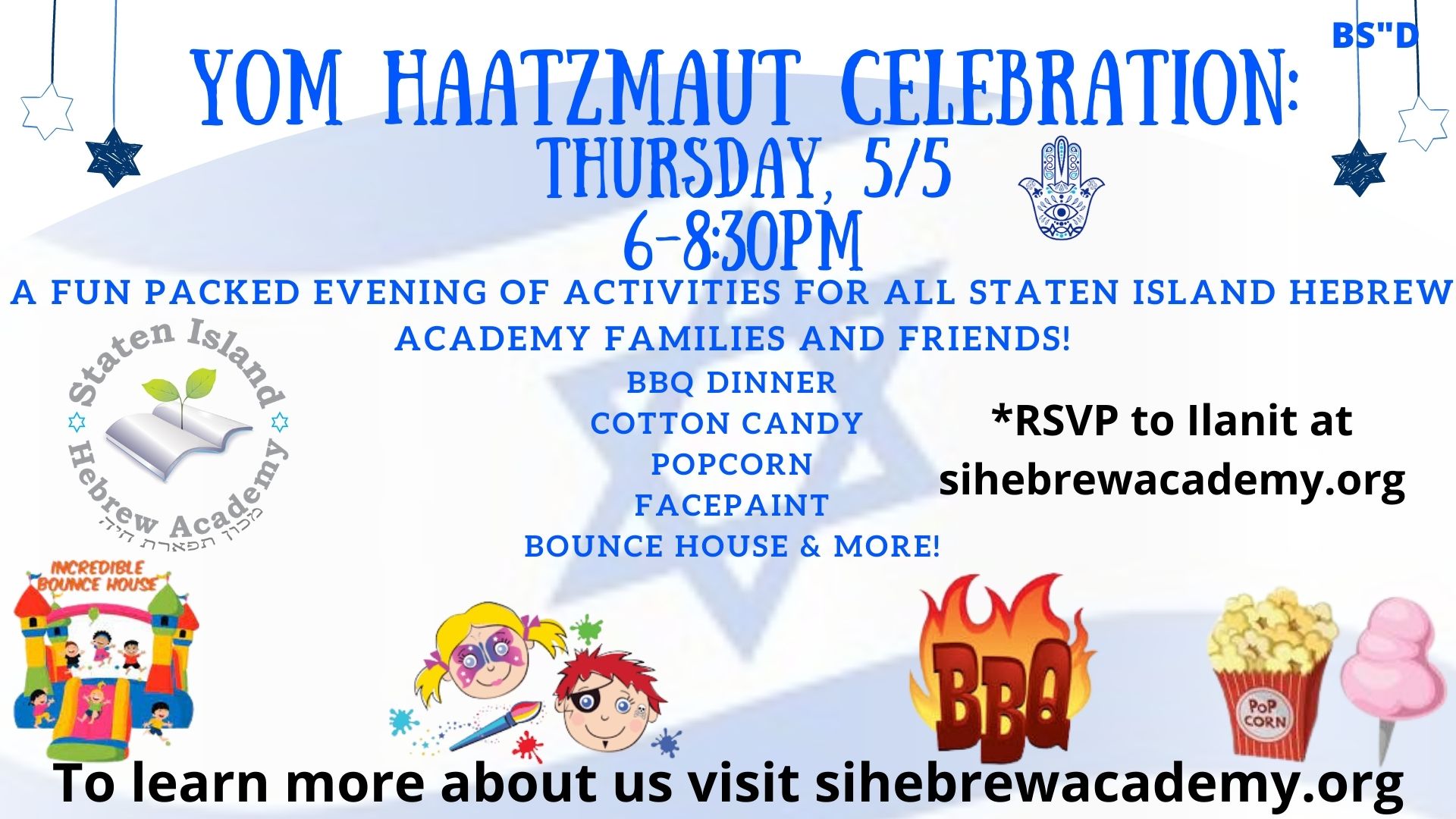
by admin | Apr 28, 2022 | Newsletter
Today was a special day. Yom HaShoah is a day marked by observance and remembrance around the world. At SIHA, our upper elementary and middle school students participated in a special lesson about the Holocaust and its impact on the world.
The lesson started with Dr. Chana Uzhansky, who came to each classroom to share a special video that can be found at the following link:
Holocaust Survivor holds his Great-grandson
In this video, a survivor of the Holocaust holds his great-grandson during his bris at the exact moment the sirens sound commemorating the Holocaust in Israel.
Dr. Uzhansky spoke to the students about the importance of this day. She spoke about what a powerful statement it was to view this video, and to have a beautiful new life join the Jewish nation at the exact moment that Israel and the world remembers the unprecedented attempt to root out the Jewish culture, religion, and people from the world.
After this, Dr. Uzhansky led the students in a special tehillim to mark this day.
Each class did something different to learn about the Holocaust.
5th graders got to read poems and see art created by children who were imprisoned in Terezin. Each fifth grader got a poem of their own. They read the poem, and learned a little about the child who wrote it. They wrote a reflection and shared what they learned with their classmates.
Sixth graders enjoyed a virtual tour of the United States Holocaust Museum. They got an opportunity to look at whatever virtual display they wanted, and after a period of self-directed exploration, they discussed as a class what they saw and learned.
Seventh graders had just finished reading Night, a novel by famous holocaust survivor Elie Weisel. They wrote beautiful essays discussing the themes of the novel. Two especially moving essays, by Naomi Applebaum and Eva Leivent, discussed Elie’s faith. They are linked below.
Eva Levient’s Essay
Naomi Applebaum’s Essay
Eighth graders learned about the Holocaust from a historic point of view. They wrote a research paper on the subject, and then prepared a presentation that would teach others about it. Specifically, the 8th graders presented what they learned to the 7th grade. Doron Glickman’s essay was particularly well written, and the powerpoint prepared by Noga Sayag, Anna Gershkovich, Yaffa Bareket and Lana Mednik was particularly well done. Please find them linked below.
Doron Glickman’s essay
Survivors, Warriors, and Helpers – Slideshow
I would like to end this newsletter with another powerful image. This is a 93 year old survivor putting on his tefillin in front of the gate to Auschwitz, where he was once imprisoned.
Please look forward to our regular newsletter tomorrow for more news from SIHA,
Mrs. Hazen
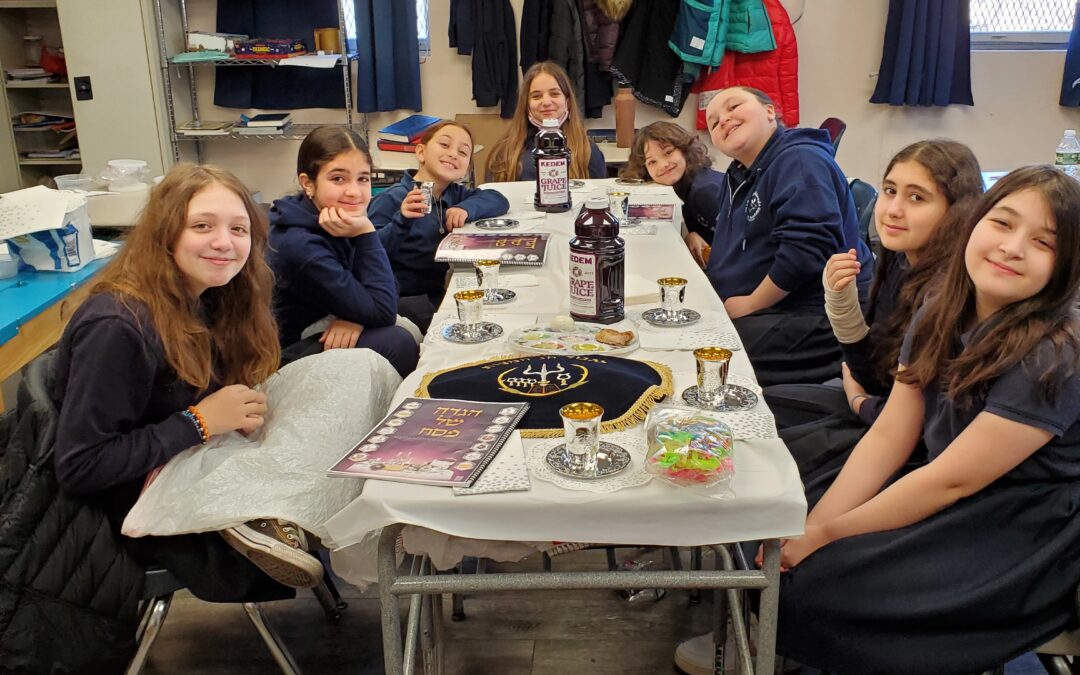
by admin | Apr 12, 2022 | Newsletter
A Pesach Message
By Rabbi Dr. Richard Ehrlich
With Pesach just around the corner our thoughts naturally turn to the Seder and the Haggadah. We begin the Seder by breaking the matzah, and then we make a statement, and we extend an invitation, “this is the bread of affliction that our fathers ate in the land of Egypt. Whoever is hungry, let him come and eat; whoever is in need, let him come and join in celebrating the Pesach festival.”
This proclamation-invitation is problematic for the following reasons:
1. How can we be inviting guests at this point, rather than a week, a day, – or at least an hour before the Seder commences? Understanding how we can extend an invitation at this late juncture becomes even more difficult when we consider that the Seder corresponds to the Paschal lamb eaten in the Temple times. At such times, it was forbidden to invite guests while the Paschal lamb was in progress, because the Seder could only be shared with the pre-arranged participants.So how can this statement be made?
I think the answer to this lies in our understanding of what is Matzah. We know that many different reasons are given in the Talmud for why matzah is called “lechem ohny” (bread of affliction). One reason is because it is the poor man’s bread, since only poor people do not have the luxury or the leisure to allow the dough to rise. Poverty, here, is not limited to one without money, but rather, also encompasses the Jew in exile without our Temple. With this explanation we can now turn to what the Talmud tells us was the cause for the destruction of our Temple and our subsequent exile. The Talmud relates that our present plight was brought about because of “sinas chinum” (baseless hatred of our fellow Jews). The antidote for this sin, which led to our exile, lies in counteracting this flaw. This can be accomplished by acts of kindness; as represented by our “invitation”.
In fact, this is exactly what the prophet Isiah (Chapter 1, Verse 27) says, “Zion will be redeemed through righteousness and its penitents through charity.” When we proclaim this “invitation” on the Seder night we don’t necessarily expect someone to walk in, rather we impress upon ourselves that our redemption can be hastened and realized through acts of kindness and charity. By proclaiming this we emphasize that our bread of affliction, our state of exile, can be rescinded and terminated if we will act with kindness and mercy towards our fellow Jews.
This concept, says Rabbi Joseph Soloveitchik (1903-1993), isn’t restricted or relegated to Pesach night alone. The Rambam (Maimonides) in Hilchot Yom Tov (Perek 6, Halacha 18) actually says this concept applies to all Holidays, “and when he eats and drinks, (on Yom-Tov) he is obligated to feed the convert, the orphans, and the widows along with all other needy people. But whoever closes his front door and eats and doesn’t feed the poor and the bitter souls, doesn’t fulfill his obligation of simcha (joy), only the joy of his stomach.” Rabbi Soloveitchik further says that this law actually is derived from a verse in the Torah, (Devarim 16:11) “And you shall rejoice before the L-rd your G-d, you, and your son and your daughter, your male servants, and your female servants, and the Levite that is within your gates, and the stranger, and the fatherless, and the orphans, and the widows that are in your midst…”
Thus viewed, this wasn’t a proclamation-invitation that was extended when the Paschal lamb was actually eaten at the time the Temple was standing. Rather, when disharmony and hatred resulted in the destruction of our Temple and our ensuing exile, then our Rabbis instituted this prelude to our Seder. Hopefully, we will take this message to heart and rectify our misdeeds; do acts of kindness, compassion, and tzedakah and thereby bring about an end to our long exile. Then we will no longer need to uncover the matzah, symbol of our plight, and proclaim, “this is the bread of affliction,” rather, then we will rejoice and say, “this was the bread of affliction that we once ate when we were in exile.” May this time speedily come so that we can all celebrate Pesach next year in Jerusalem.
Rabbi Dr. Richard Ehrlich
Principal, Judaic Studies
Laws, Timings, and helpful links
Friday April 15:
- Latest time for eating Chametz: 10:43 AM
- Chametz must be burned: 11:50
- Candlelighting: 7:17
- Earliest time to light candles Saturday night and prepare for second Seder: 8:20
Second Days:
- Candle Lighting Thursday Night April 21: 7:24
- Candle Lighting Friday Night April 22: 7:25
- Havdalah Saturday Night April 23: 8:28
Helpful link on preparing for Pesach:
https://oukosher.org/passover/articles/preparing-for-passover/
Helpful link on preparing for the Seder and making a Seder:
How to Conduct a Passover Seder
Helpful link to sell your Chametz:
https://www.torasemesonline.org/
SIHA Mock Seder
SIHA students enjoyed setting up a mock Seder with their Judaic teachers. Here is what they learned:
Rabbi Kuritsky
The boys
Set up their desks for the Seder nicely so that they could interact as though we were a family sitting around the table having a real Seder together. Boys contributed by setting the table nicely with kosot special cups for kidush and the 4 cups, napkins etc.
So boys practiced saying kidush, eating matza, eating maror, and dipping potatoes in salt water etc. We practiced leaning to the left while drinking and eating the matza and the carpas.
It was a beautiful, fun, enjoyable and educational experience.
Happy pesach
Rabbi Berelowitz
We started off with closing the lights and looking for Chametz to the light of a flashlight (not fire).
We set up the table for the beautiful Seder.
We sang together the steps of the Seder of “Kadesh Urchatz”.
Kadesh was said with the first Kos of wine.
We then went to wash for the second step of Urchatz.
The Karpas was distributed and dipped into Salt water.
A Student in the class was chosen to break the Matzo for Yachatz
We sang “Ha Lachma Avya, Ma Nishtanah and Avadim Hayinu.
We then sang Baruch Hamakom and a Student had a chance to explain each one of the four sons.
We went on to V’hei Sheomdah and the Makkos.
Of course we sang the famous Dayainu song.
We explained the 3 things we must say on Pesach, Pesach, Matzah, and Maror.
We drank a second Kos.
We went to wash for Rachtza and ate the Matzah, Maror and Koraich. The students really enjoyed the Matza and the Maror. One child said the Maror was very bitter.
We ate the meal with delicious cookies and soda.
Following that we Bentched and cleaned up.
We sang “Leshana Habba’ah Berushalayim.
Morah Perlstein (Miss Dershowitz)
Morah Ferber
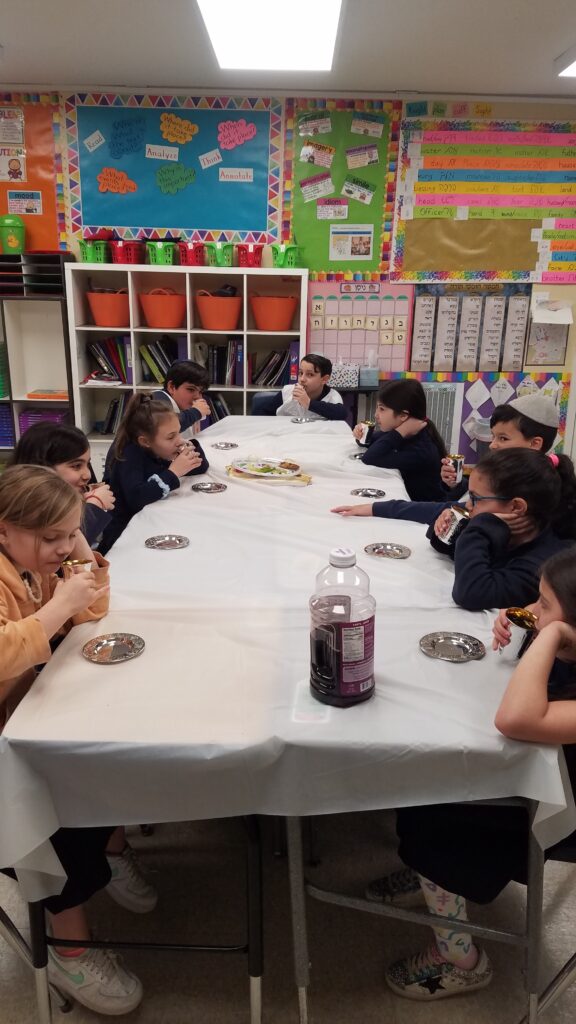
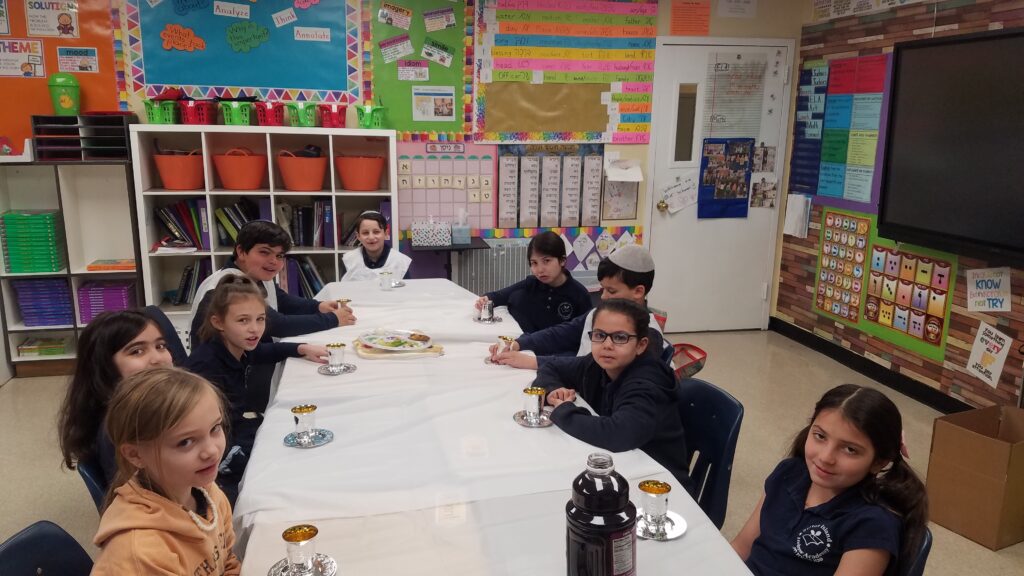
Morah Spiegel
Morah Chavi







